August 31st, 2012. My afternoon journey from London to Venice/Marco Polo went smoothly. I caught the Gatwick Express at Victoria Station, and arrived at Gatwick Airport, on England’s South coast, in 35 minutes. British Airways flies from Gatwick to Venice in only 2 hours, and after landing, getting past the Italian border agents takes minutes, because, unlike their British or American counterparts, Italy’s gatekeepers stamp passports with incurious shrugs about visitors’ origins and intentions. The timing of this visit to Venice was determined by my long-held desire to see the Historic Regatta, which occurs on the first Sunday in September.
During my last stay in Venice, I’d bunked at the Bauer Hotel, which, although a five-star establishment, was ragged about the edges on matters of customer-care and room decor. After mulling alternatives for this visit, I decided to experiment, and reserved 5 nights at the Centurion Palace Hotel, mostly based upon its Grand Canal address…midway between Chiesa di Salute, and the Peggy Guggenheim Collection. I wander on my own nickel and receive no freebies from the hotels, restaurants and other services I use. I don’t normally comment extensively about the hotels I’ve enjoyed, but the Centurion Palace Hotel, in Venice’s tranquil Dorsoduro sestiere, now qualifies as the finest hotel I’ve encountered and thus deserves some spotlighting. Every service in this Venetian-Gothic palazzo is performed quietly and seamlessly and without pomposity. Such gracefulness makes one assume the Hotel’s been around forever, but it’s relatively new: just opened in 2009, after a thorough renovation of the Palazzo Genovese, which arose in 1898 from the foundations of a much-earlier structure. As the Palazzo was being transformed into today’s Hotel, an ancient Roman medal struck with the image the Emperor Hadrian’s beloved Antinous was unearthed, and so “Centurion” was added to the Hotel’s name.
Running a luxury hotel is a complex enterprise; guests arrive with high expectations. There are countless ways in which things can go awry. The Centurion Palace doesn’t put a foot wrong.
The dazzling, welcoming interiors strike a balance between antique and modern. Of the 50 rooms and suites, no two are alike.
And each gilded bathroom (such golden, optimistic impracticality!) is unique.
The Hotel’s thick walls kept my fourth-floor retreat quiet during the day. Venice can be rambunctious! Church bells toll the hours…and each bell has its OWN definition of time (keep track, and you’ll hear many different 6PMs being chimed, minutes apart). Boat engines rumble. Visitors traveling down the Grand Canal for the first time yelp with understandable excitement as they feast their eyes. Gondoliers still warble Volare ( aargh ). Pop music blares from the delivery boats that haul Venice’s supplies: Vivaldi is NOT on their play-list. But, when night comes, Venice’s strictly human voice becomes subdued. The muffled conversation between ocean and man once again becomes audible, as waves slap rhythmically against the timber and stones of the City. At bedtime, after the seagulls roosting outside had flown away, I’d open my three double-wide windows to welcome these watery sounds; sounds that made me feel like a sailor on a most comfortable berth, on the best-run ship in the fleet.
My usual impulse after I’ve arrived in Venice is to throw my luggage into
a hotel room, and then dash outside to get lost in the City’s alleyways.
The comforts of the Centurion Palace challenged these habits: I wanted instead to sink into a deep banquette in the lounge overlooking the Canal, or to rest on a chaise in the sunny, walled courtyard. And each morning, my breakfast-hour in Antinoo’s–the Hotel’s serene white, waterside restaurant–slipped by far too quickly. Because the Hotel is small, Paolo Morra, the General Manager, and Giulio Torelli, his Assistant, are able to see to the needs of each of their guests. When I mentioned my special interest in seeing the Regatta Storica, these gentlemen gave me a private perch on their dock, and so I had an unobstructed view of the Spectacle: my Regatta photos appear toward the end of this Chapter.
September 1st. With another day to wait until the Regatta, I decided to visit Biennale Architettura 2012: Common Ground, which had opened 5 days before. Last year, I reported on the Biennale’s Contemporary Art extravaganza, and now I wanted to satisfy my curiosity about the Architecture-side of the Show, which receives far less press coverage, and, as I discovered, MANY fewer visitors.
The contrast between the packed carnival of 2011’s Art Biennale with this year’s echoingly-empty Architecture exhibit was stunning. Bad weather couldn’t be blamed for these unpopulated avenues in the Giardini! But Venice,however festively it puffs itself up, always exhales a melancholy air. I adjusted to the autumnal quiet and began to enjoy the empty galleries and pathways, and especially my clear views of the exhibits.
As always, the Scandinavian Pavilion, which was built 50 years ago, charmed me.
Finns, Swedes and Norwegians presented their versions of “Light Houses:”
The exhibits in the British, American, French and Canadian pavilions were forgettable, although the Canadian show was certainly great-smelling, due to
stacks and stacks of freshly-sawn lumber.
But the Japanese and Russian exhibits, though stylistic polar opposites, were stunning. Those countries haven’t forgotten that architecture is about creating environments that are both inspiring and practical; their intellectualizing isn’t an end in itself.The genesis of Japan’s exhibit is worth telling. On March 11, 2011, the coastal town of Rikuzentakata was destroyed by the Great East Japan Earthquake. In October of that year, 3 architects—Kumiko Inui, Sou Fujimoto & Akihisa Hirata—met with survivors in Rikuzentakata, proposing their “Home-for-All” project. The architects asked how the forests of cedar trees which had been flattened by the tsunami, and then pickled in sea water, might be reused to build homes. How might simple, new dwellings arise?
Each of the wooden poles we see in the Japan Pavilion is one of those felled cedars. And each tiny, pole-house model is an architect’s response to conversations with survivors about their dreams for resurrecting their normal lives. These drowned, Japanese trees, now brought as emblems of hope to Venice —which is itself a city that rests upon submerged trees—made the Biennale’s most powerful statement.
From the rustic power of Japan’s exhibit, I continued to the Russian Pavilion…
..where technology and light and aspiration coalesce. The interior of Russia’s stunning Pavilion is completely covered in QR Codes that are ever-changing, creating a space that’s dark, and then dim, and then varyingly bright. Visitors are loaned tablet devices, and each of the illuminated Quick Response Codes that blanket the domed space then delivers website details about the country’s Planned Science City, which will be built near Moscow, by 2017. All very optimistic, and sci-fi. But after fiddling for a time with my tablet, which had narrowed my vision to a square foot of space, I returned the device to the nice young ladies at the entrance. I spent the rest of my visit widening my eyes to the entirety of the spectacular and sensual room, a space which needed no explanations. Russia’s effort had inspired me in the same way that Rome’s Pantheon does…with its oculus, and mercurial light.
Other exhibits of note were Poland’s, where a simple space is continually transformed by sliding, translucent fabric panels.
Australia’s, where the pavilion itself is beautiful to behold:
And Venice’s which, oddly, celebrates the work of the British architect Nicholas Hawksmoor:
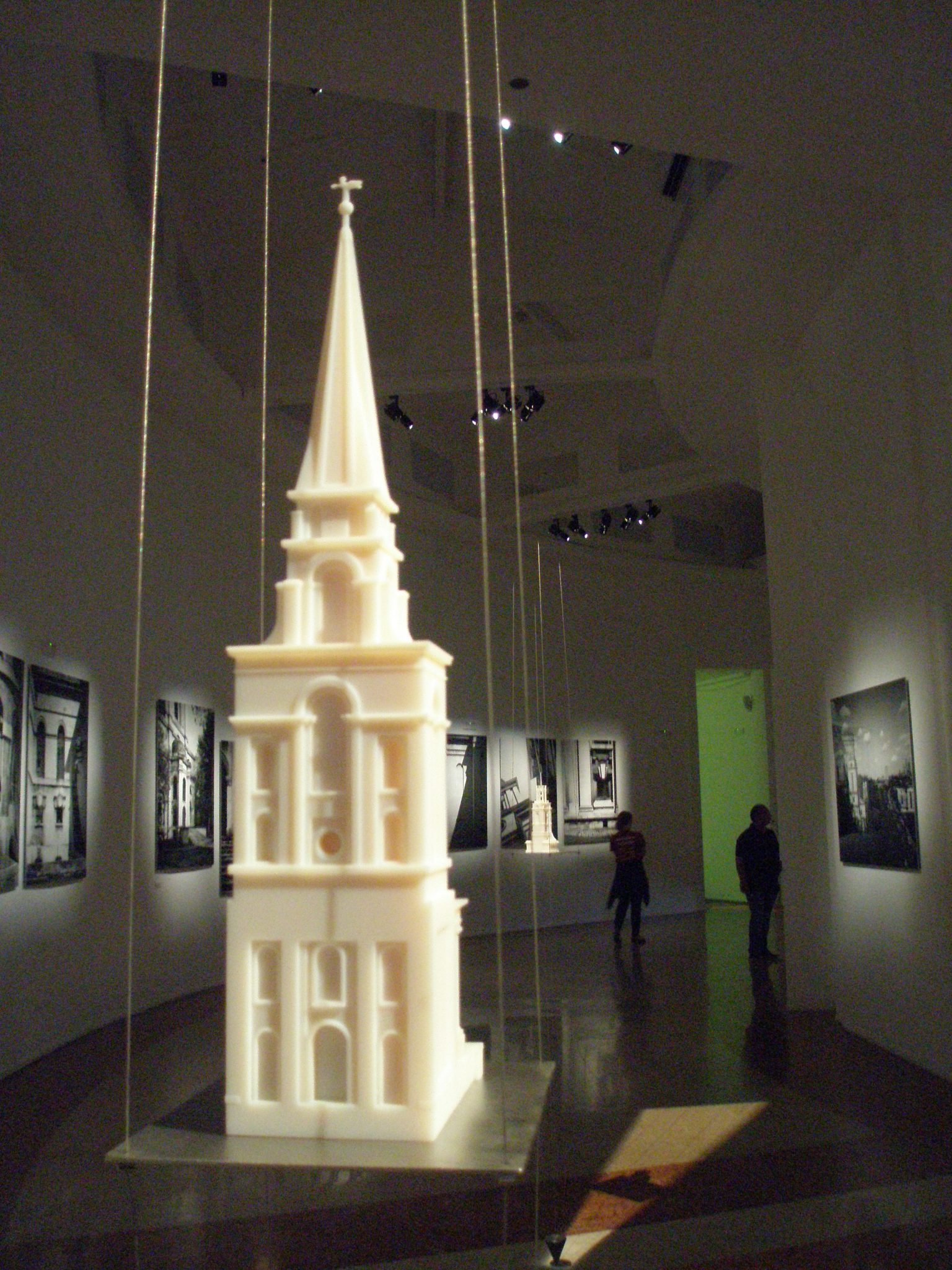
After methodically visiting each National Pavilion, I set out toward the Arsenale section of the Biennale…
…where a jumble of displays fill the cavernous spaces…
….and a particularly fine sculpture by Radix—titled “Aires Mateus: an
architectural response to the setting of the Gaggiandre, the covered docks
of the Arsenale, designed by Jacopo Sansovino, between 1568 and 1573 ”—
more than holds its own in the great, outdoor expanses.
SO, why the miniscule attendance, at this year’s Architecture Biennale?Is architecture irrelevant? I trained as an architect, and fervently hope not. But
the mostly-pallid Biennale presentations, many of which were either jittery videos of architects pontificating, OR rooms with manifesto-plastered walls, suggest that architects have lost the ability to explain their mission to the greater public. Venice, a setting of incomparable architectural magnificence, reminds us of what cities can evolve into. What we need now, especially when global resources are stretched so thin, is to be sure that we’re understanding clearly what public buildings can and should be, while avoiding the mediocrity that design-by-committee always yields. The environments we build must be functional, but must also lend sparks of delight. Buildings that give shelter but no pleasure are wasteful because they’ll all become wrecking-ball targets.
September 2nd, 9AM. Regatta Sunday began, hot and sunny. But the Grand Canal wouldn’t be cleared of its normal traffic until the afternoon, and I still
had some Dorsoduro-exploring to do. I left the Centurion Palace and headed to the Punta della Dogana…
…and then around to the glittering Giudecca Canal…
…before swinging inland again, along the deserted Rio Tera al Salone…
…which reminded me of a de Chirico citiscape. It’s this very stillness that
draws me back to Dorsoduro. Progressing to the Zattere, I lucked out: the crew of one of Venice’s rowing clubs was preparing their long boat for the Regatta. Here’s the process, as they undocked their vessel:
Feeling privileged to have seen this, I continued along toward Campo Santa Margherita…
…and afterward made the acquaintance of this handsome fellow.
Having gotten only mildly lost, I resurfaced at San Toma, where grandstands for the afternoon’s Regatta were still empty.
3:50PM, Sunday. Settled onto my deep, marble seat on the Centurion Palace’s dock, I waited for the Regatta to begin. At 2:30, the Grand Canal had been cleared of its normal traffic. The late afternoon air felt heavy, fuzzy, and slightly-damp, but refreshing. The water had become still, and the natural smells of the Canal—salt water and that slight wisp of funkiness—washed away the diesel odor that prevails on normal days. Policemen on jet skis made their final sweep…
…and young mariners, the racers of tomorrow, practiced their navigational skills.
Church bells struck 4, and, from the middle of the Basin, a pounding of drums and a flourish of trumpets sounded. The Regatta Storica, which took place for the first time in 1315, was once again headed into the mouth of the Grand Canal. The Historical Parade began, led by the Bissona-Serenissima…
…followed by the highly-decorated Bucintoro vessels, and then the boats of the Venetian rowing clubs:
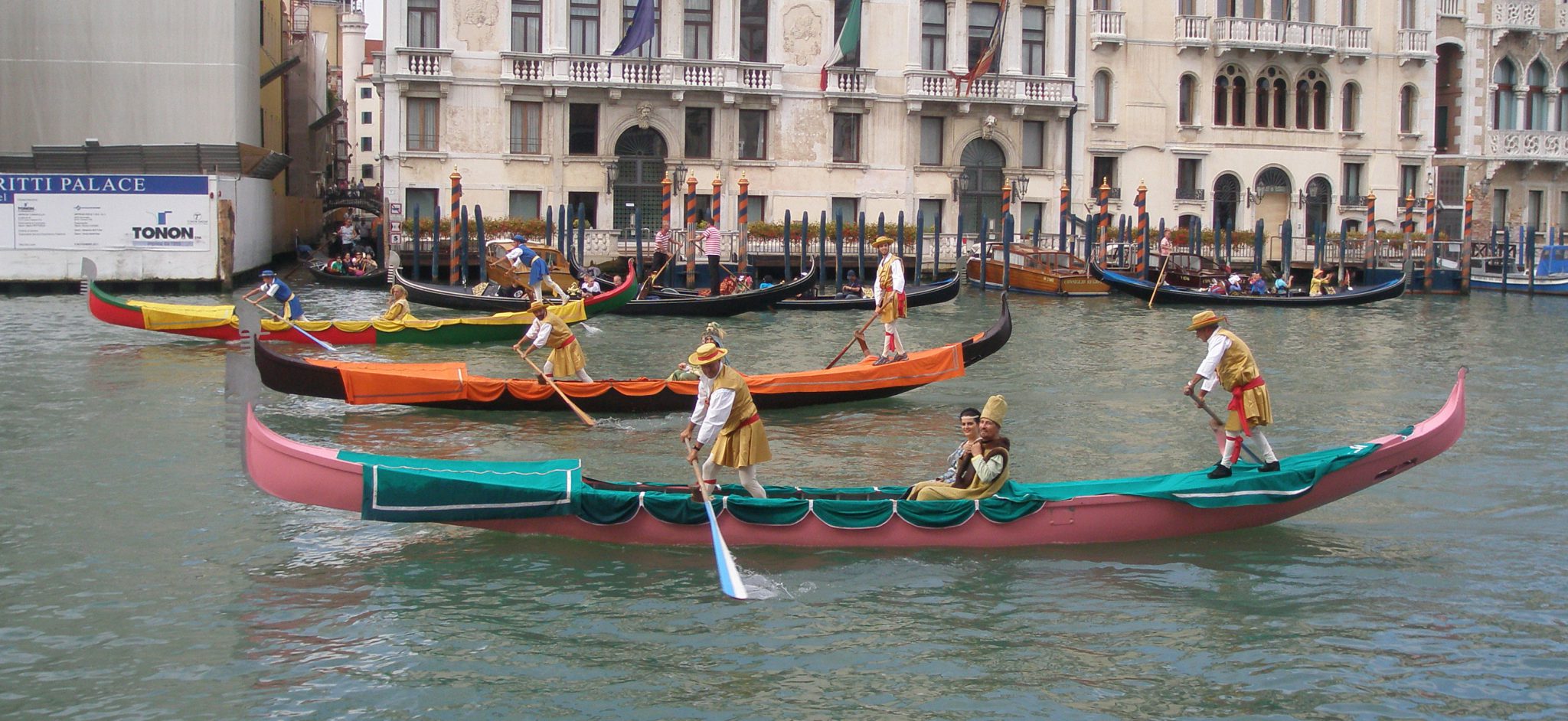
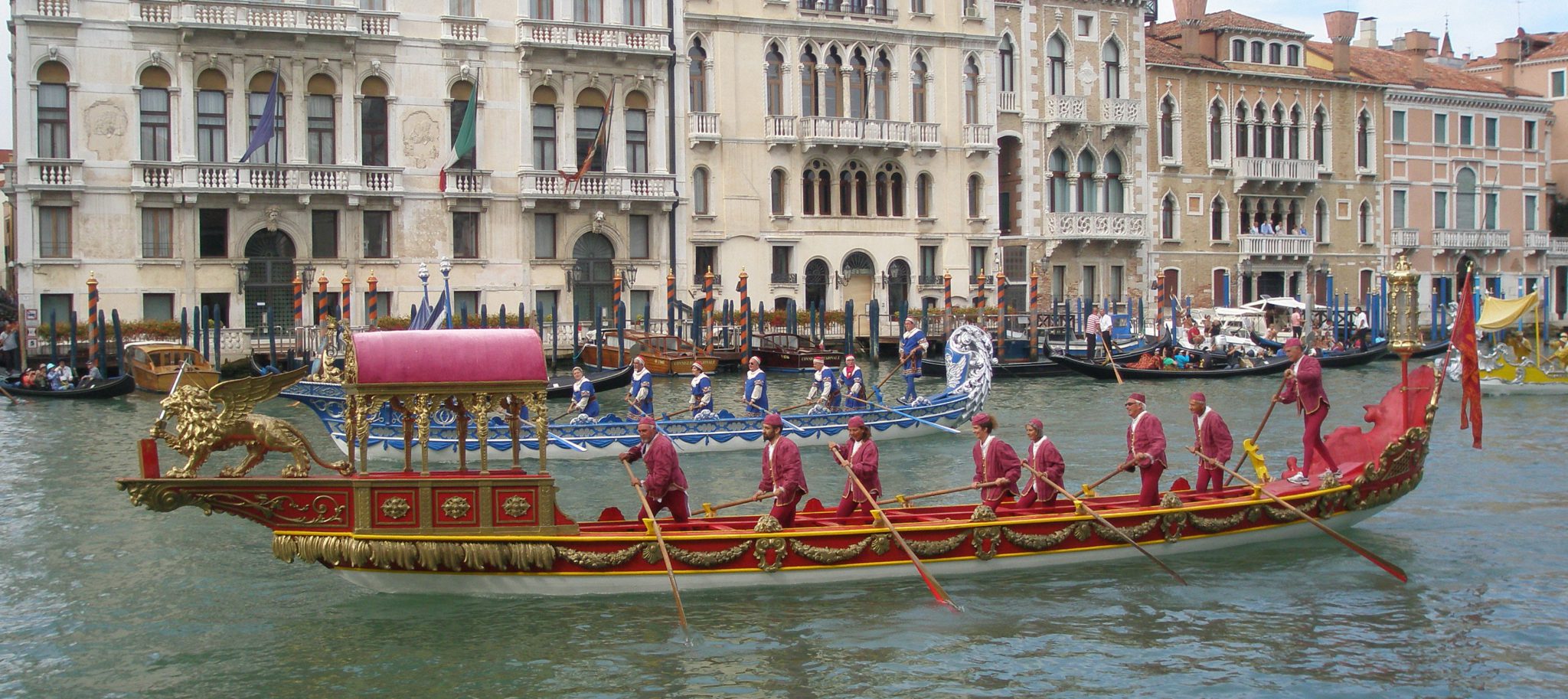
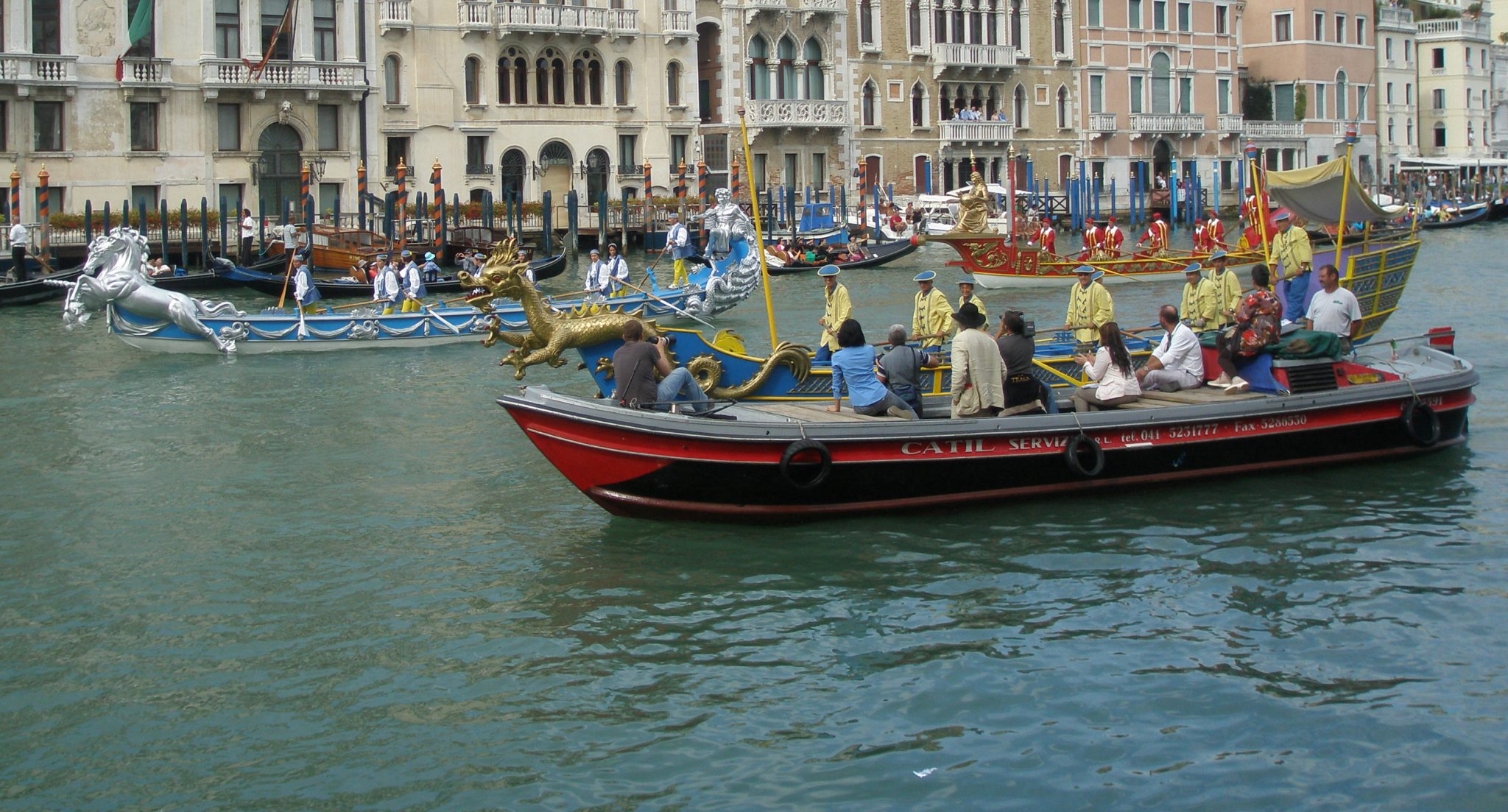
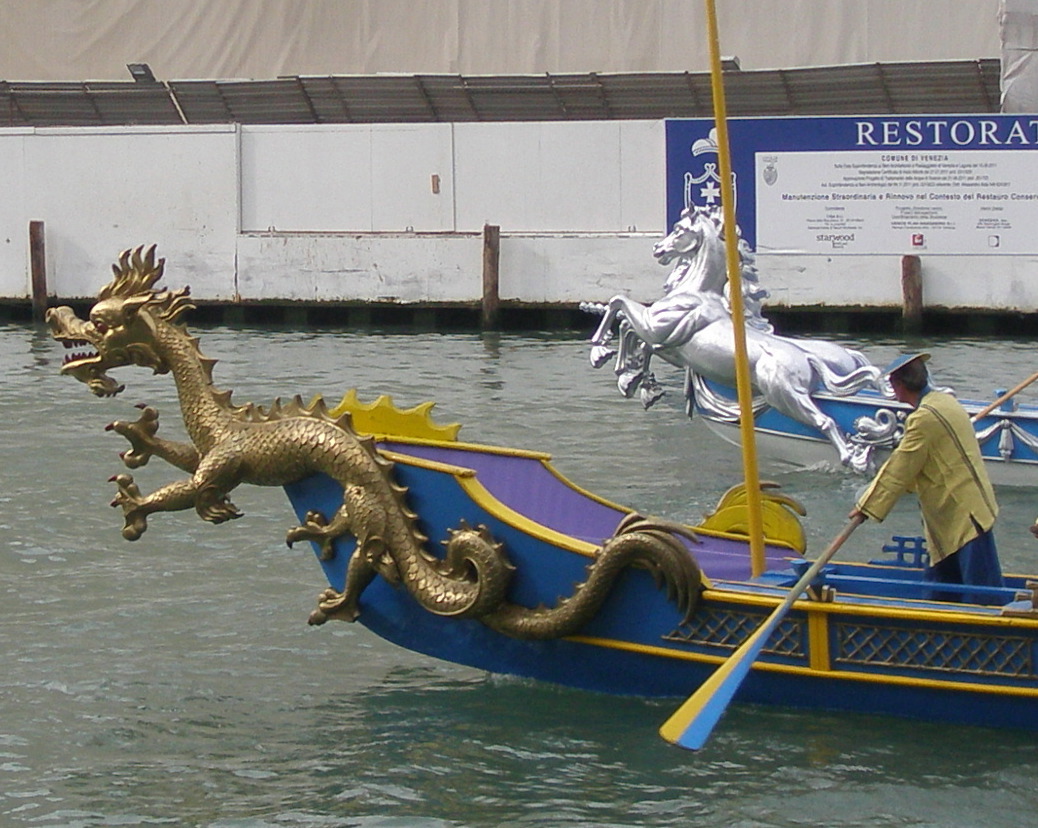

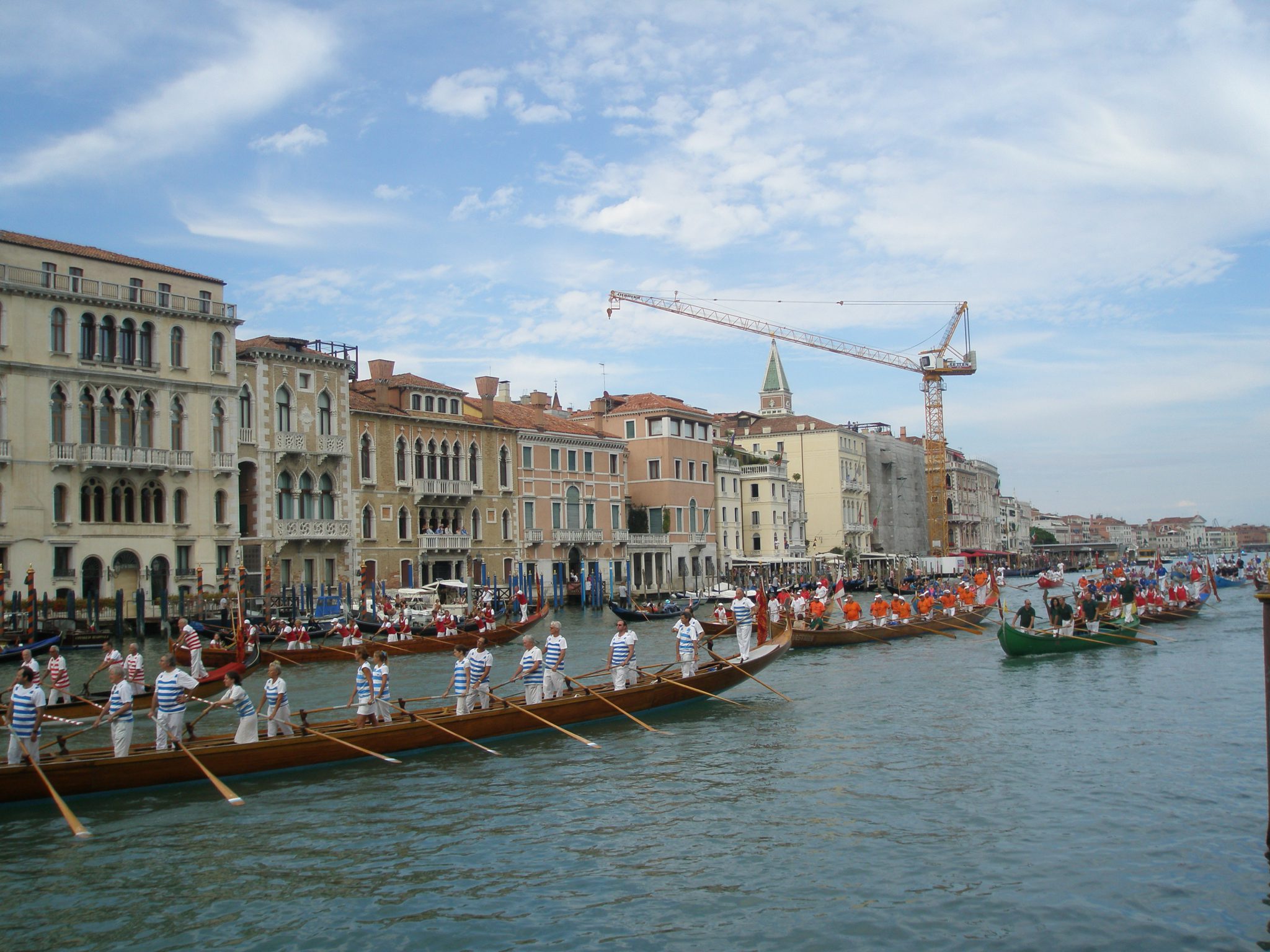


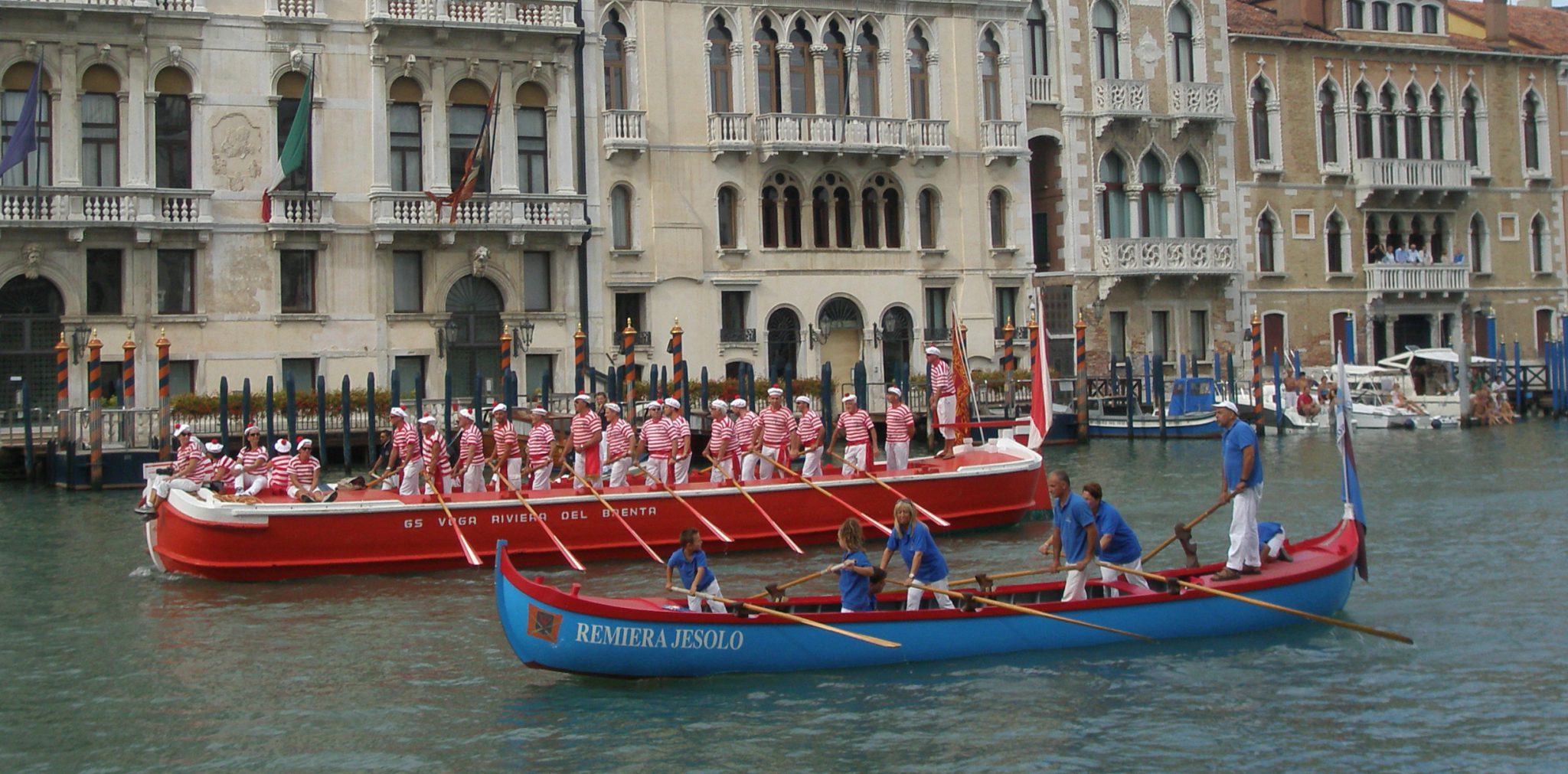
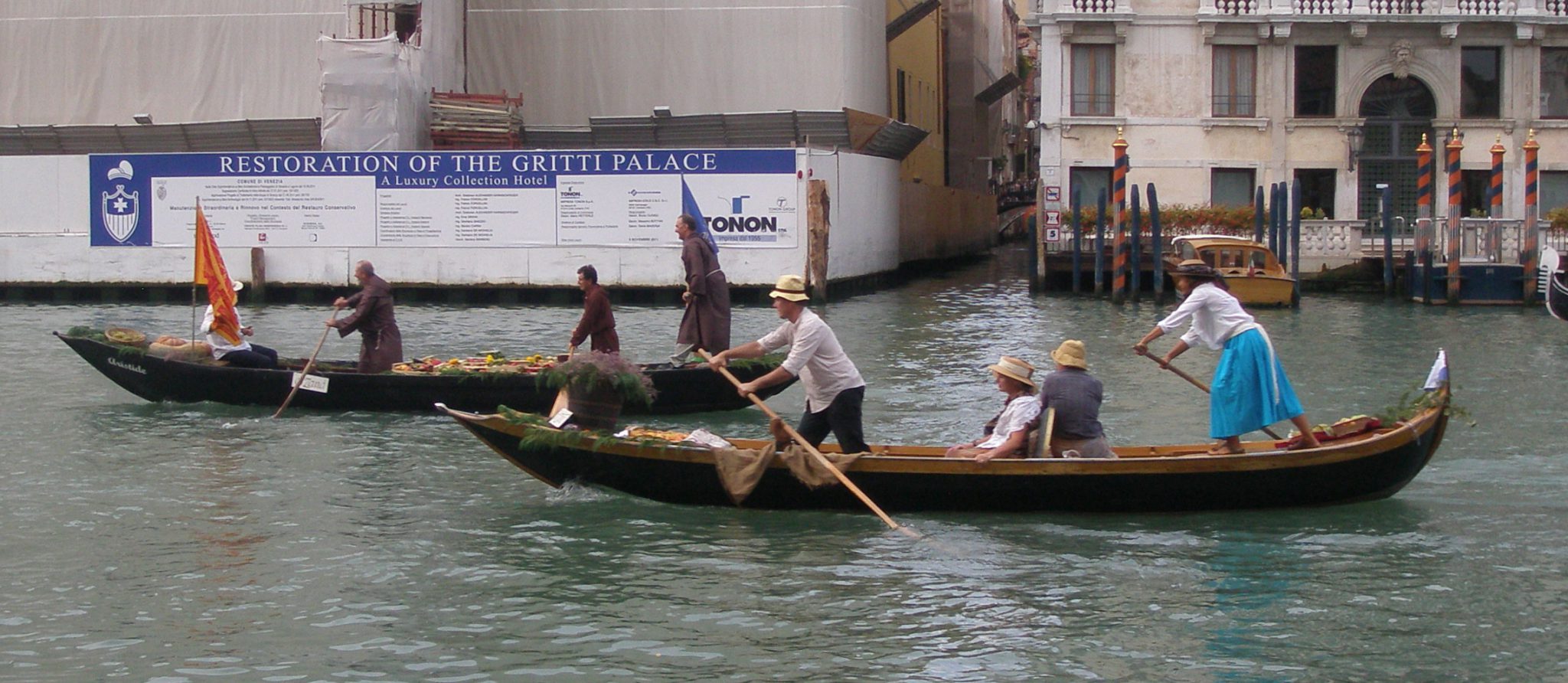 This first excitement was only the beginning: the races were next. A huge choir assembled on the steps of Chisea di Salute, and their voices, singing folksongs, echoed along the Canal. At 5:30PM, the first racers appeared: the young rowers, on twin-oared Pupparini.
This first excitement was only the beginning: the races were next. A huge choir assembled on the steps of Chisea di Salute, and their voices, singing folksongs, echoed along the Canal. At 5:30PM, the first racers appeared: the young rowers, on twin-oared Pupparini.
At 6PM, the women racers passed, powering twin-oared Mascarete. The lowering sun shone directly into their eyes, and they squinted as they rowed.
Fast behind them followed 4-oared men’s boats. With 4 oars, the boats shot along the water’s surface.
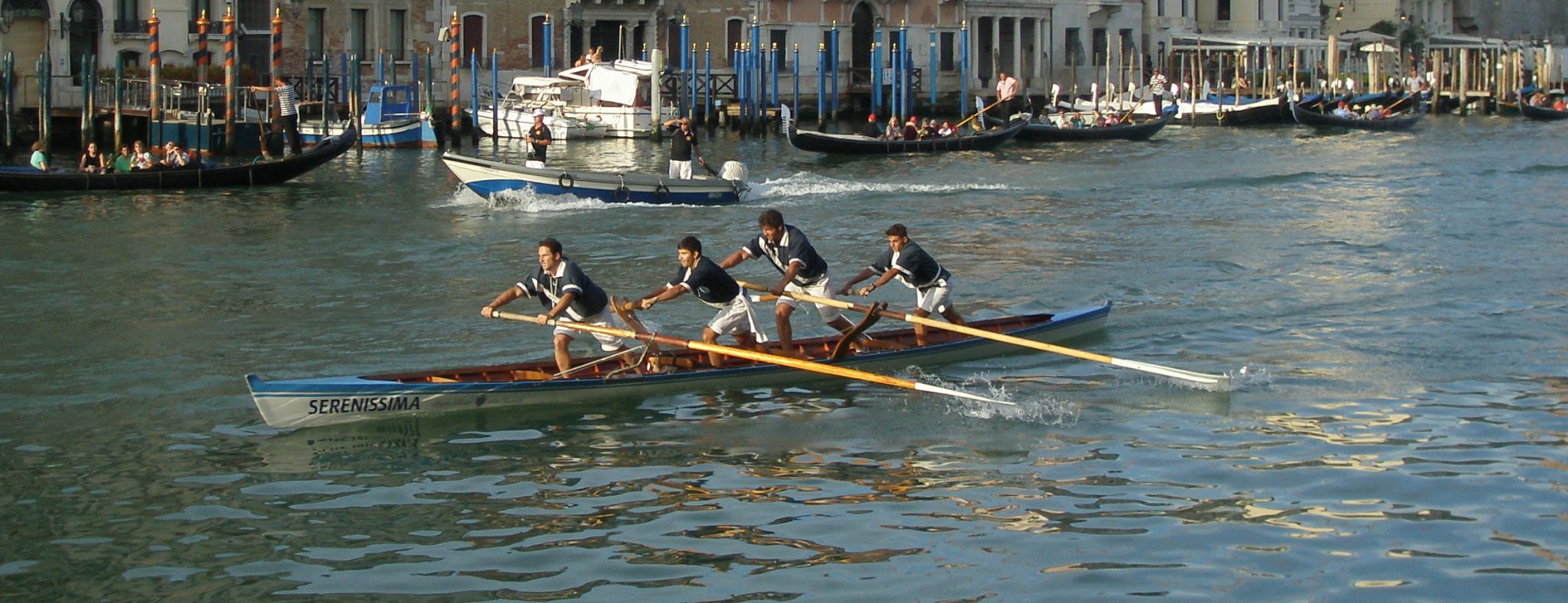
AT 6:30PM, the heavy 6-oared Caorline boats flew by: Very quickly… VERY exciting.
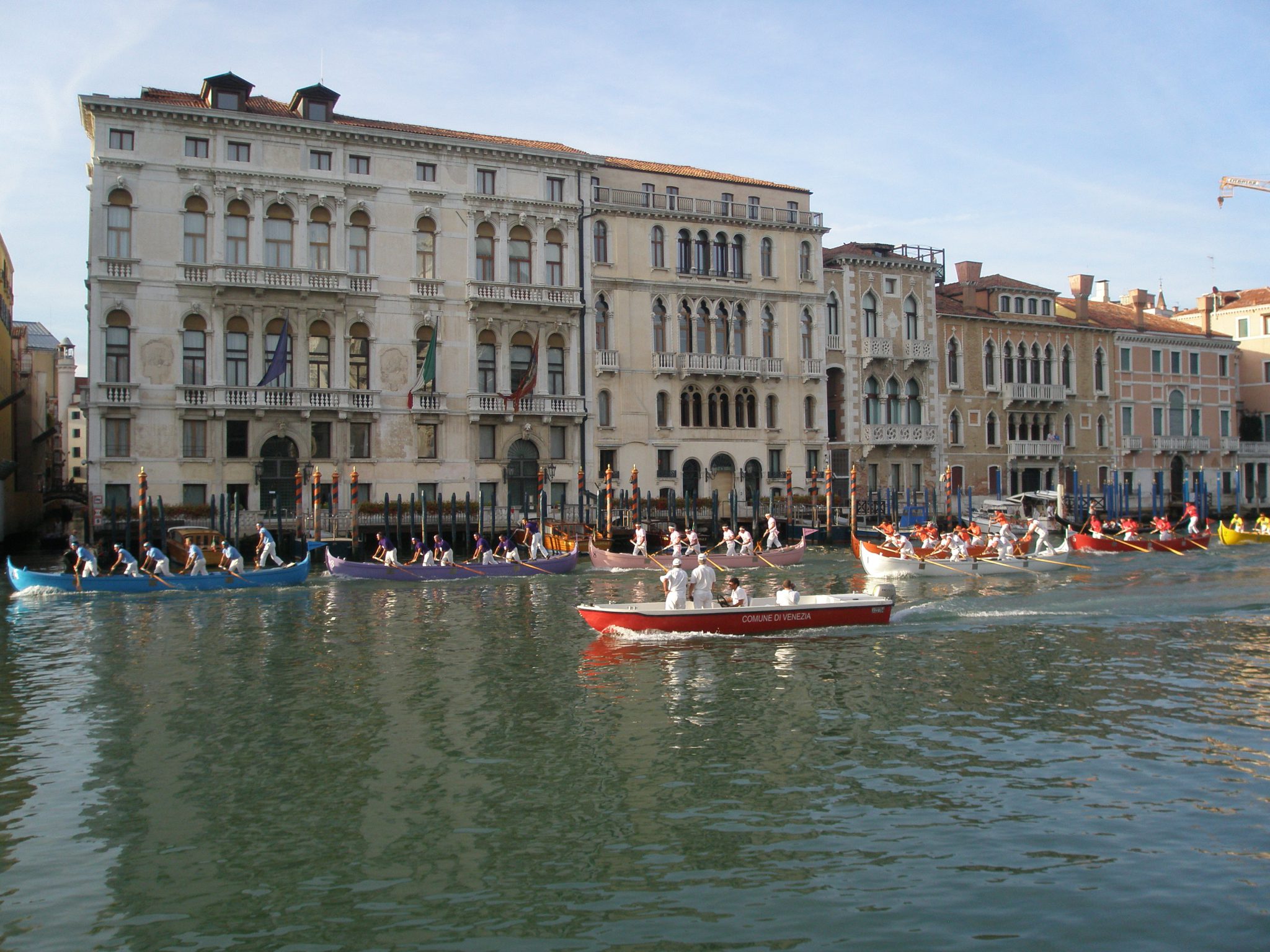
 Just before the gondoliers’ Races began, the young racers of tomorrow, who’d
Just before the gondoliers’ Races began, the young racers of tomorrow, who’d
been lingering next to my dock, pulled away.
Exhausted from my long day, I retired to my room, and watched from my windows as Venice’s fastest gondoliers propelled their twin-oared Gondolini
along the Canal.
The Regatta over, police brought up the rear…
…followed by civilian celebrants.
As dusk fell, the Regatta boats headed back toward their moorings in the Arsenale…
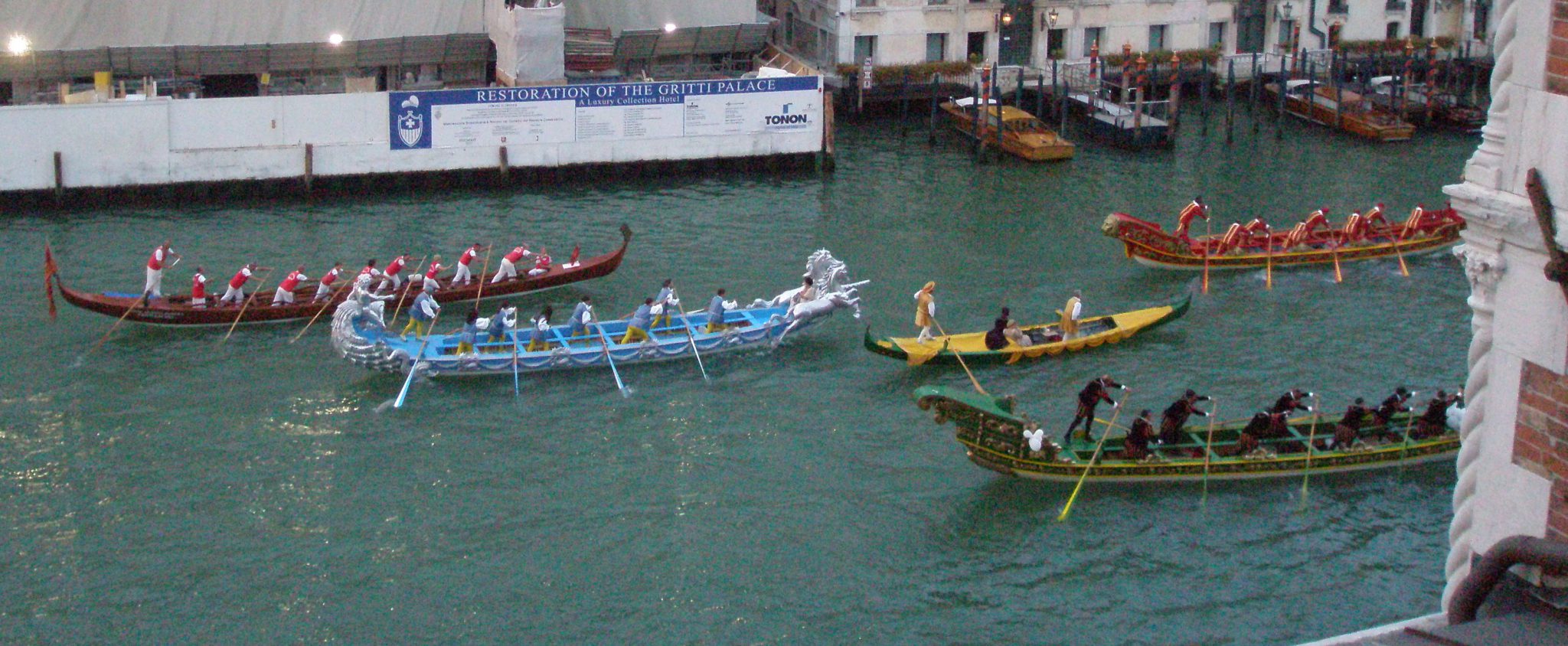
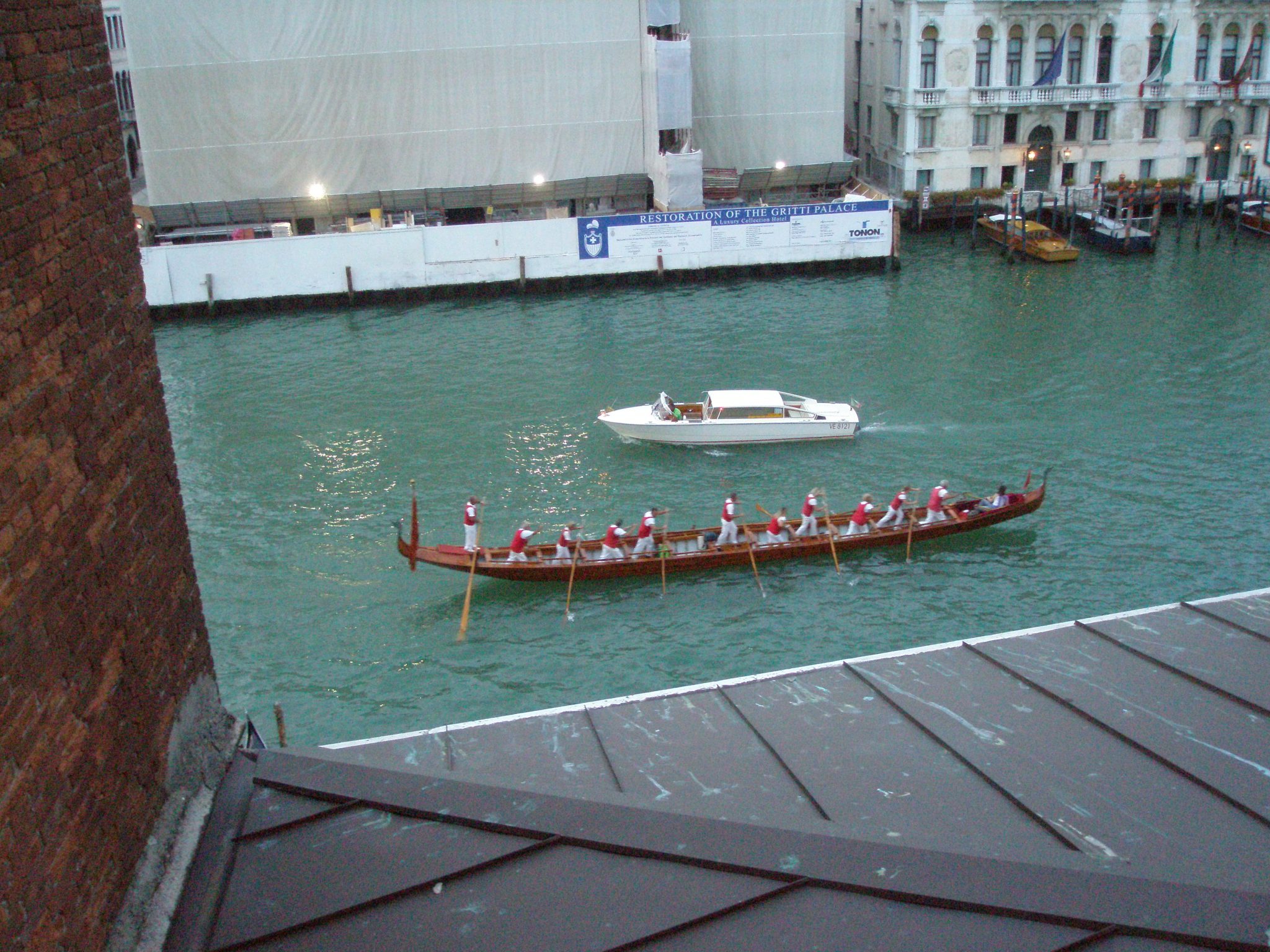
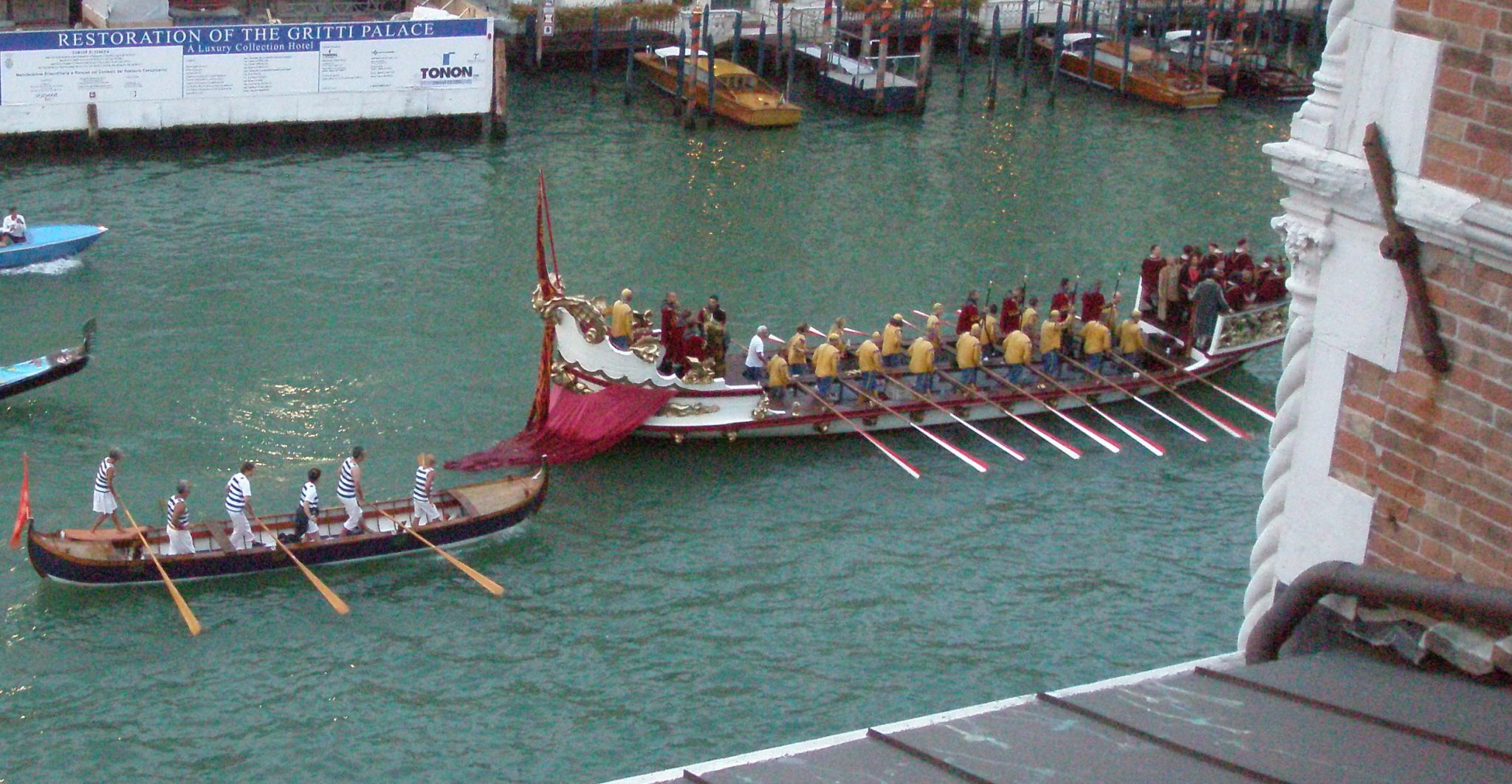
…while Regatta stragglers, and normal traffic, jostled for position on the Grand Canal.
September 4th. I’d spent most of the previous day on Alilaguna boats, chugging to and from the mainland Airport, where I collected my friend Donn Brous, who I’ve known since we were girls. Donn had flown over from Georgia to join me for my upcoming Florentine Week. Since she’d have just this single day in Venice, I thought we’d do some serious strolling. And so, for no particular reason, we set out toward La Fenice, the jewel-like opera house. 8.50 Euros got us inside for a self-guided tour, and as we began to climb the stairs to the Theatre, we heard music. We found seats in the Royal Box…
…where only a few other visitors had plopped themselves. On the bare stage,
singers and their director, accompanied by a pianist, were rehearsing and blocking RIGOLETTO, which was on the upcoming schedule ( Sept 14—Sept 29).
When we arrived, Rigoletto and Gilda were working through what I knew to be their first duet; we’d stumbled upon a full-sing-though (!) . For
the next several hours, we listened to the remainder of the Opera. The baritone, who had a wrestler’s stance, wore a T-shirt, sweat pants, and lime-green Nikes.
The soprano was bundled up in a wooly sweater, jeans skirt, and scuffed boots. But when they opened their throats to sing, they were transformed. An hour further into the principal-cast rehearsal, my chin started dripping, and I realized I’d been silently weeping at the beauty of it all. The music, which Teatro La Fenice commissioned Guiseppe Verdi to write (in 1850), sounded like it was happy to be back home, in this little Theatre where it had been born.
After an afternoon of wandering through the perplexing byways of San Polo, where, for the first time ever, I didn’t get lost, we returned to Dorsoduro, for dinner on the Zattere waterfront. Caffe La Piscina, the restaurant attached to Pensione La Calcina: Ruskin’s House (where John Ruskin stayed in 1877), has a large terrace…
…and offers a wide range of vegetarian dishes, along with equally-wide views of the obscenely-large cruise ships that lumber through the Giudecca Canal.
Just like those cruise-ship passengers who we watched that evening, we’d also be taking our leave. Tomorrow: the Eurostar to Florence.
Next: Chapter Three—Florence & Lucca. The villas, gardens, & treasures
of Tuscany.
Copyright 2012. Nan Quick–Nan Quick’s Diaries for Armchair Travelers.
Unauthorized use and/or duplication of this material without express &
written permission from Nan Quick is strictly prohibited.

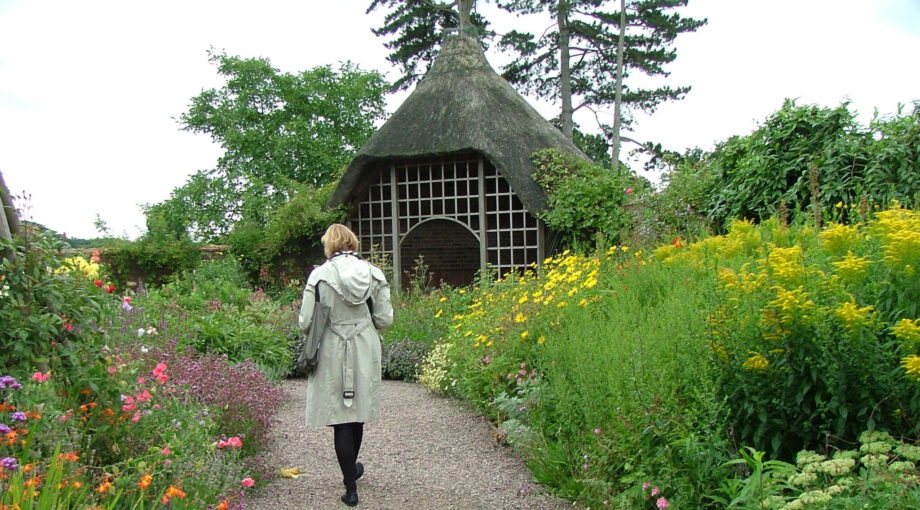


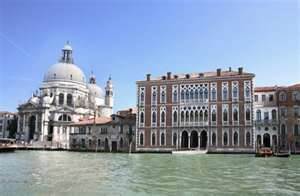
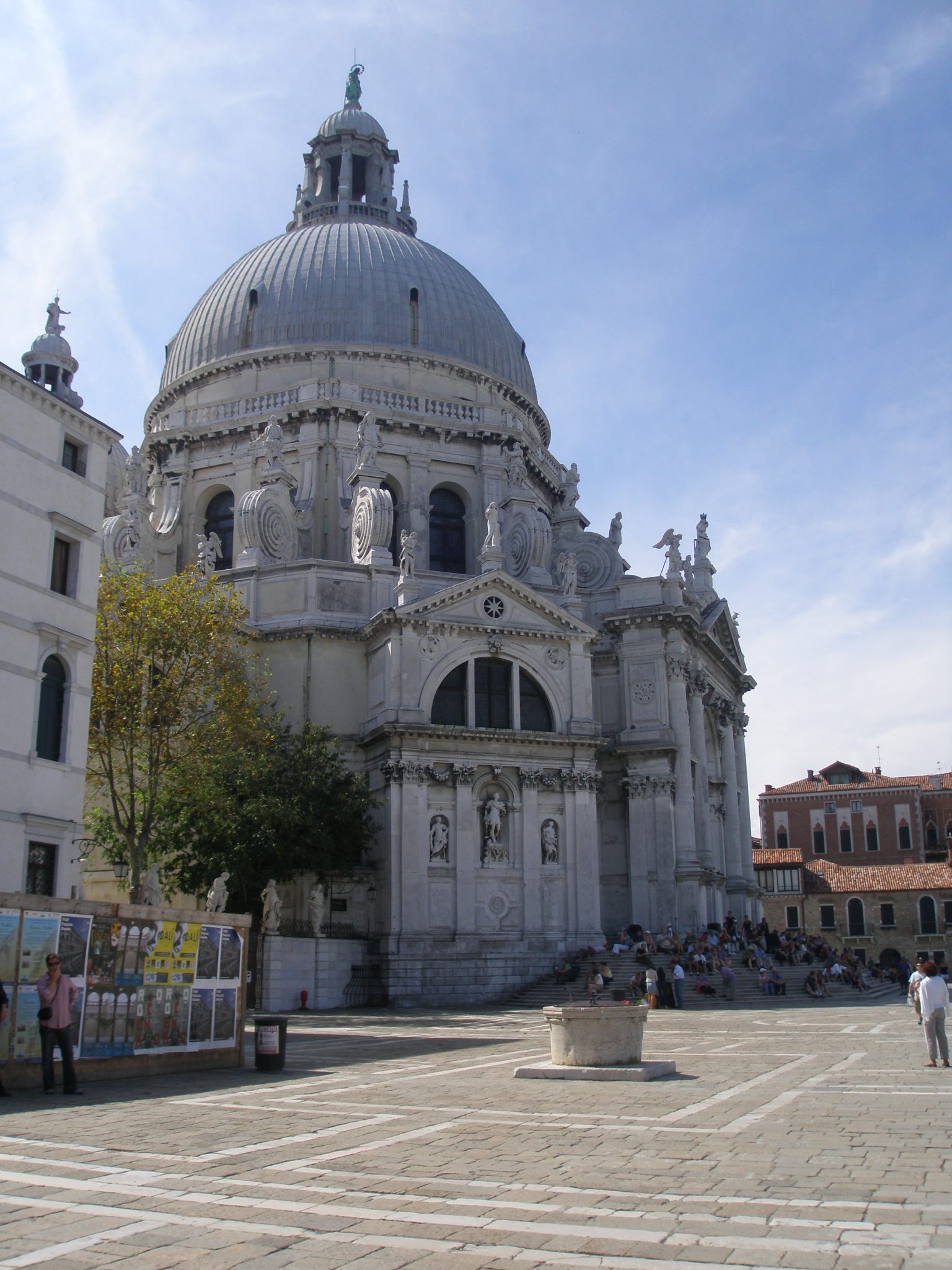
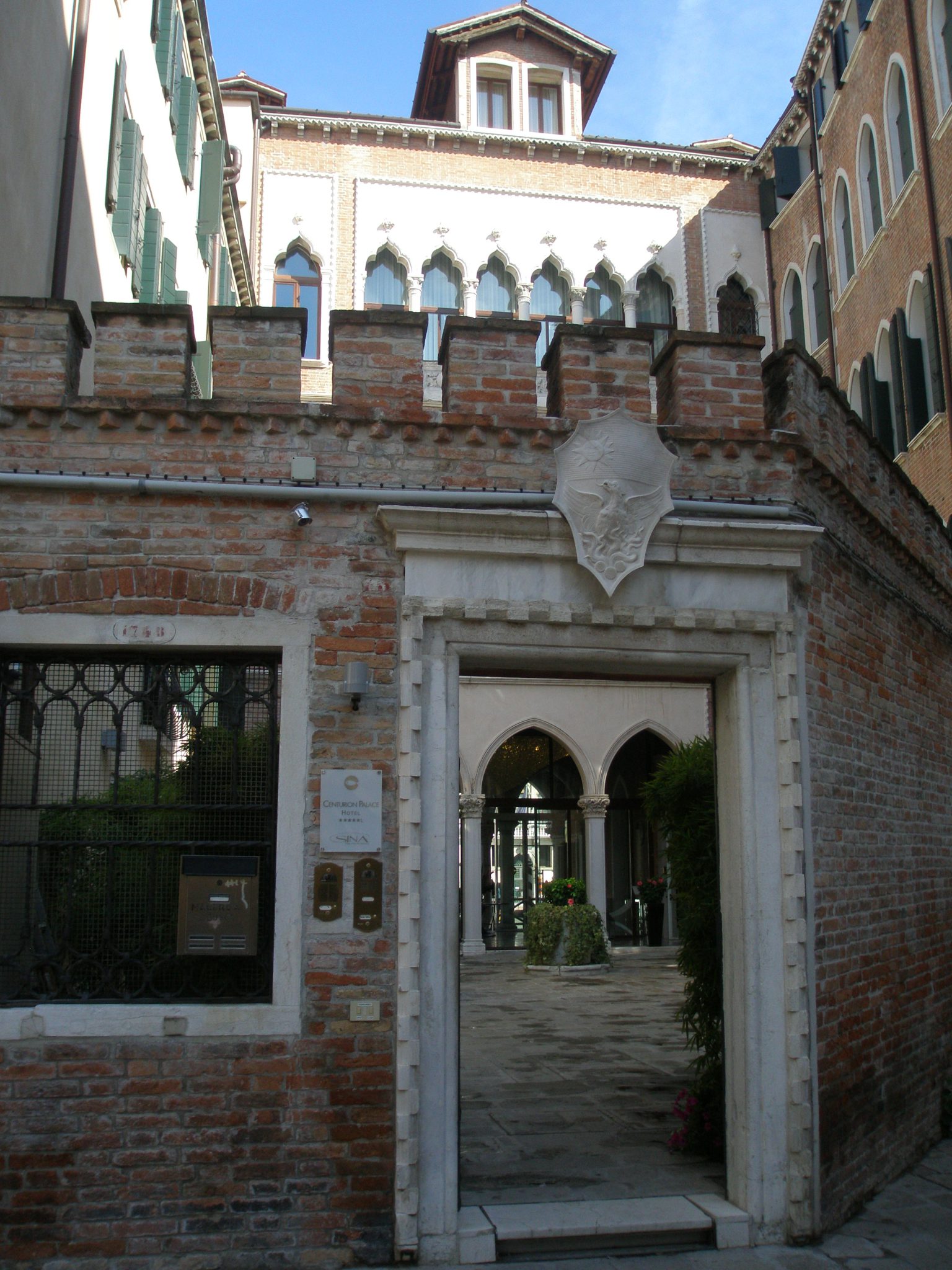

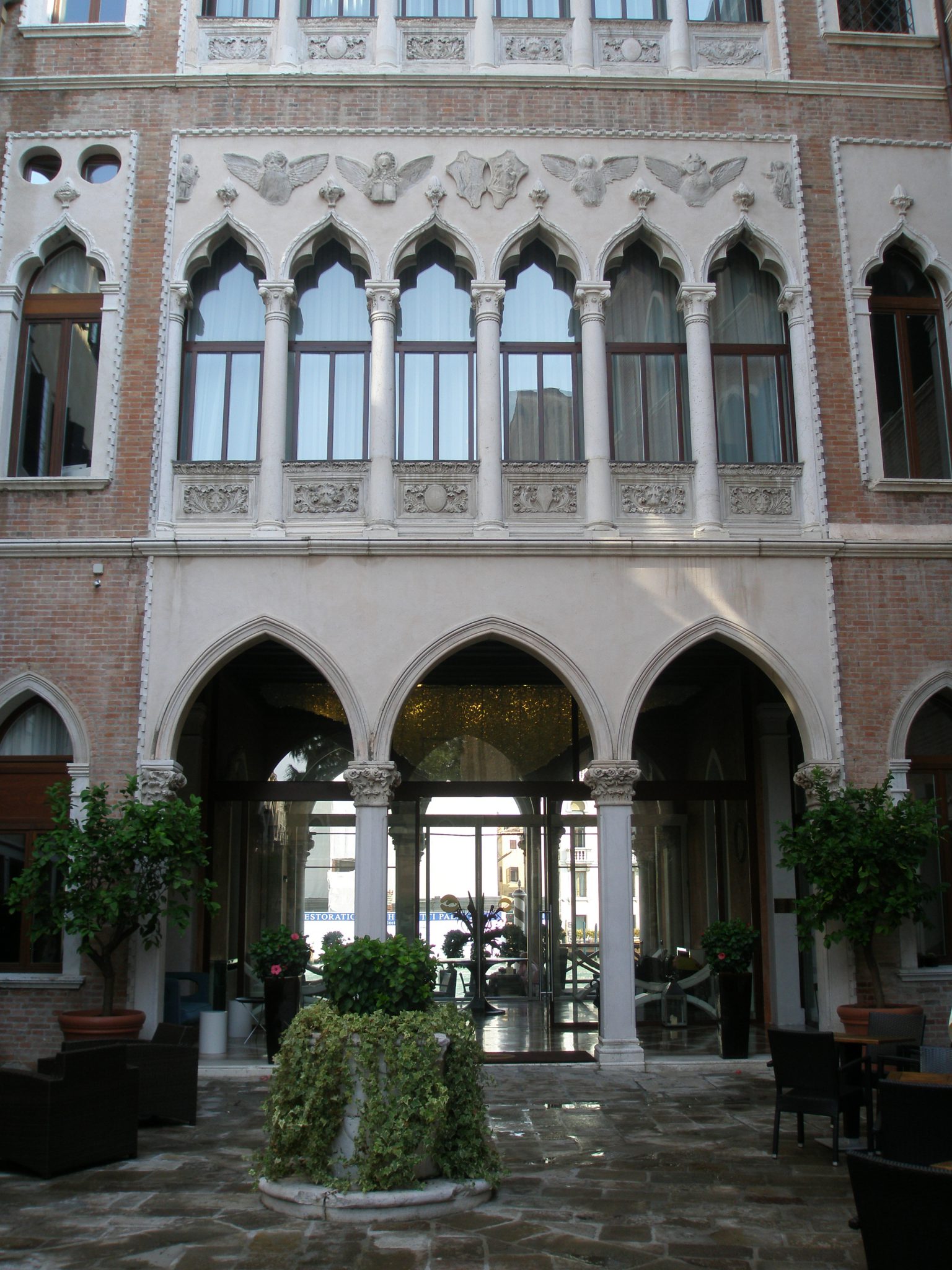


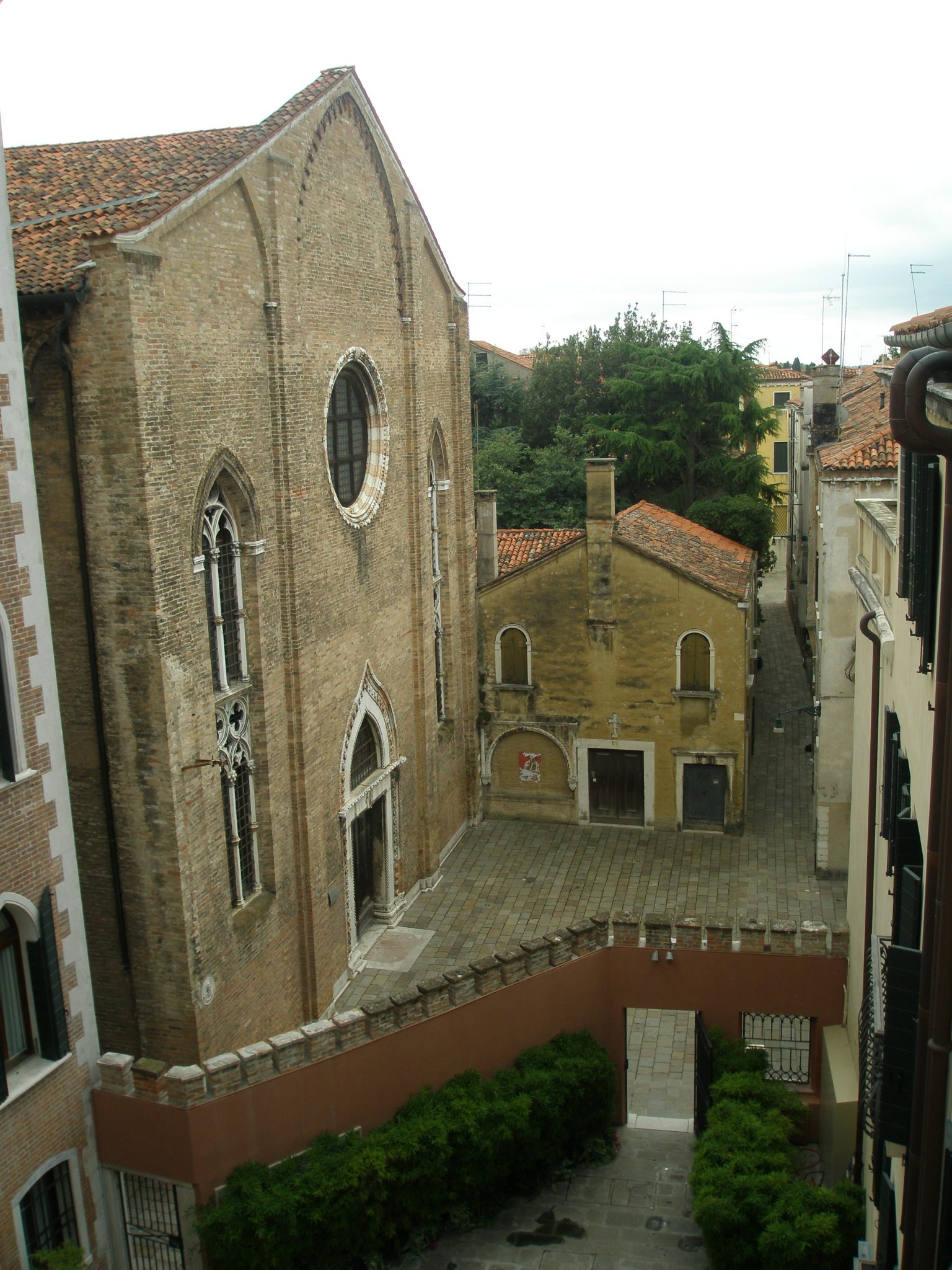
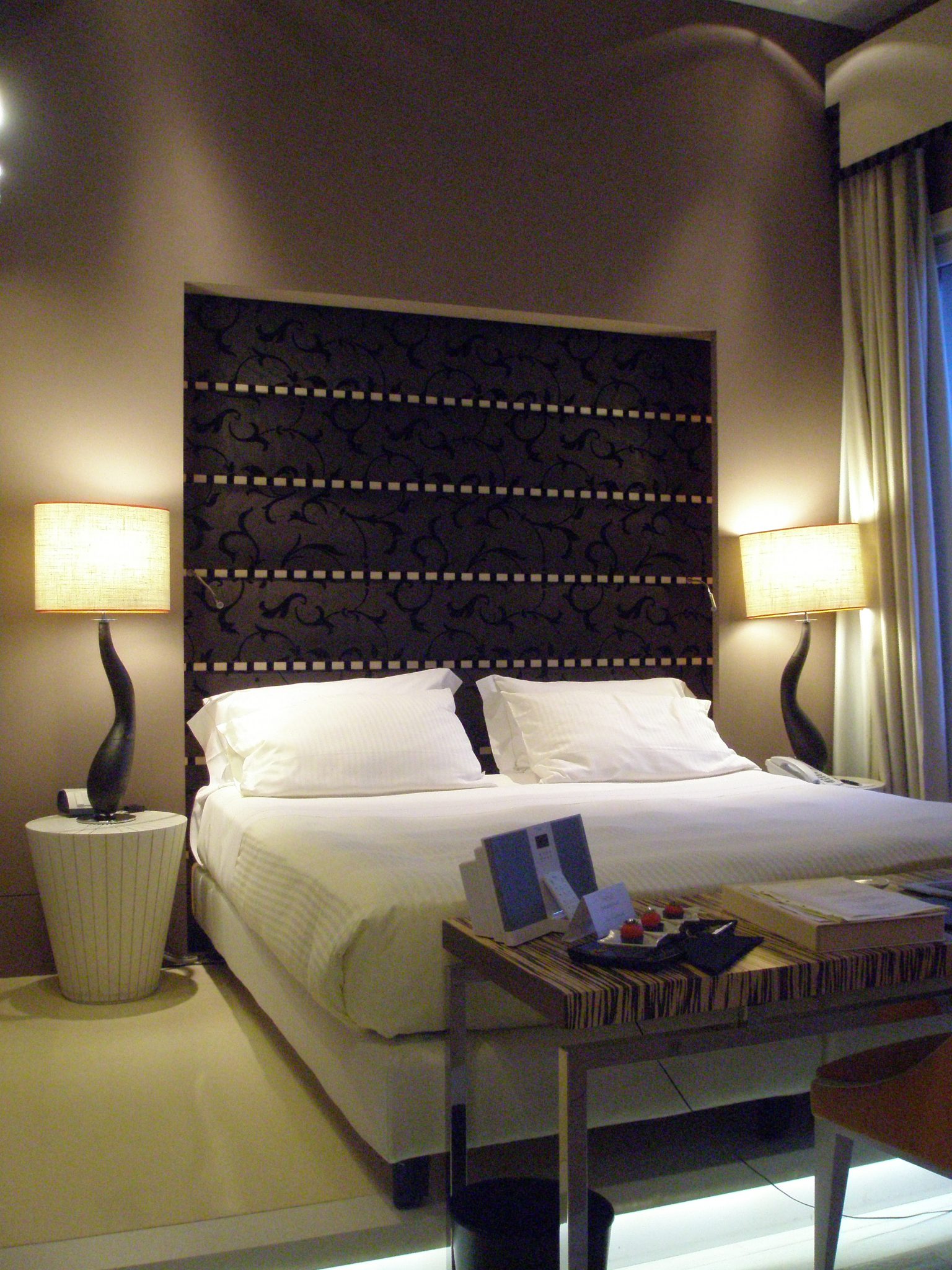
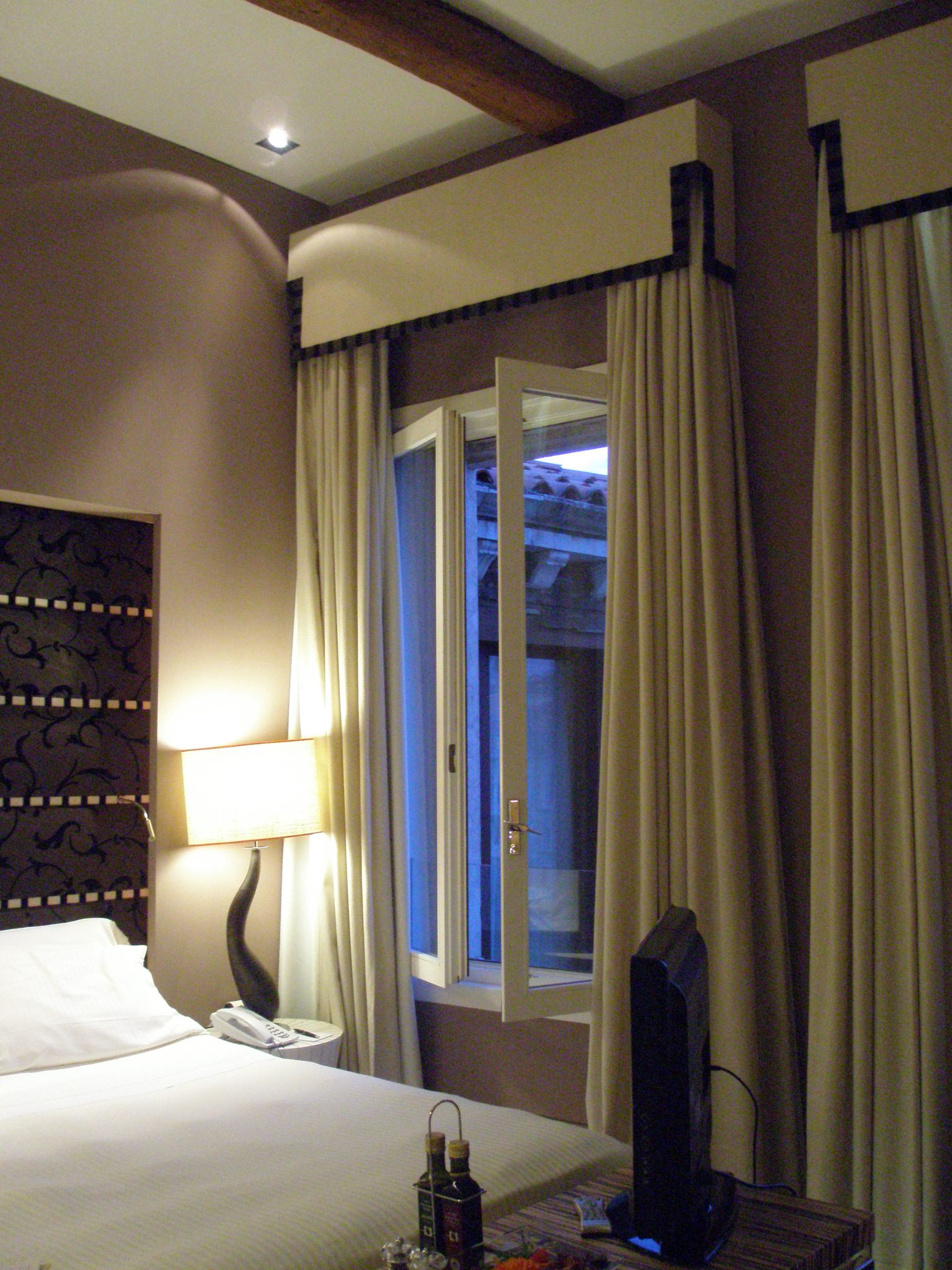
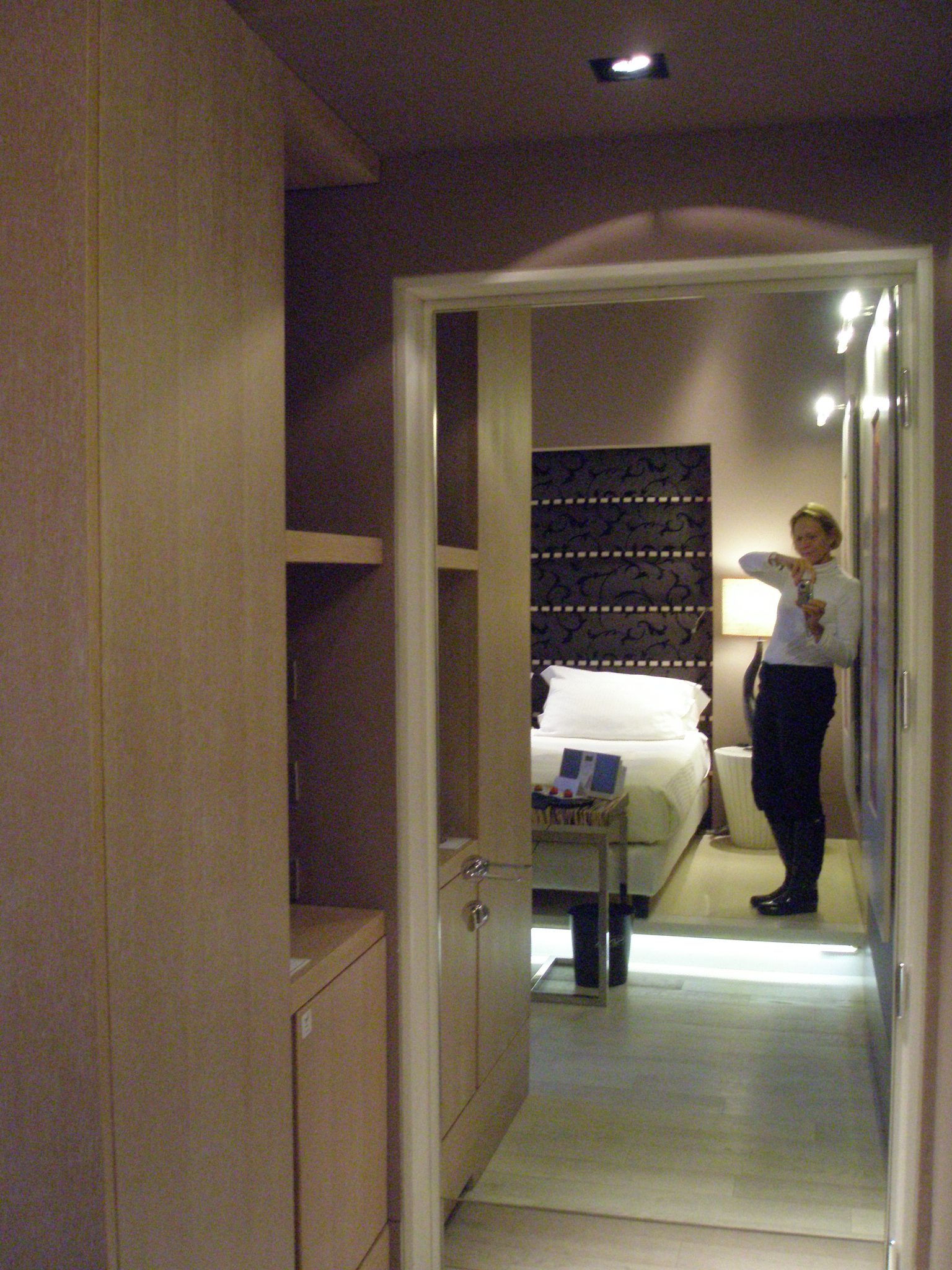
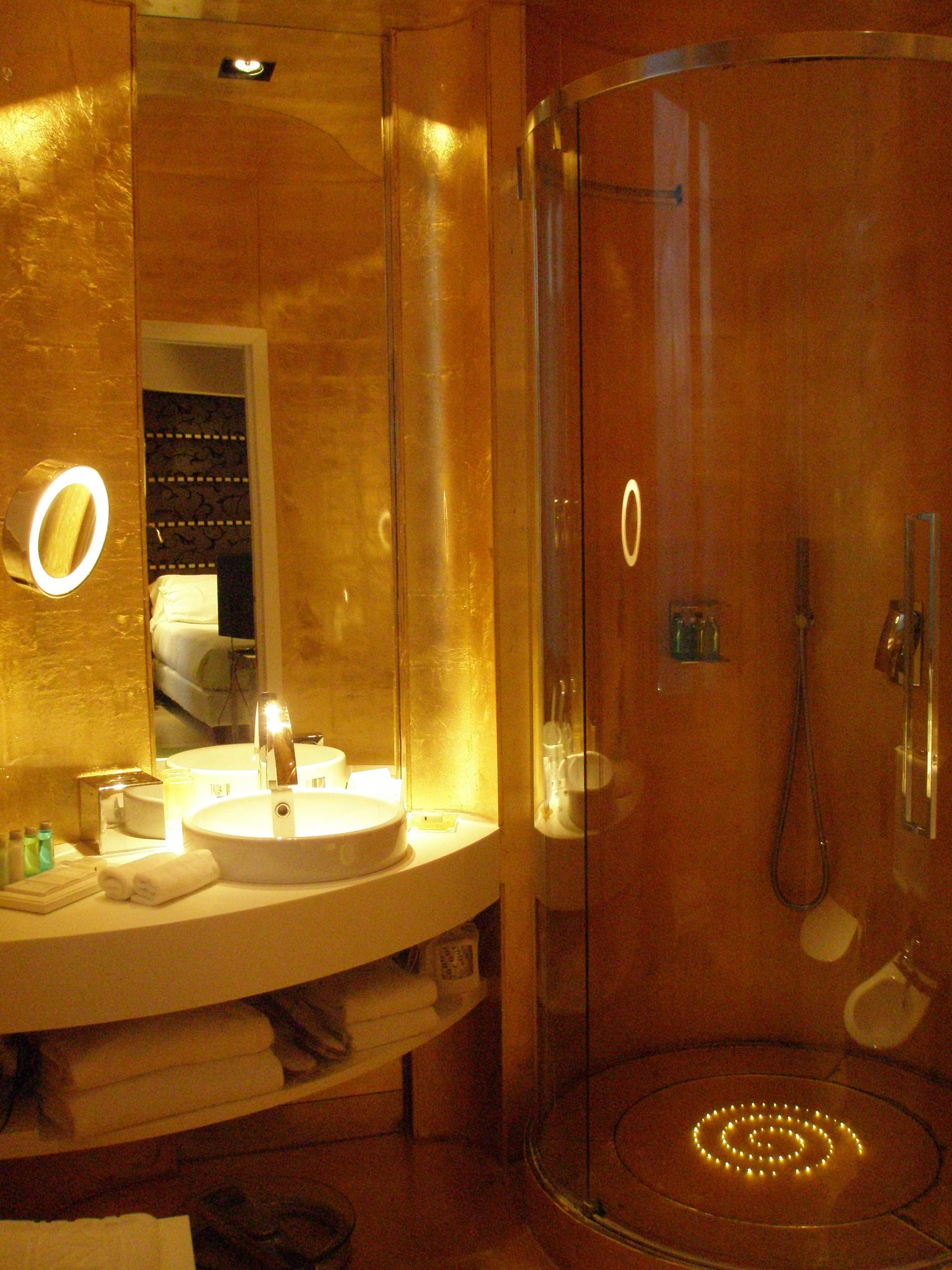
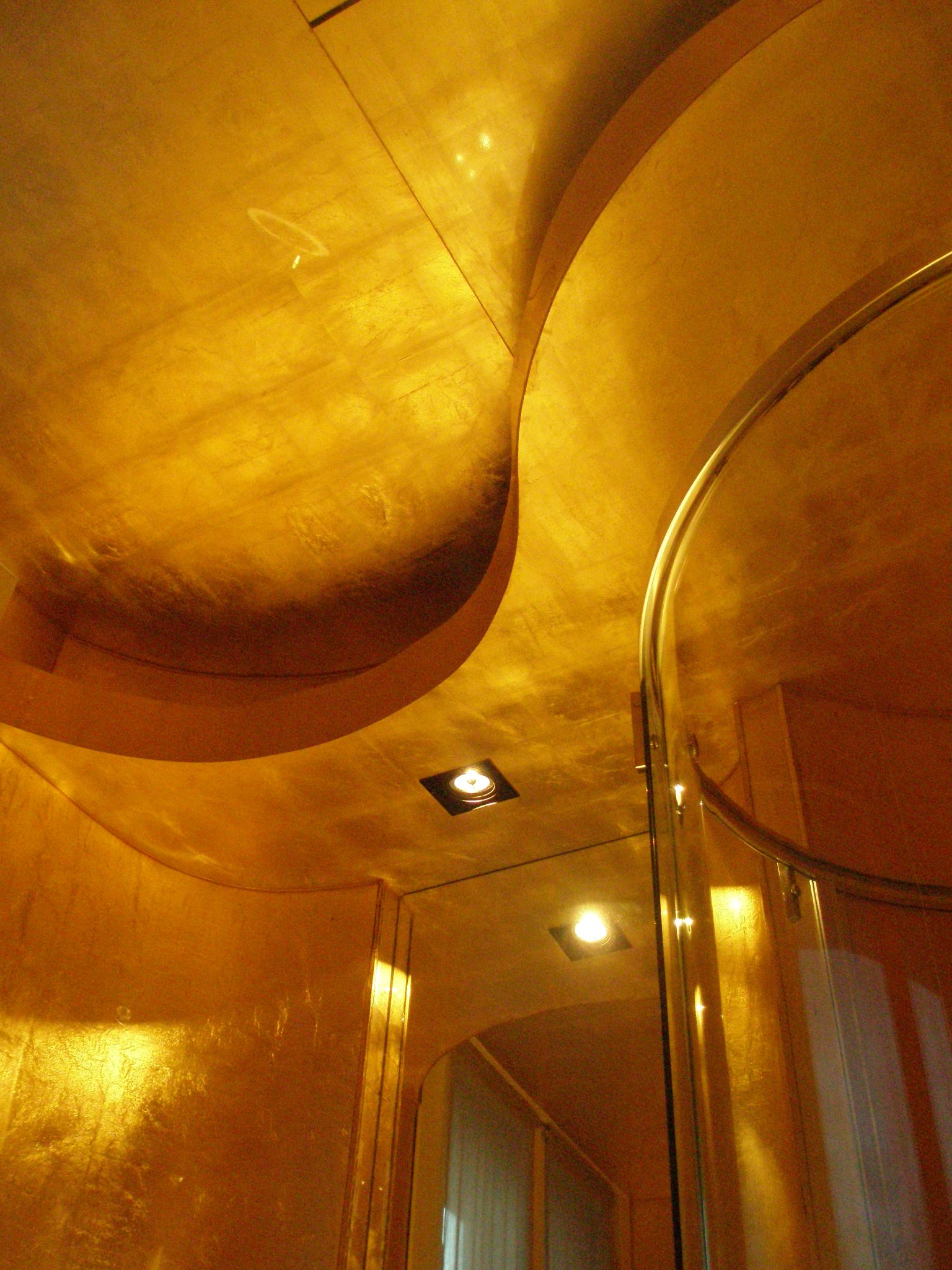
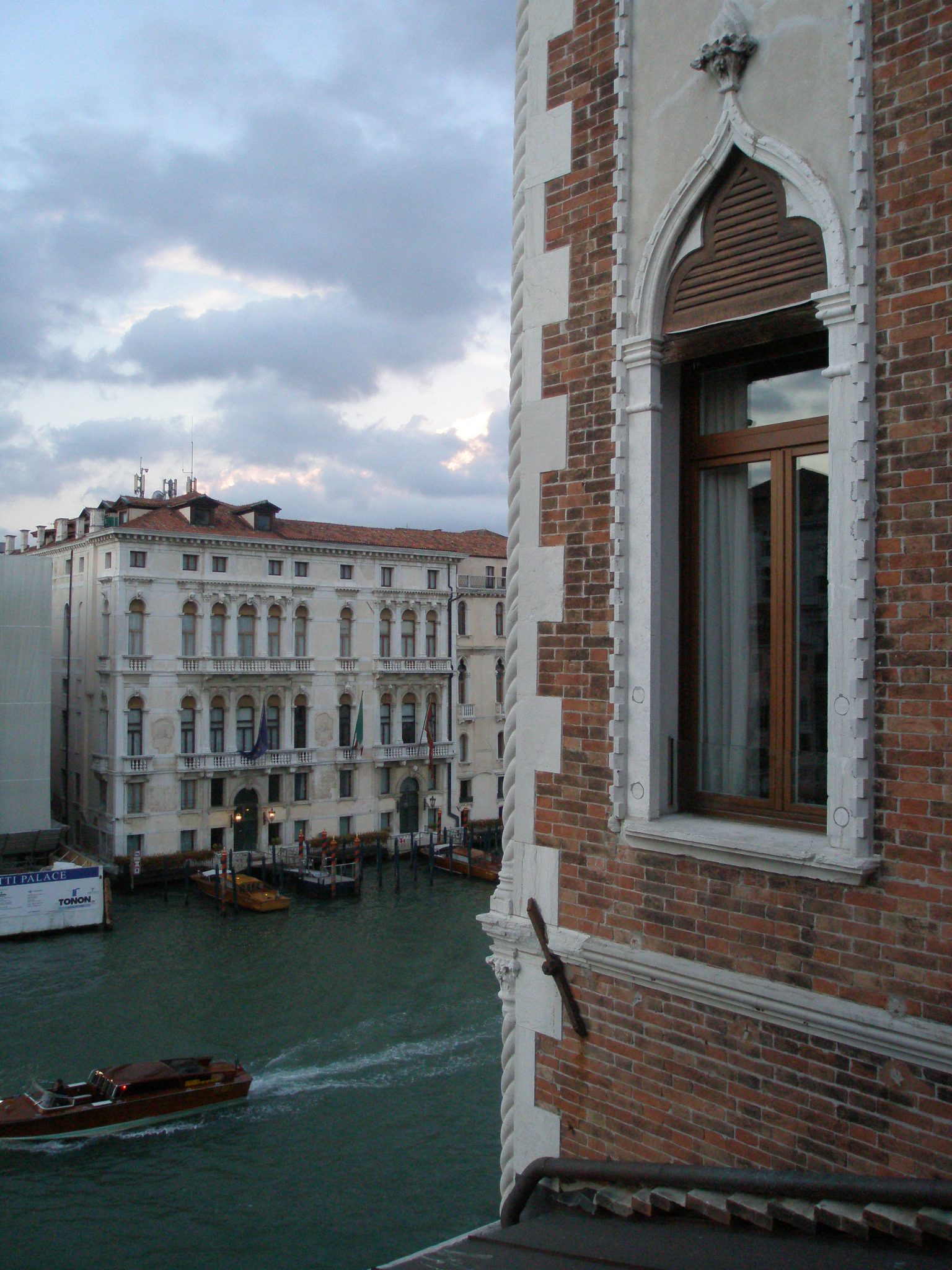
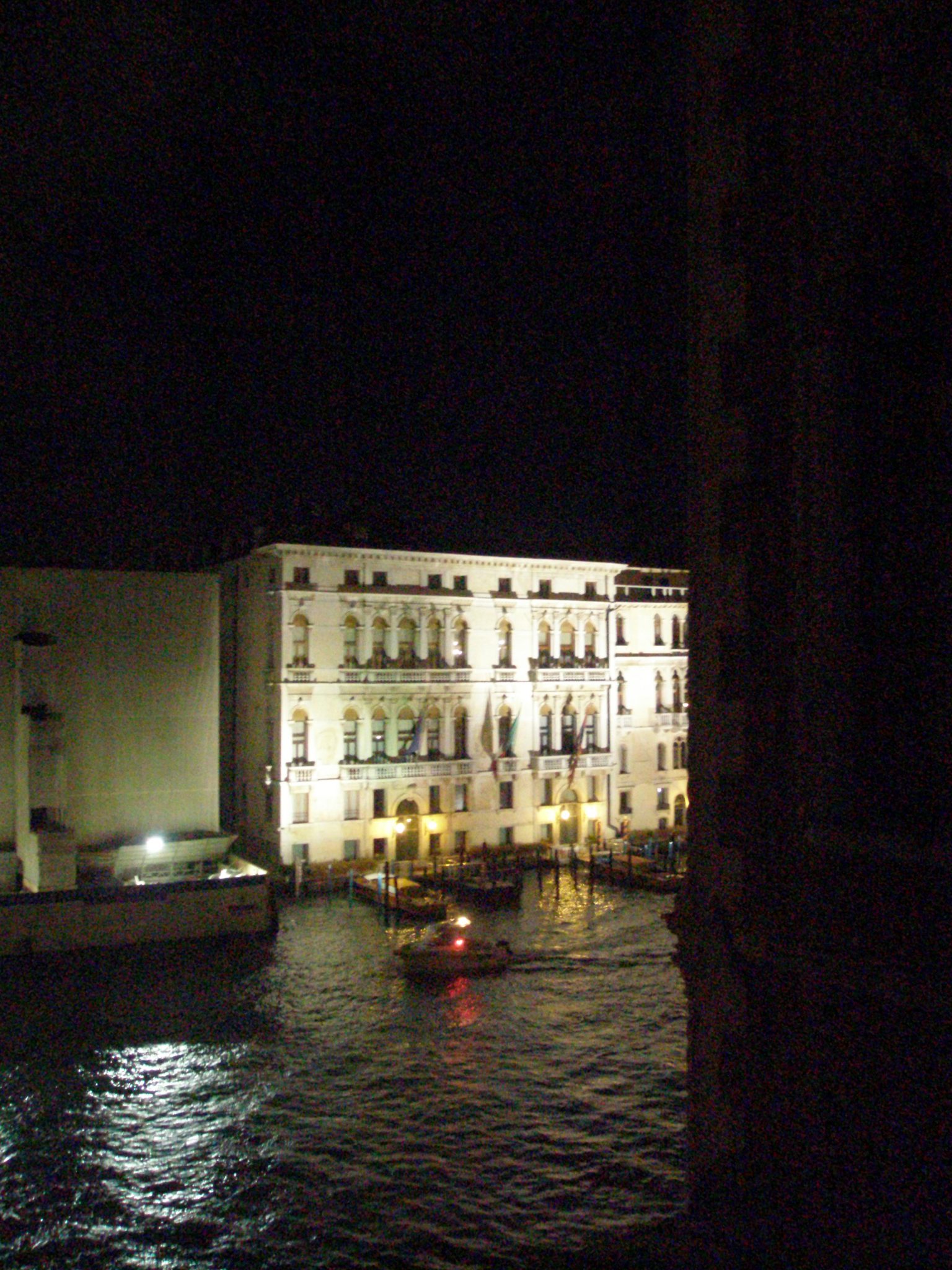
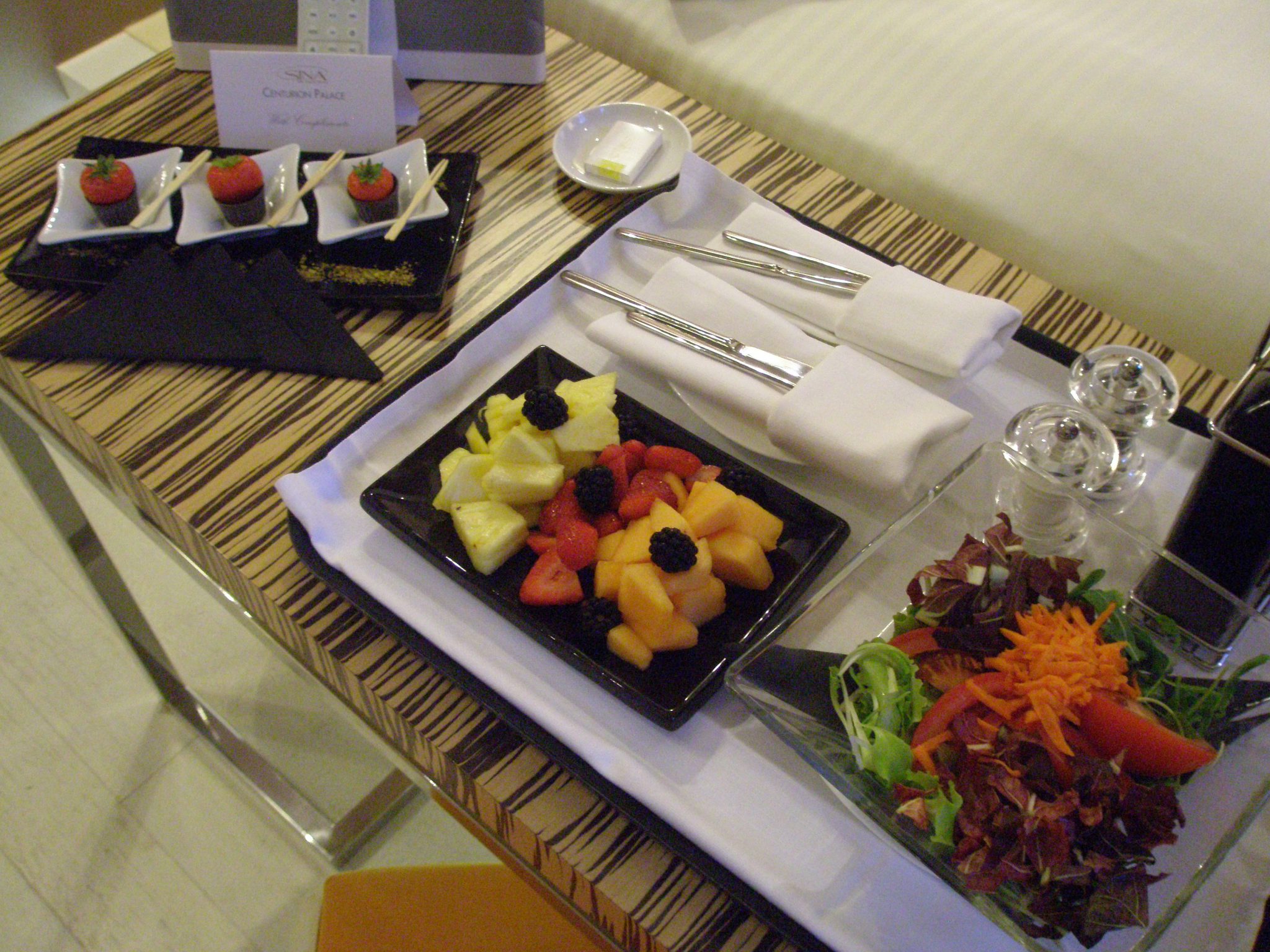
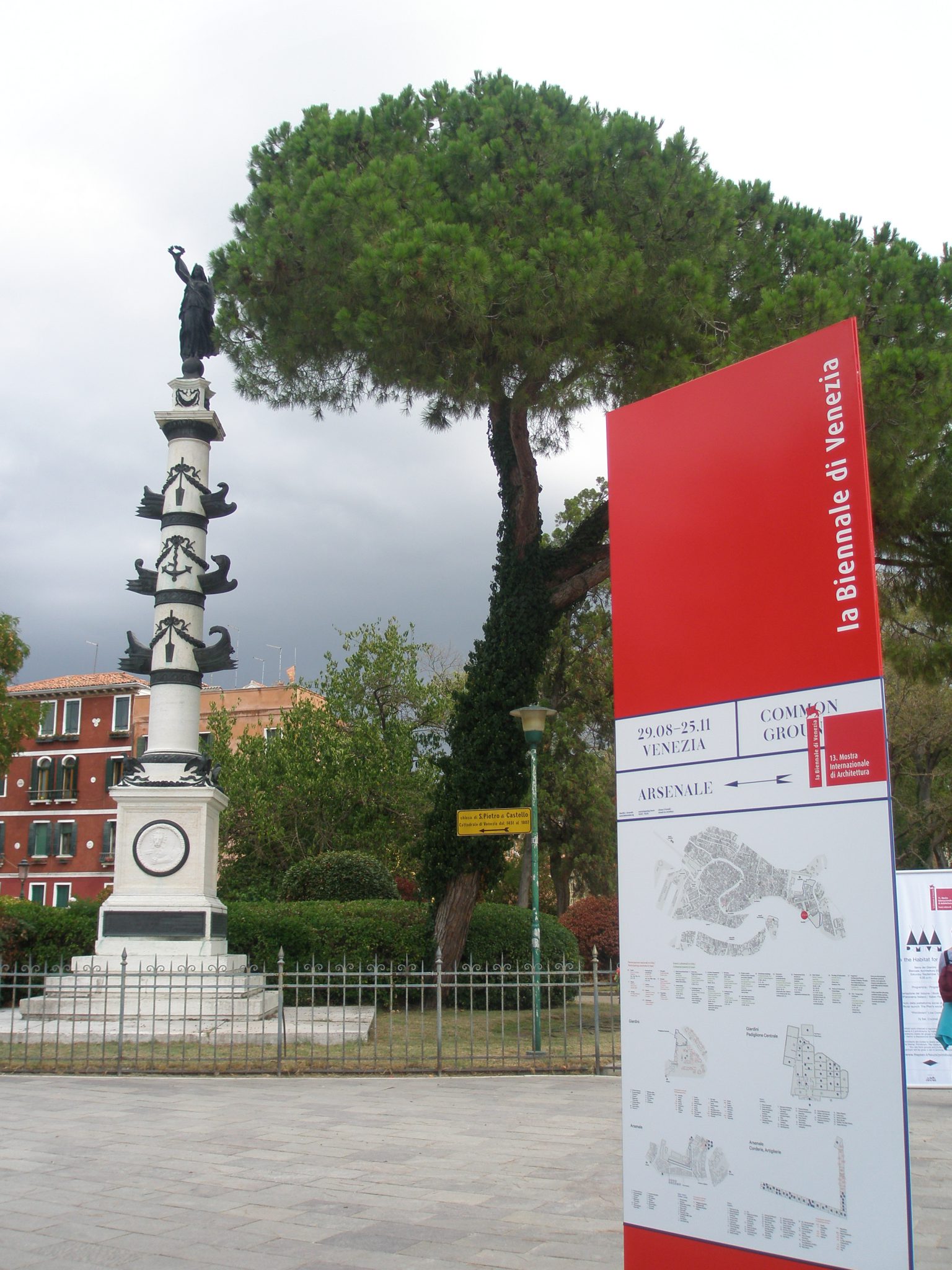
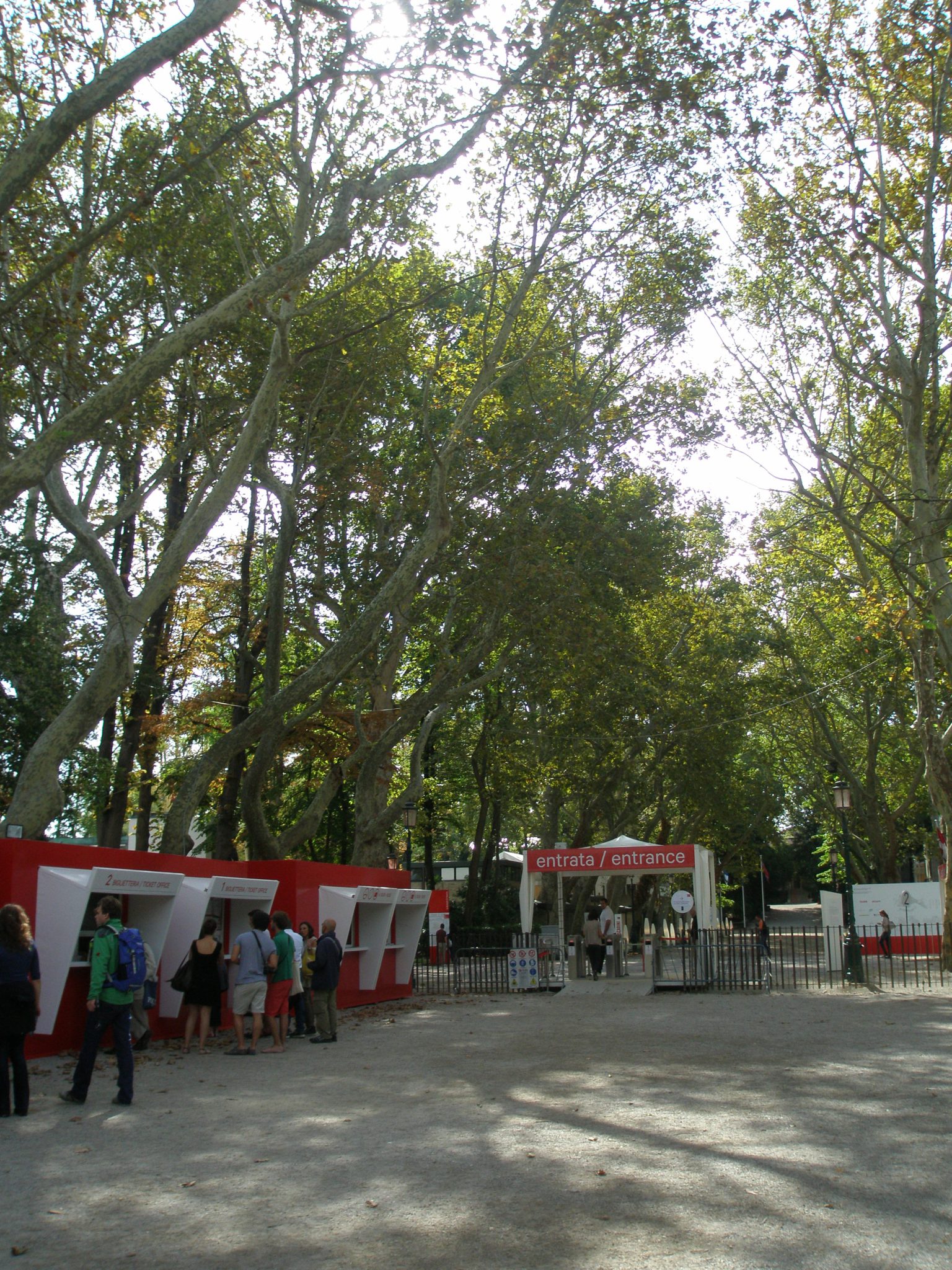
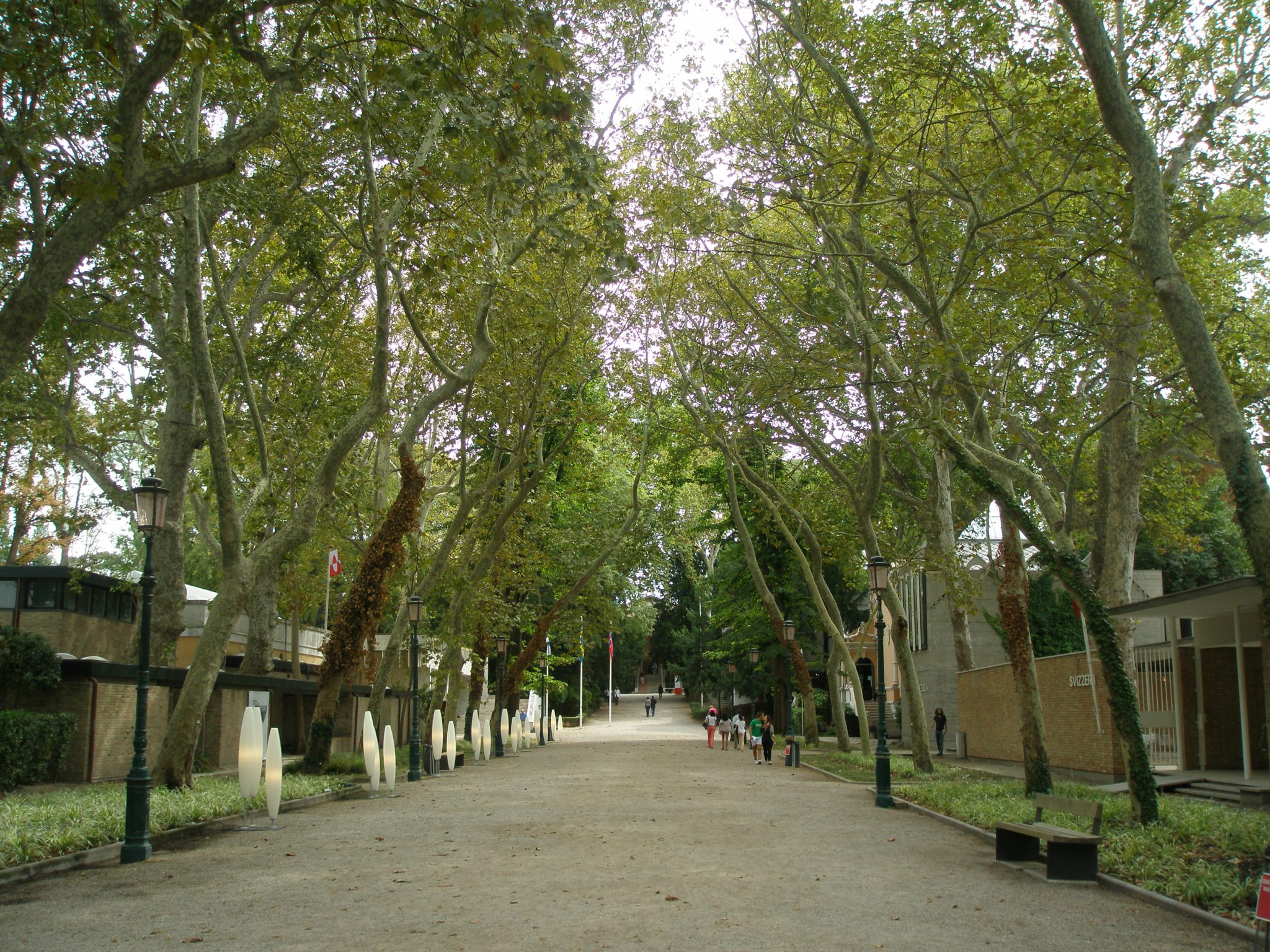
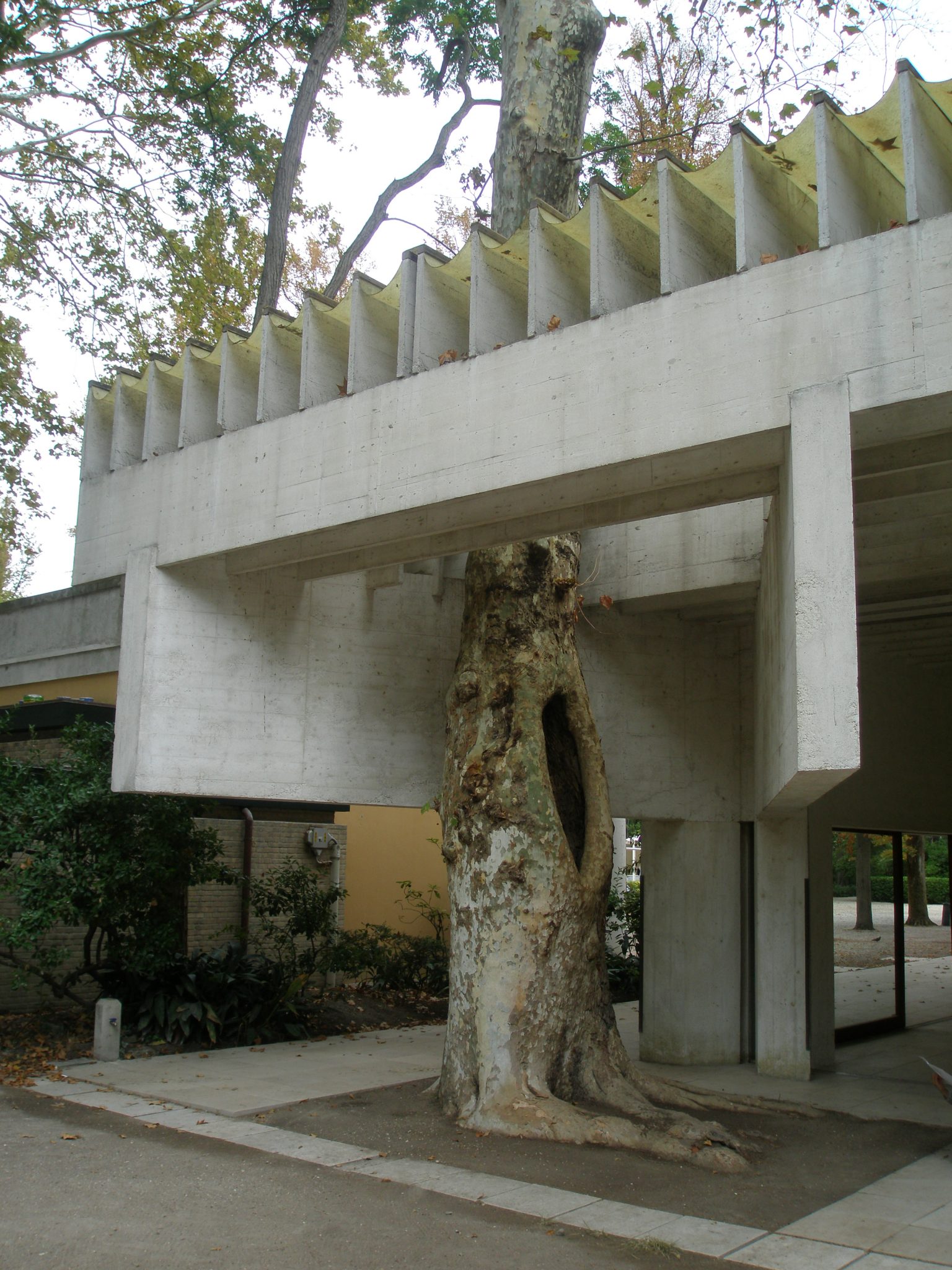

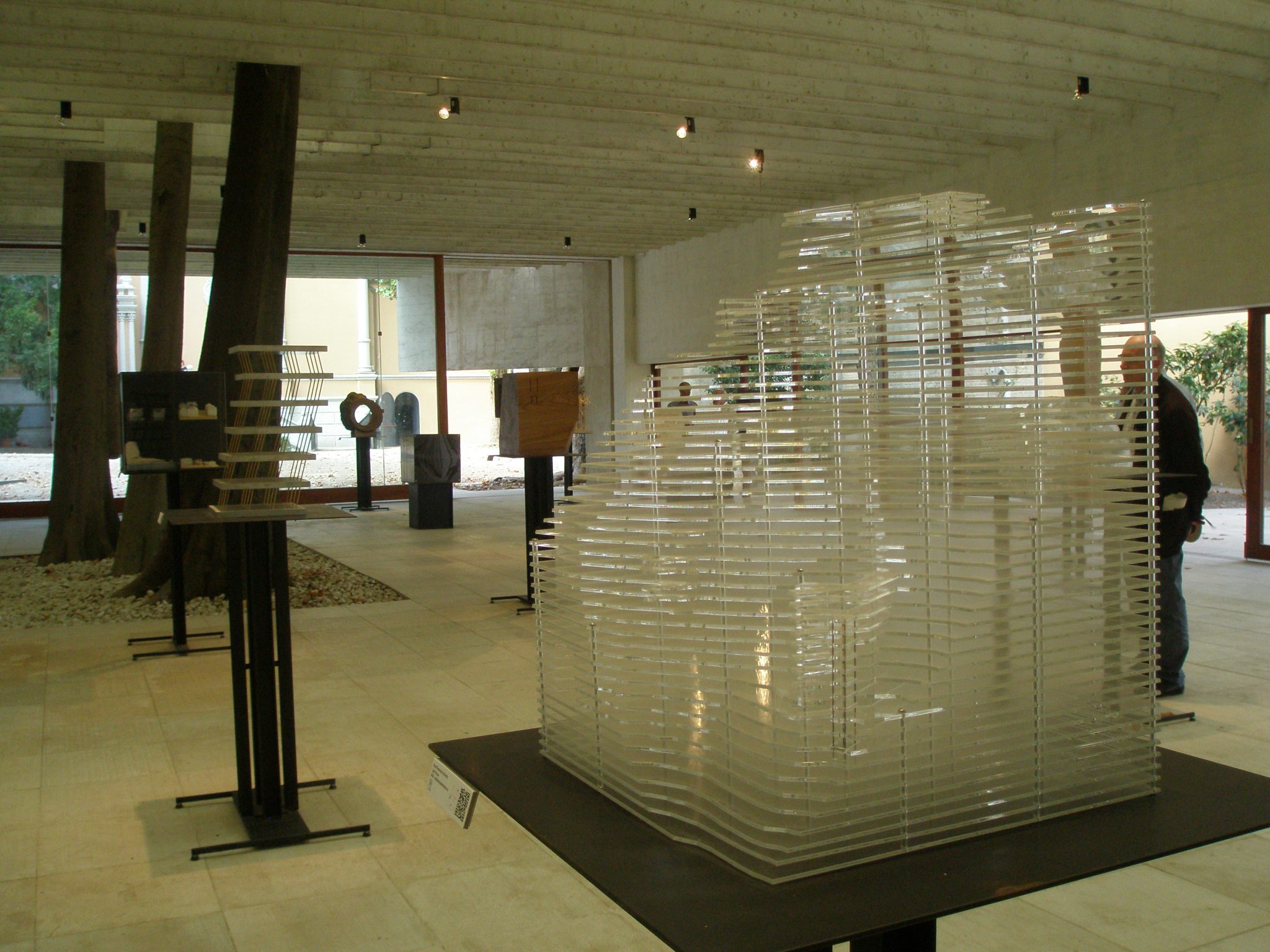

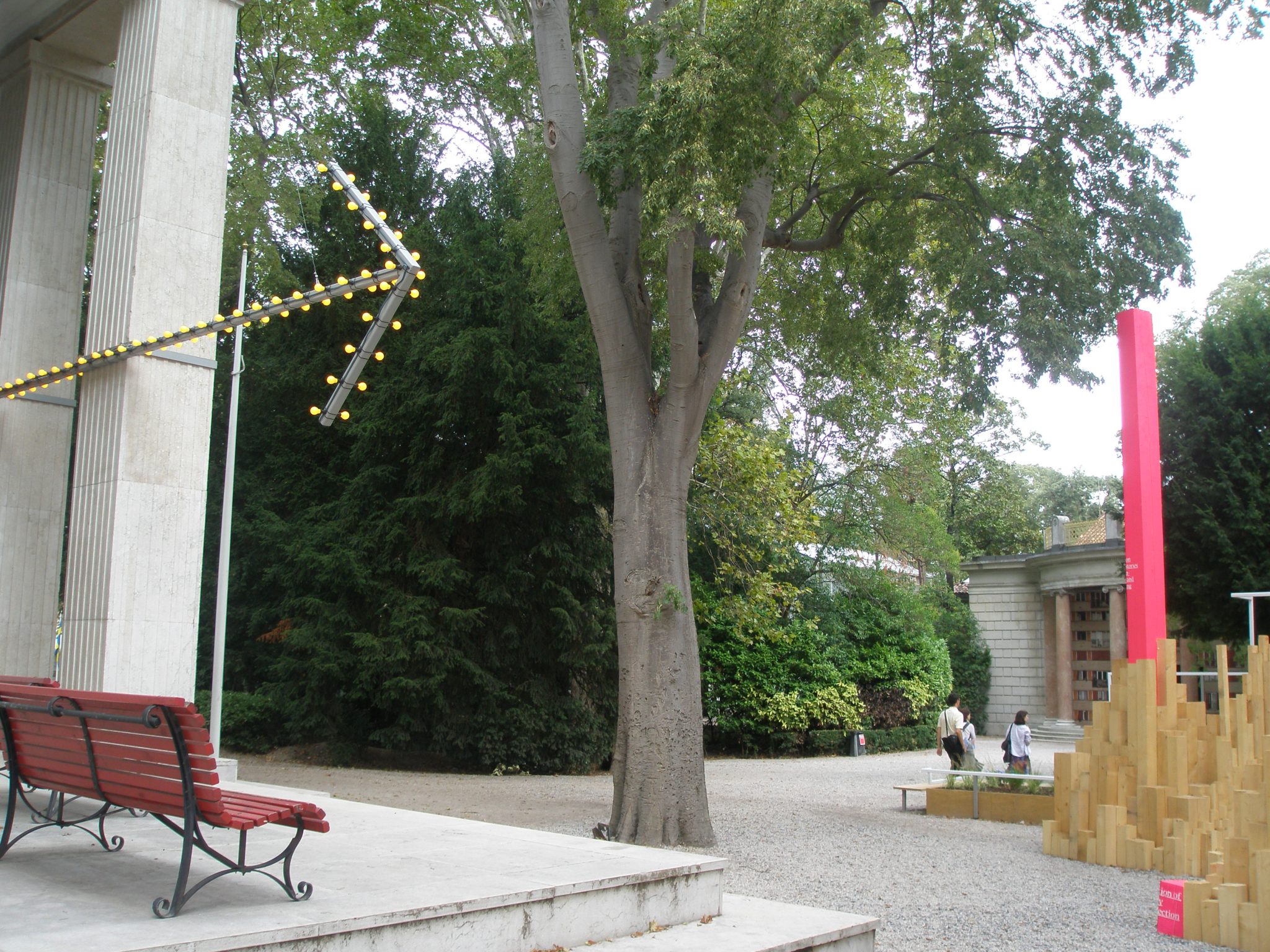

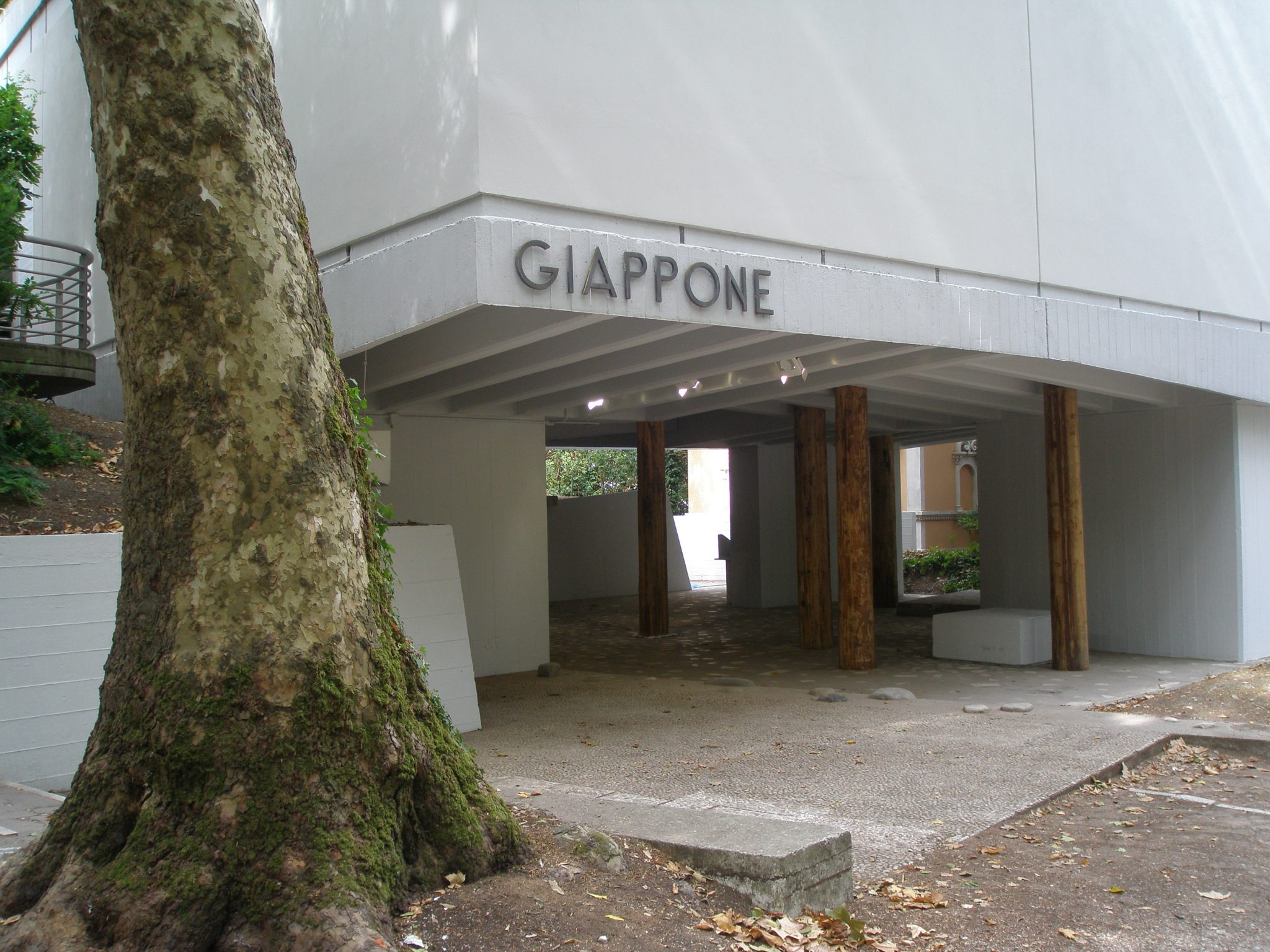
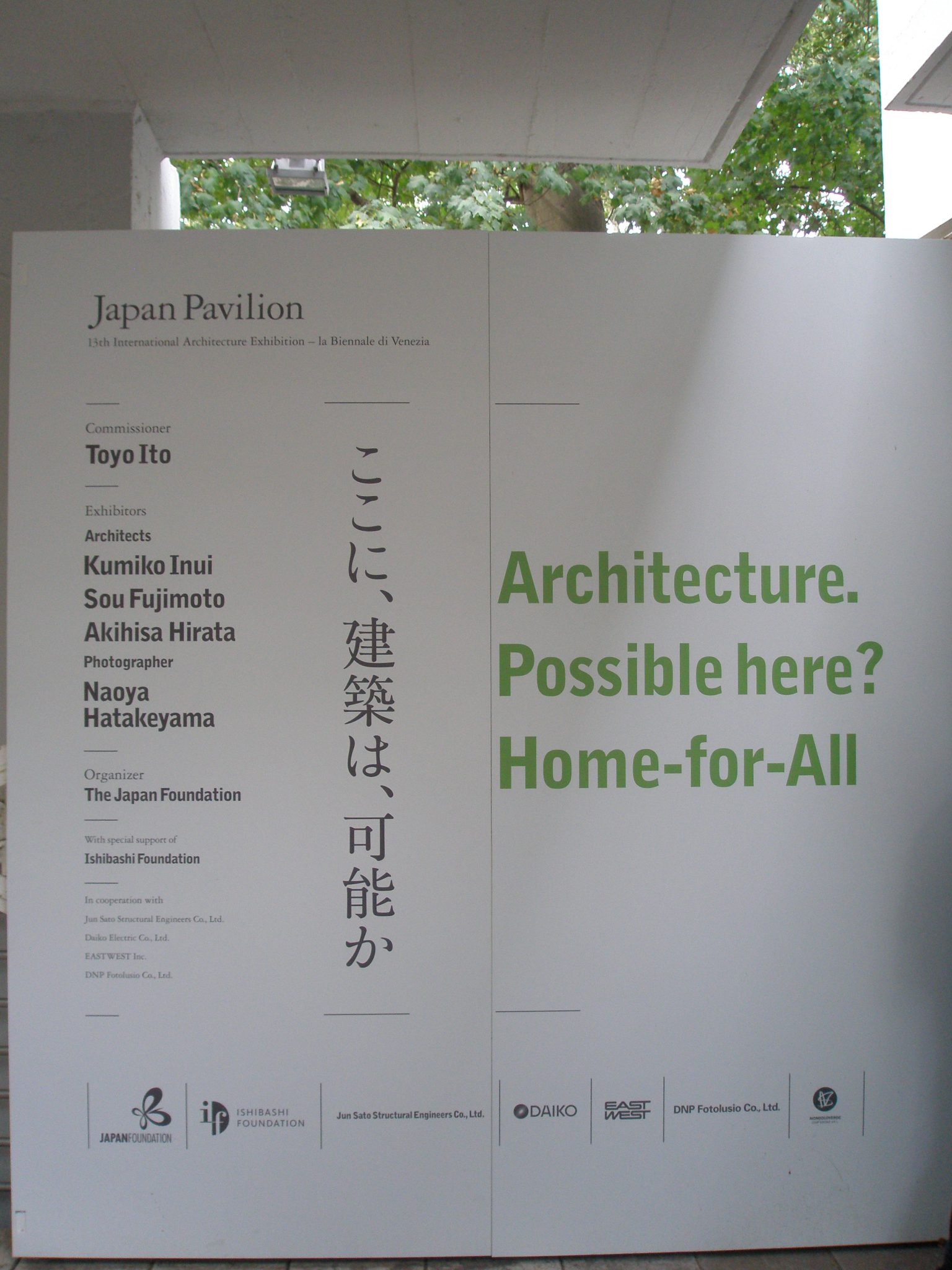
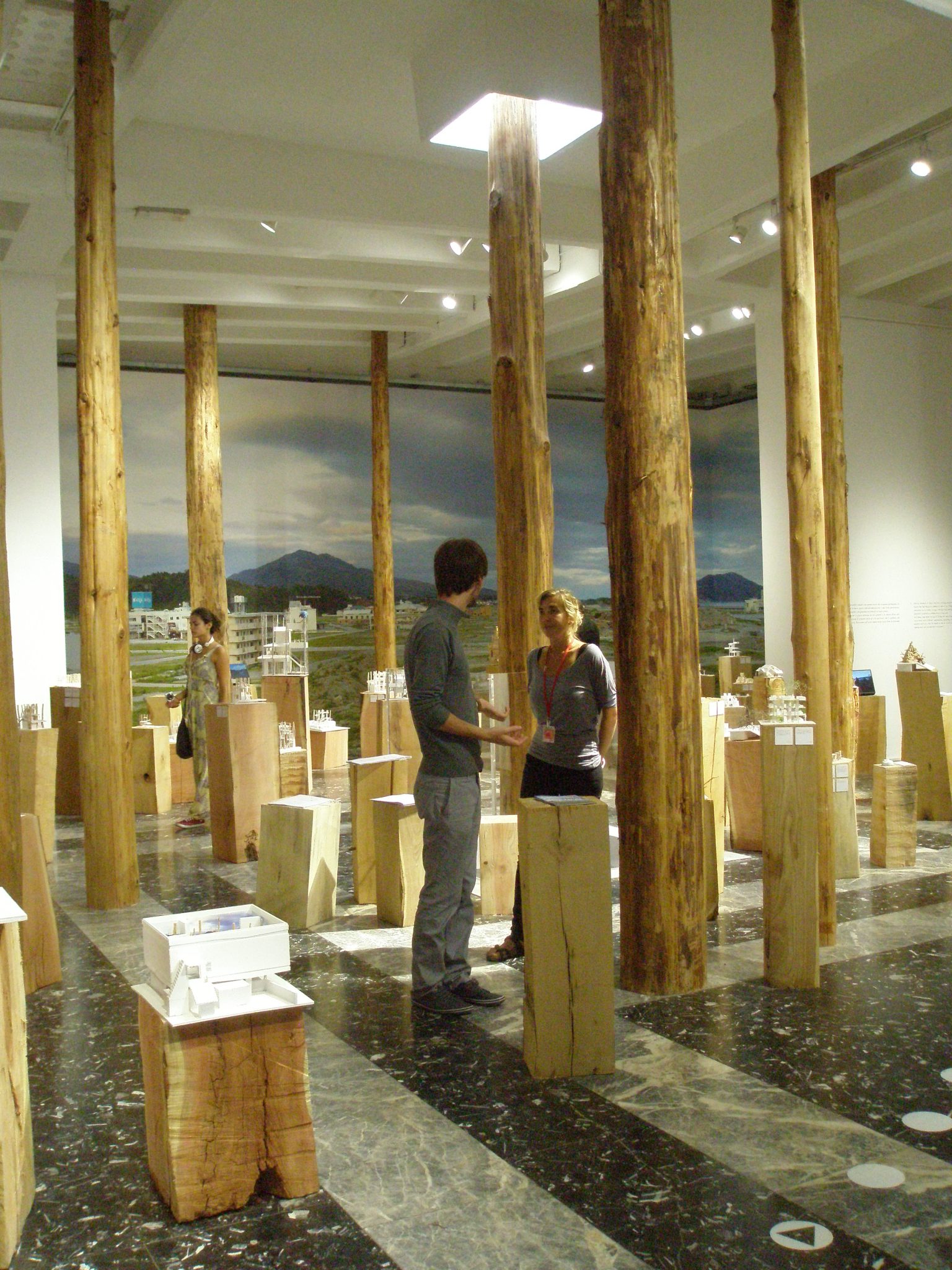
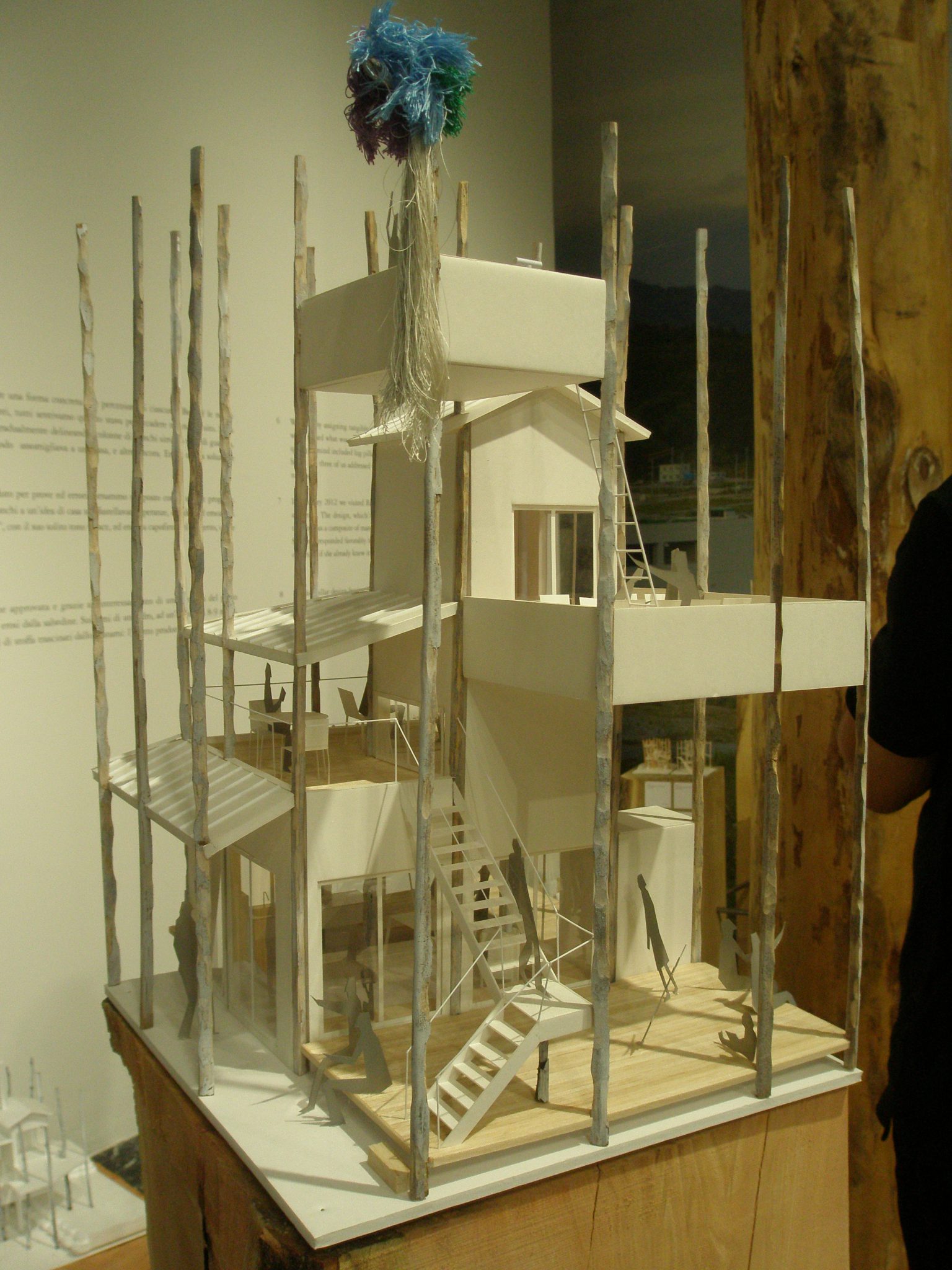
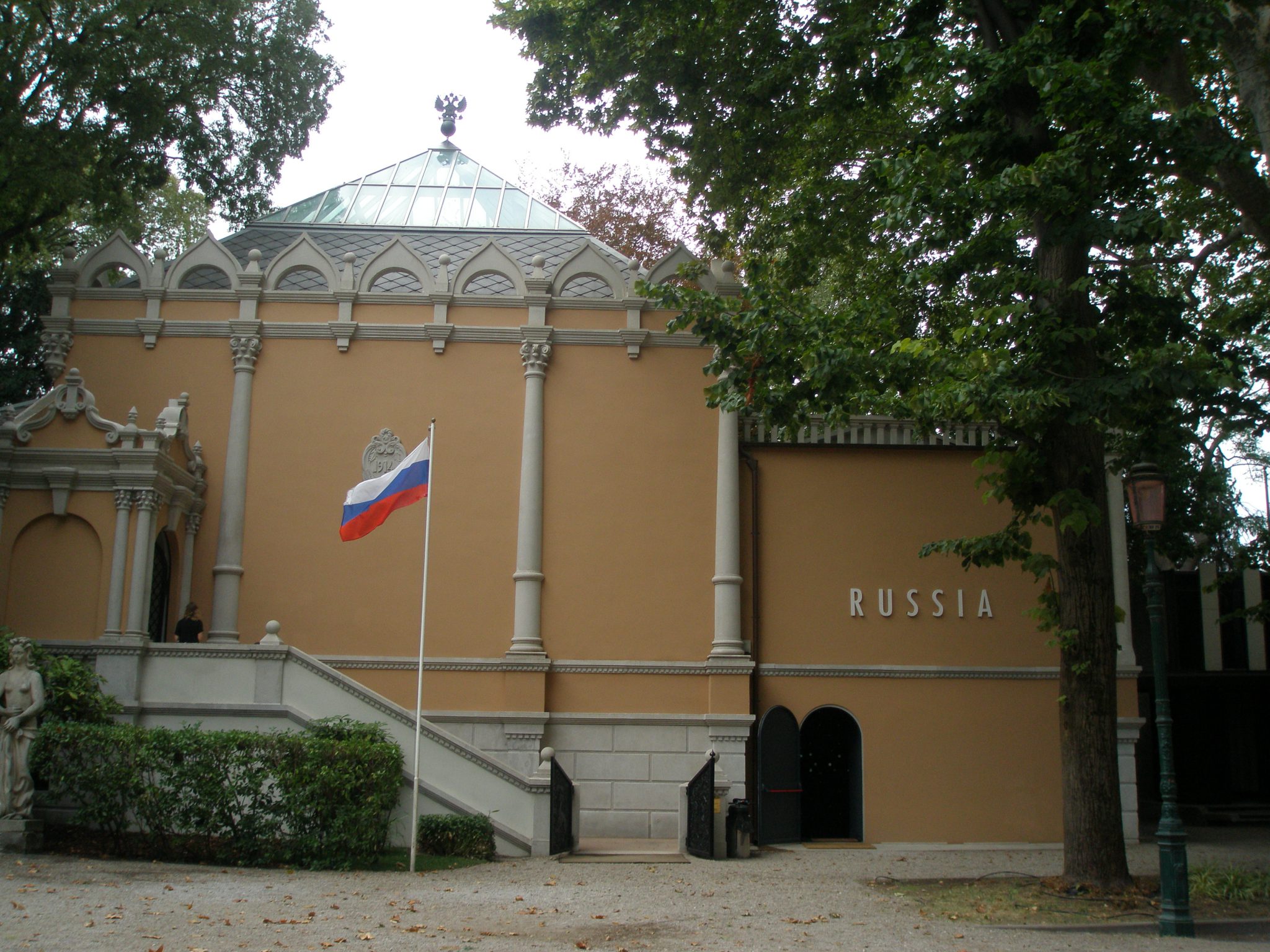

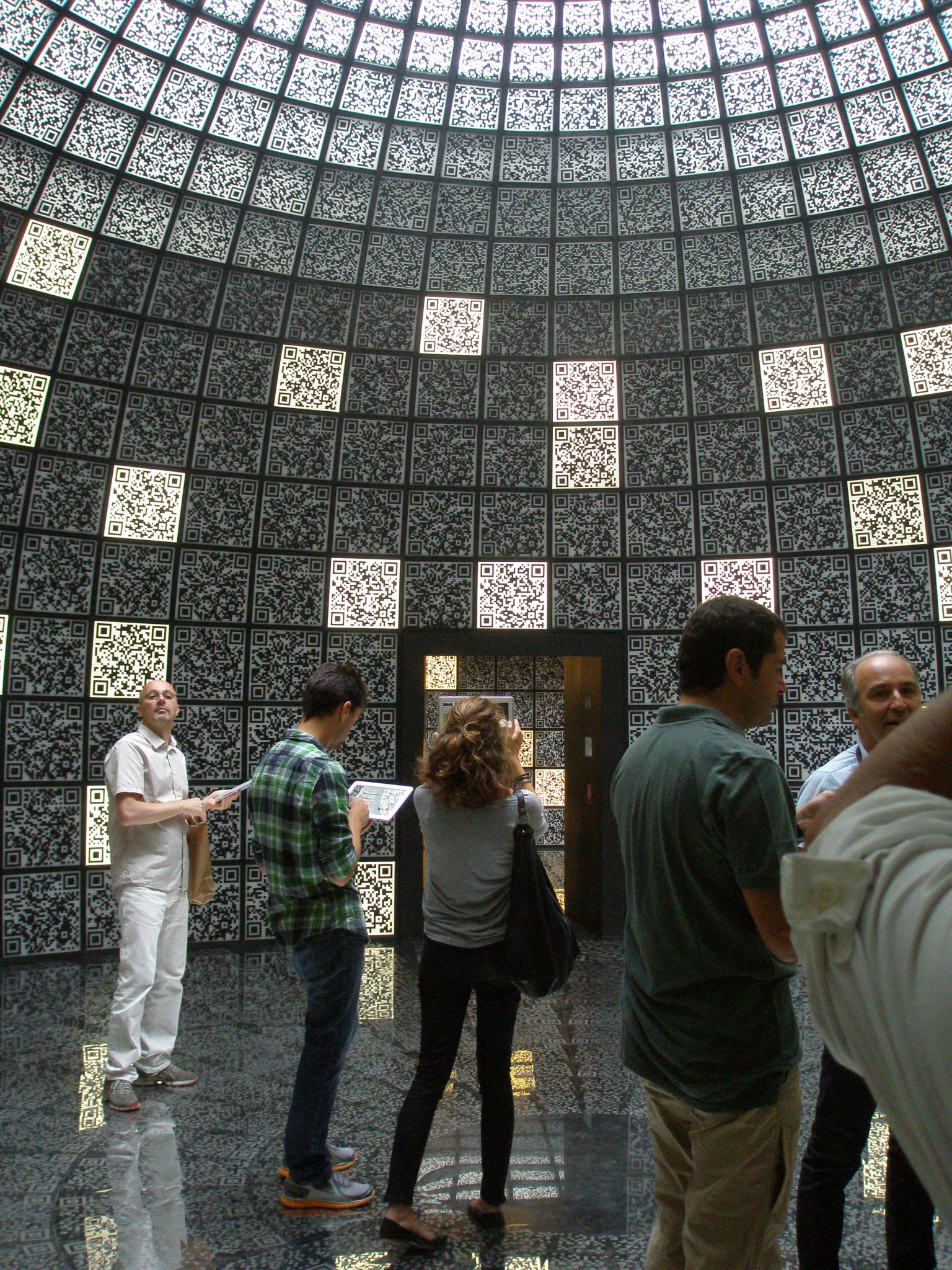
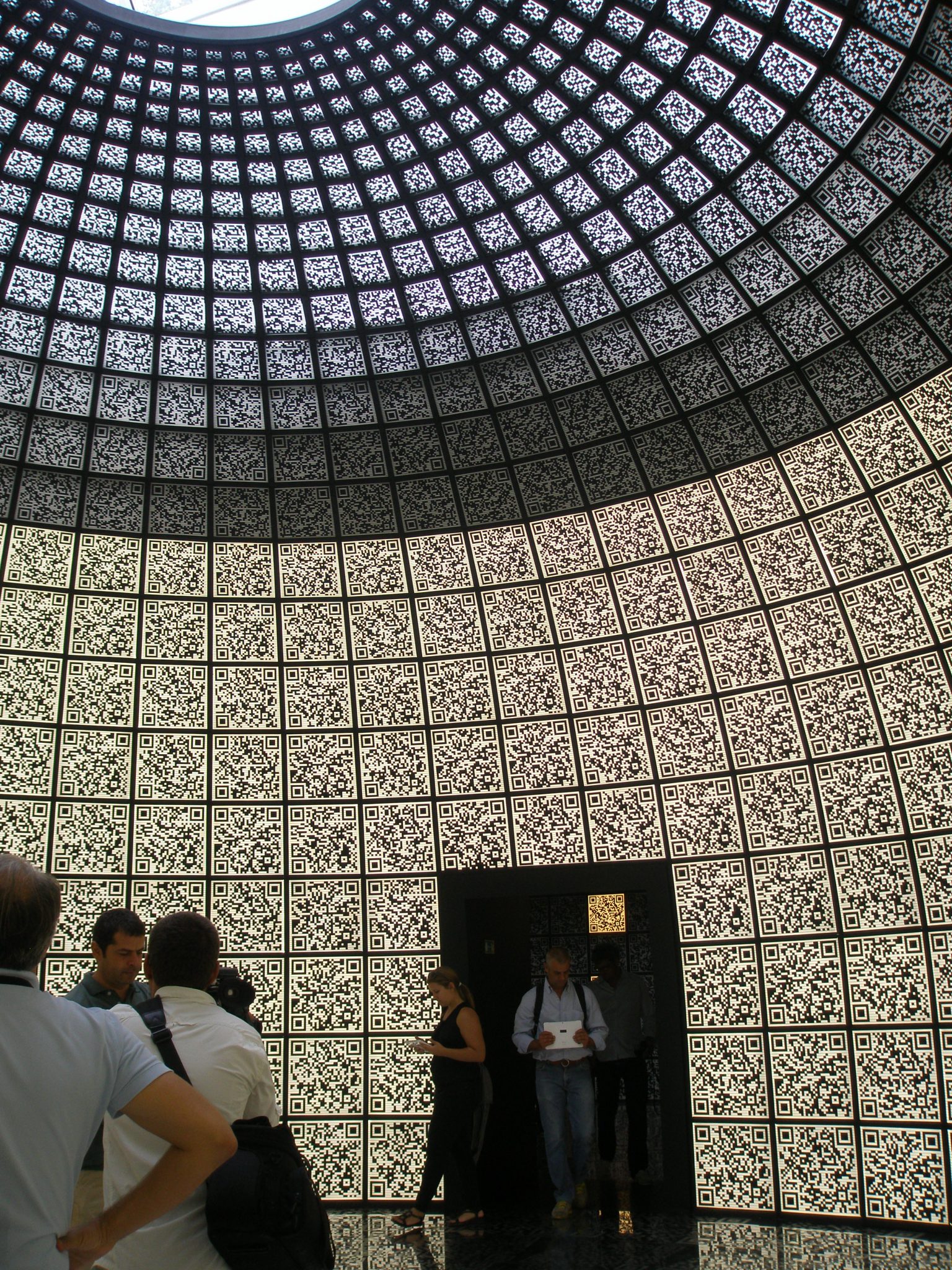
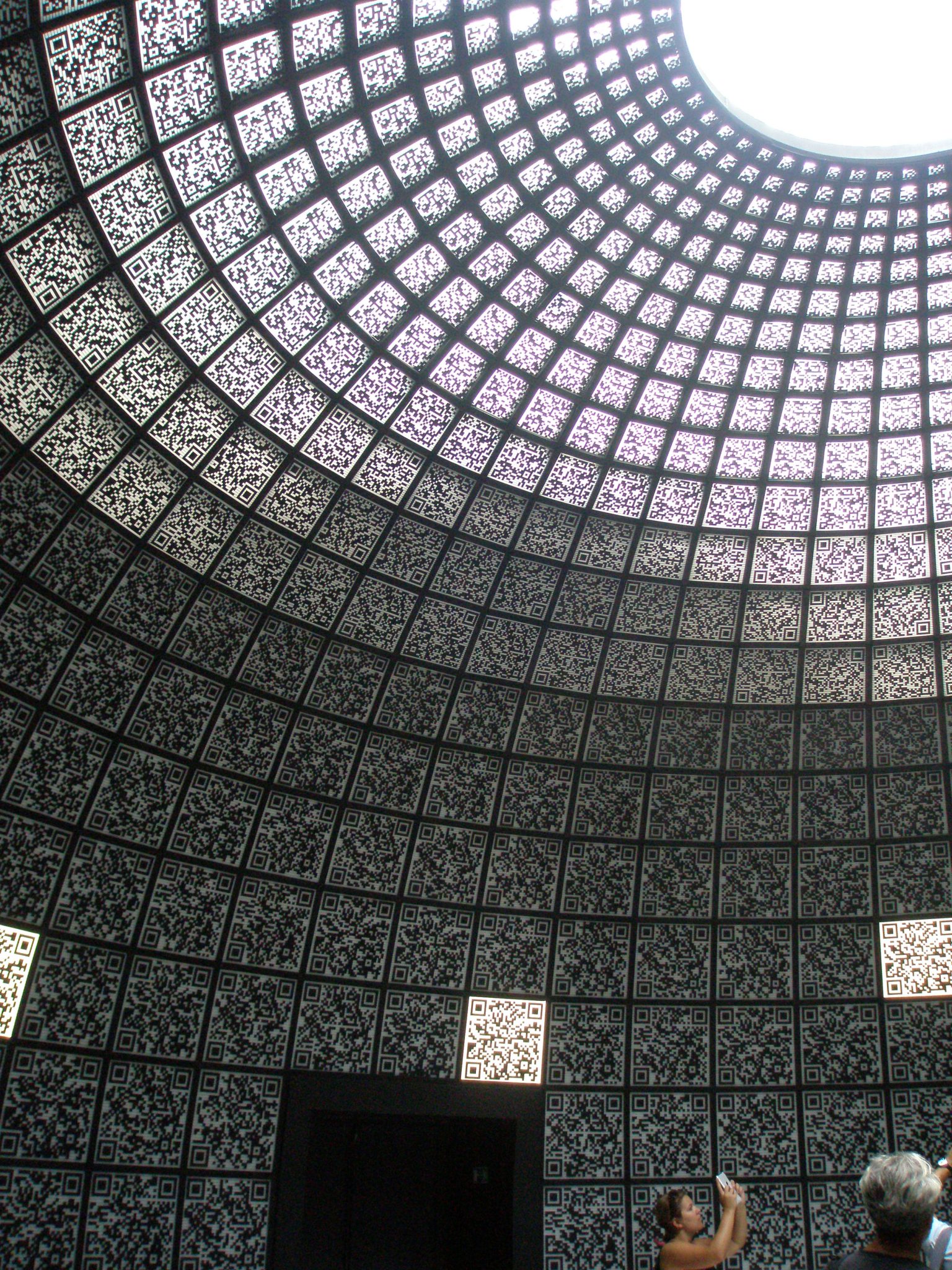
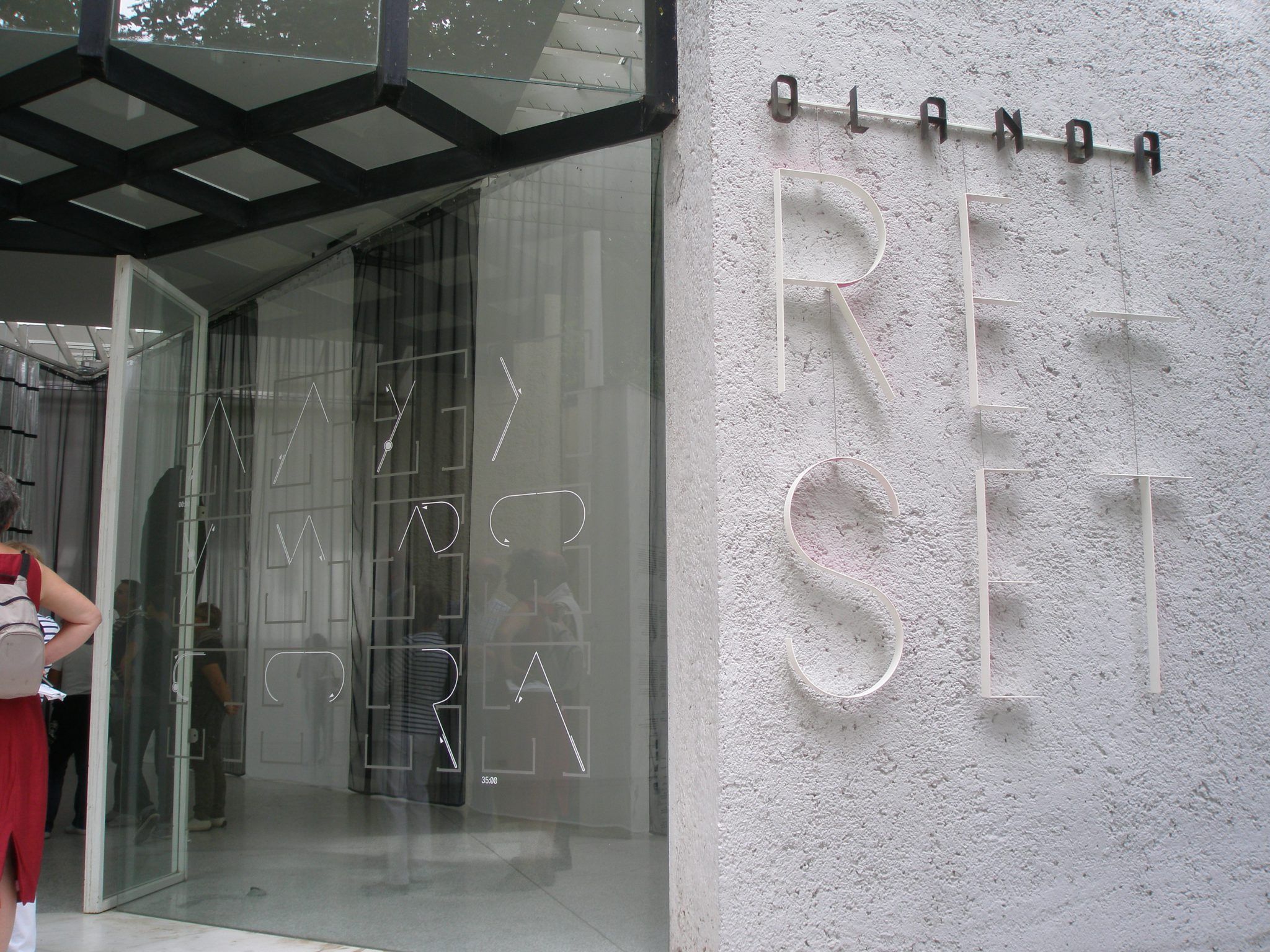
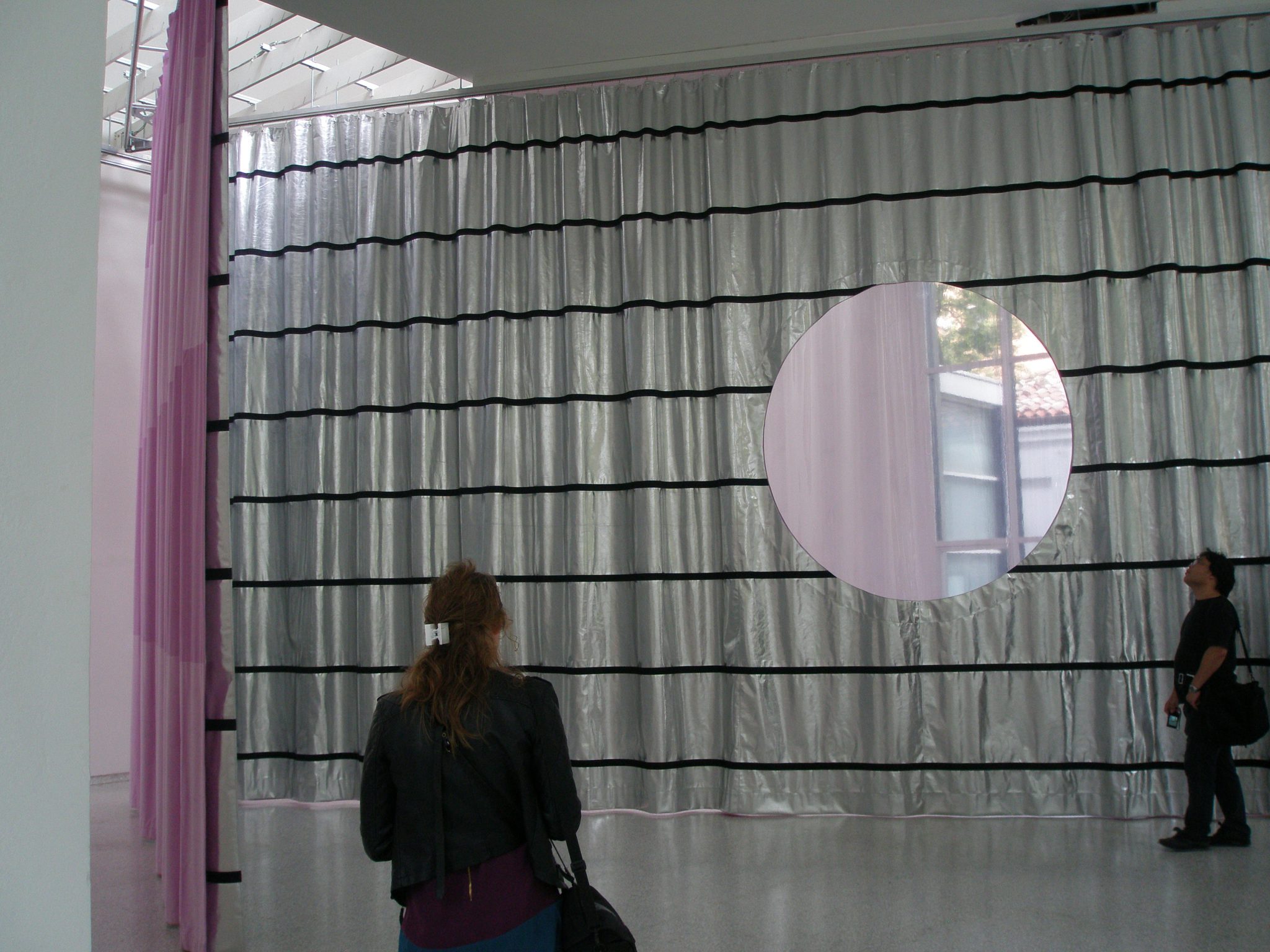
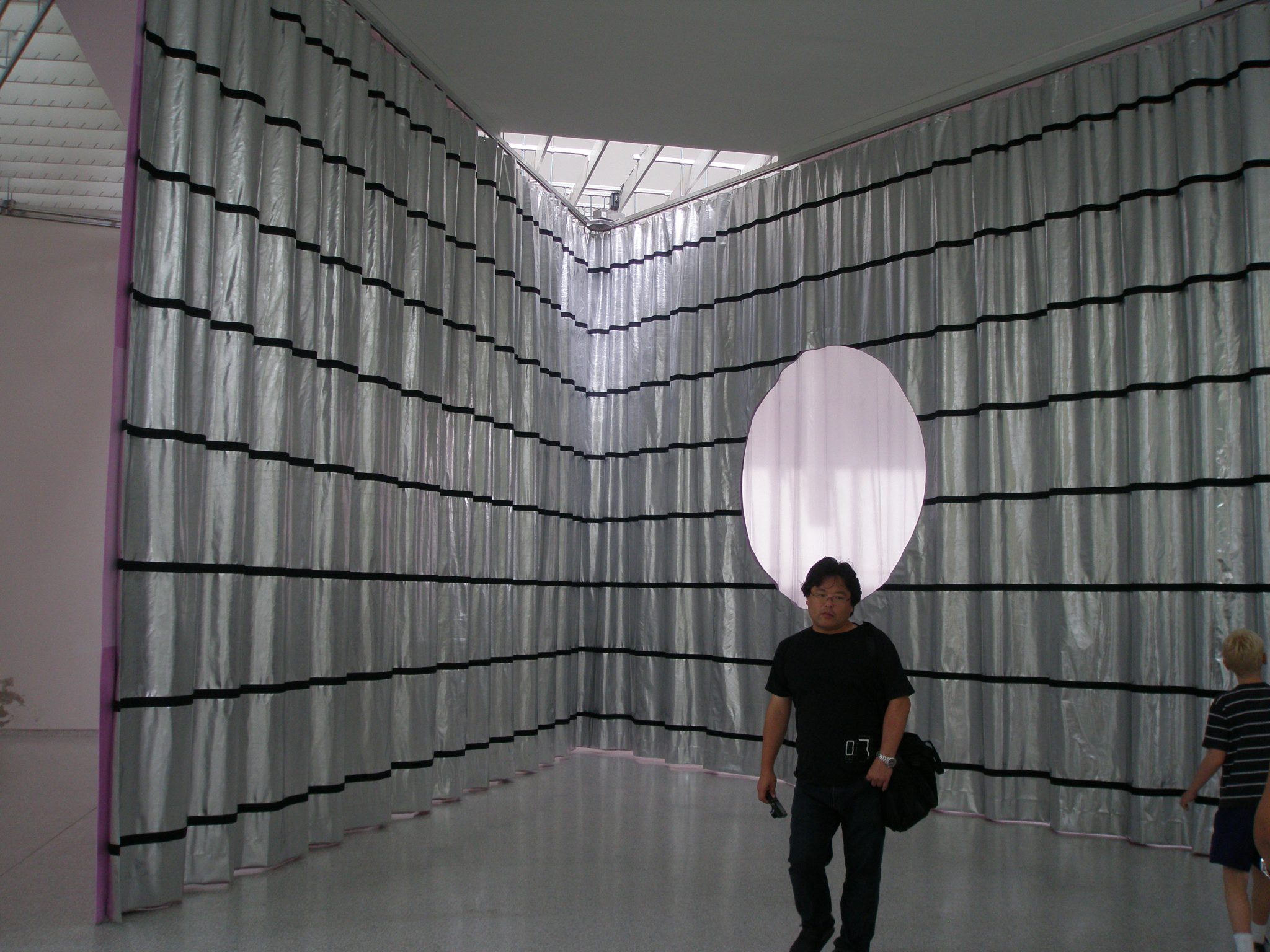
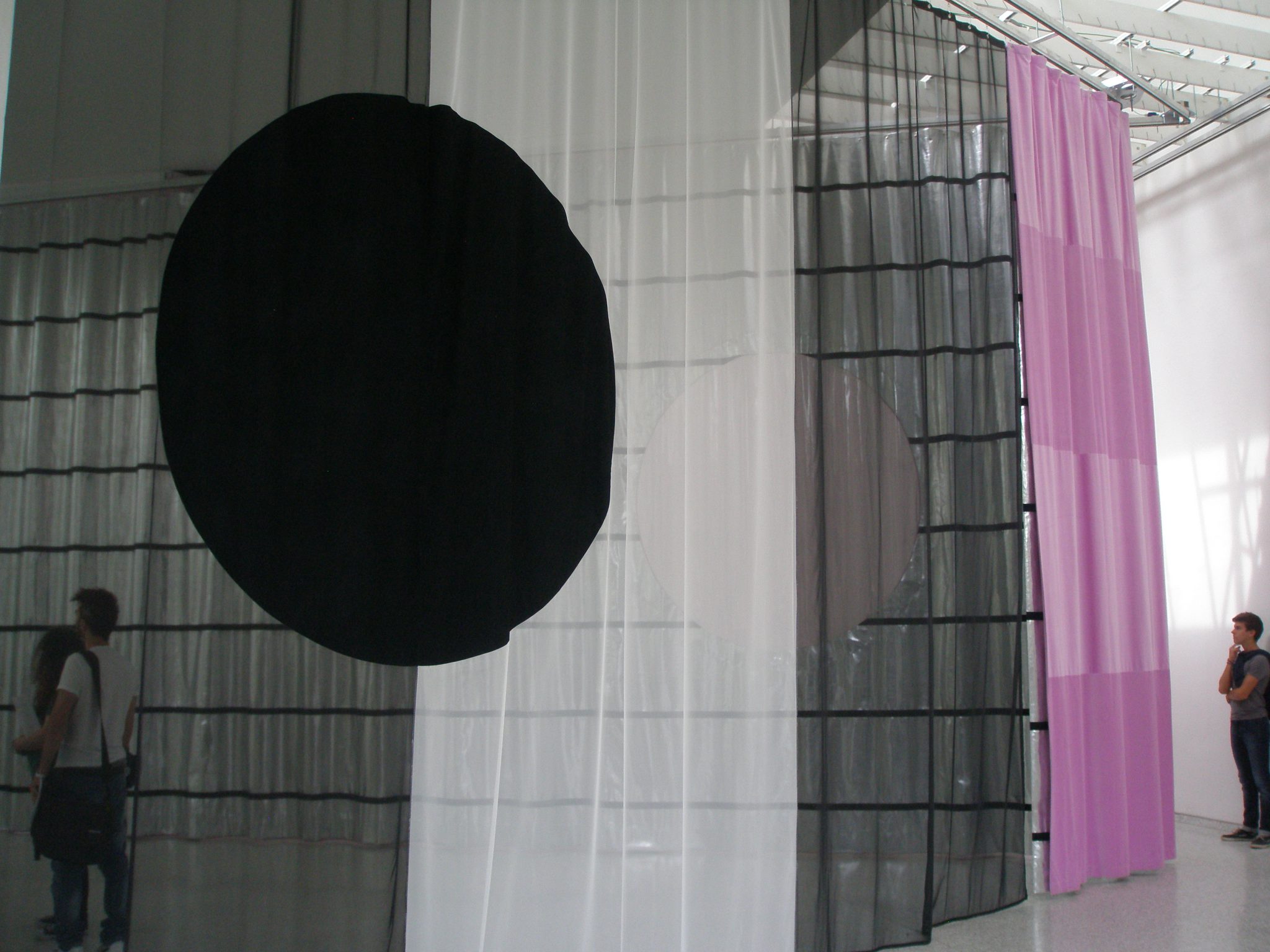
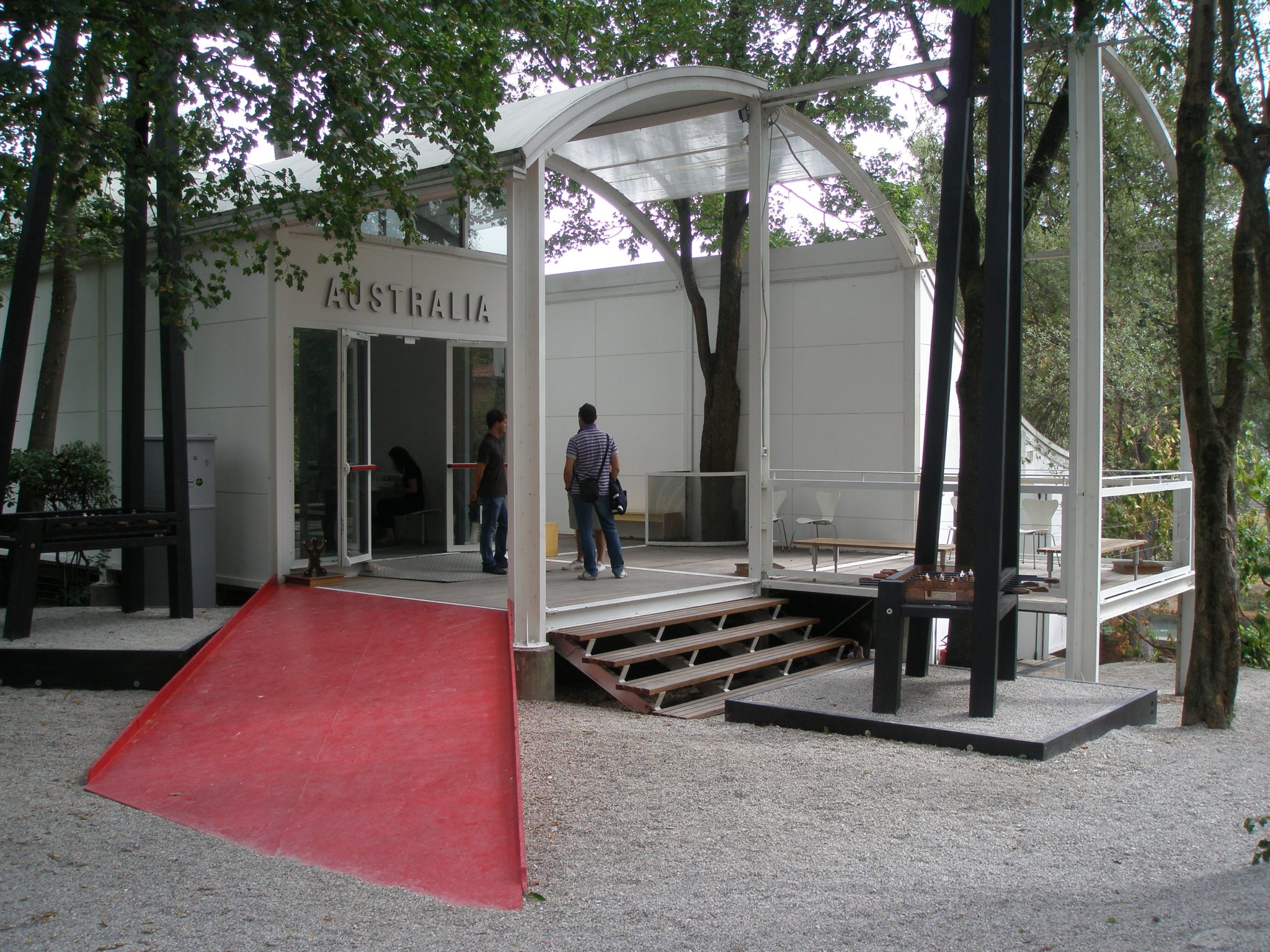
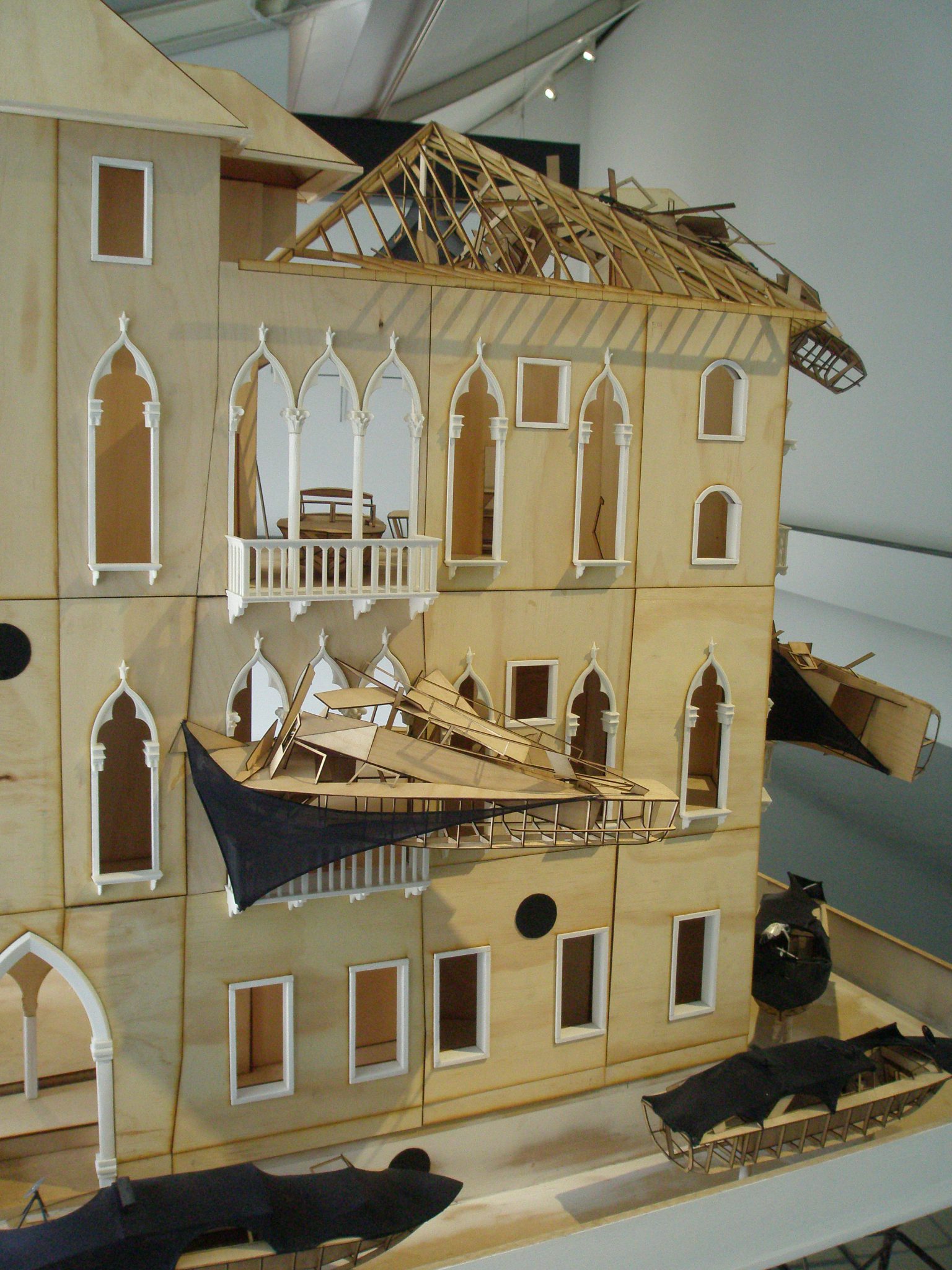
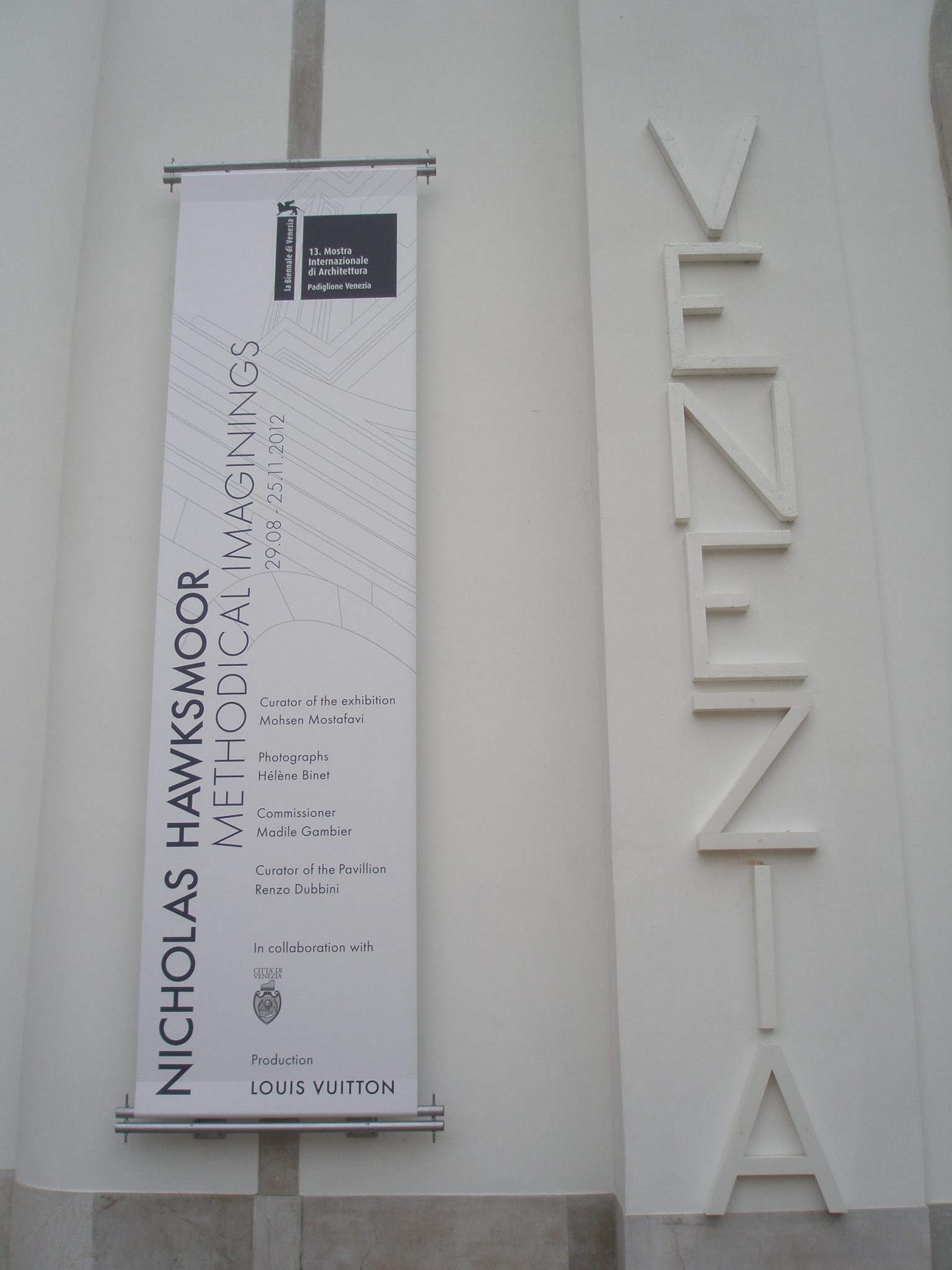
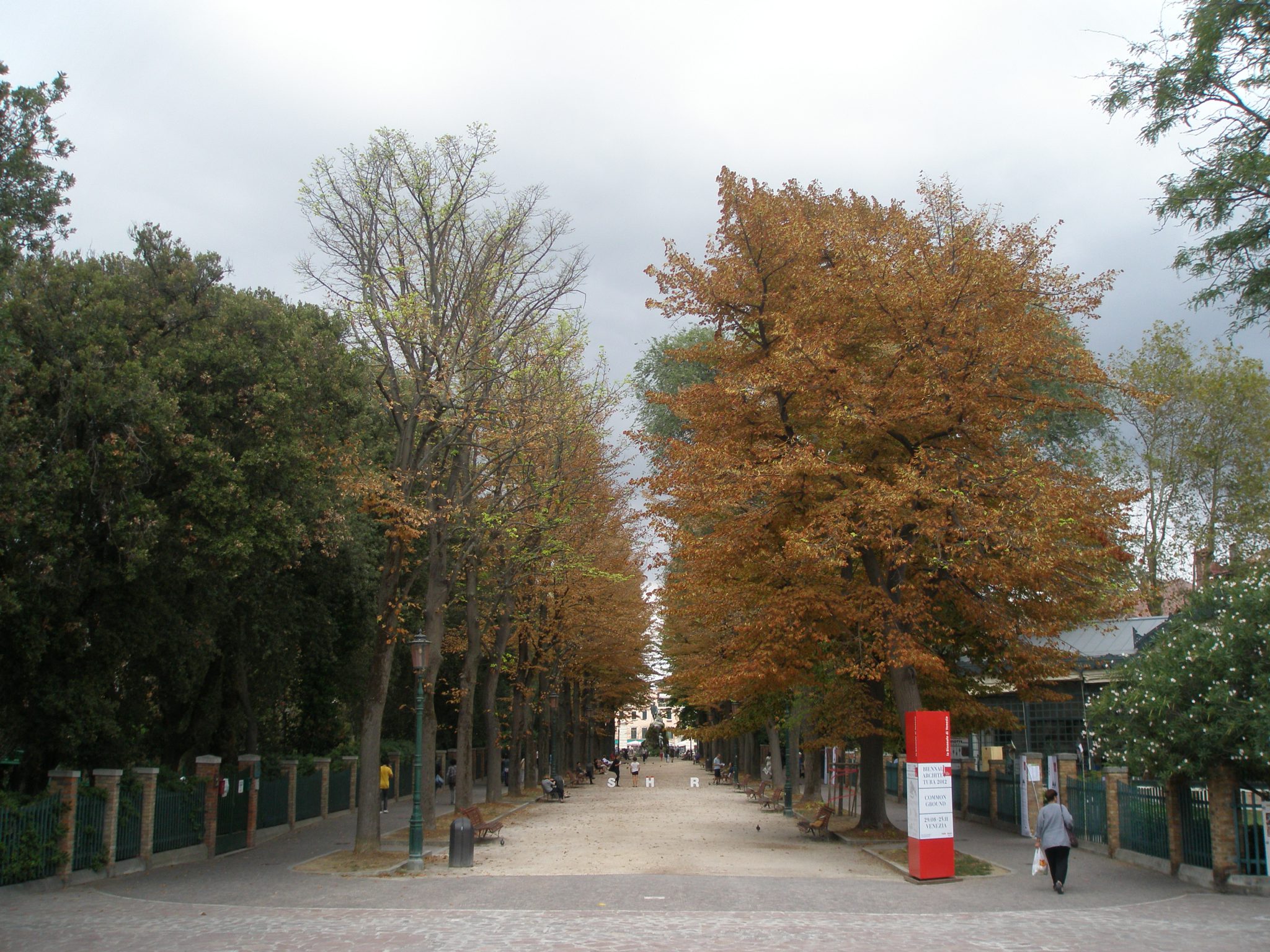
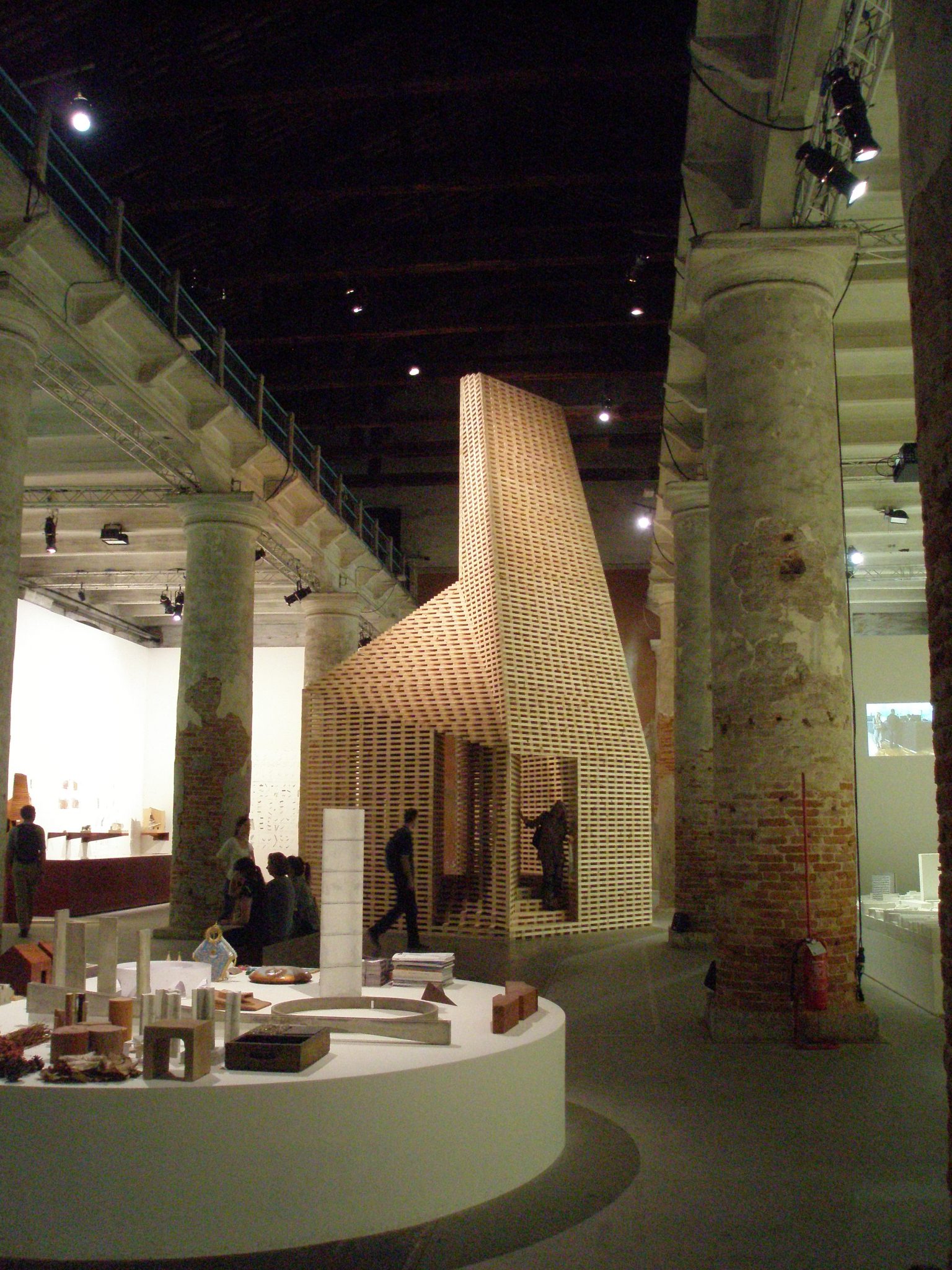
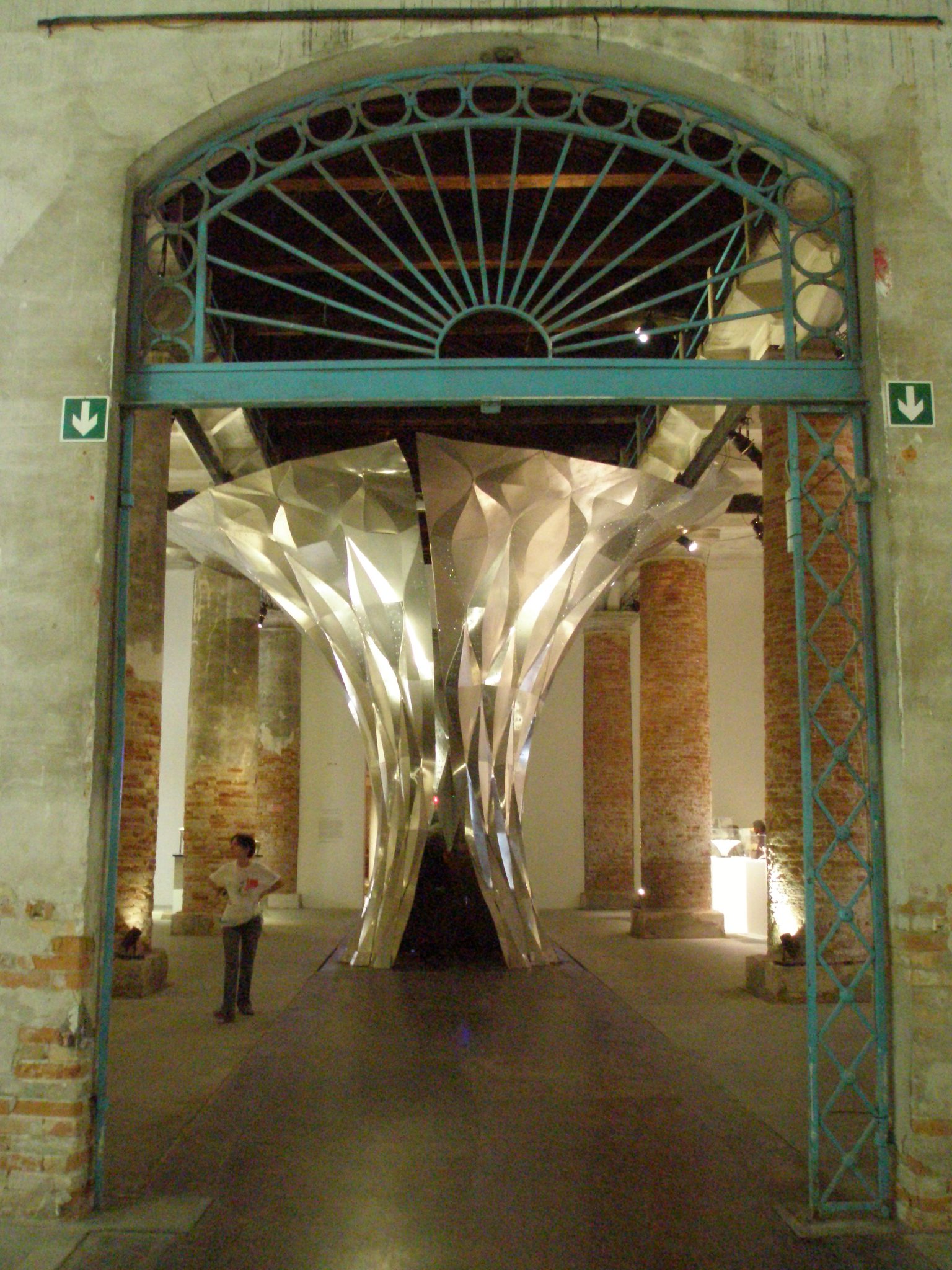
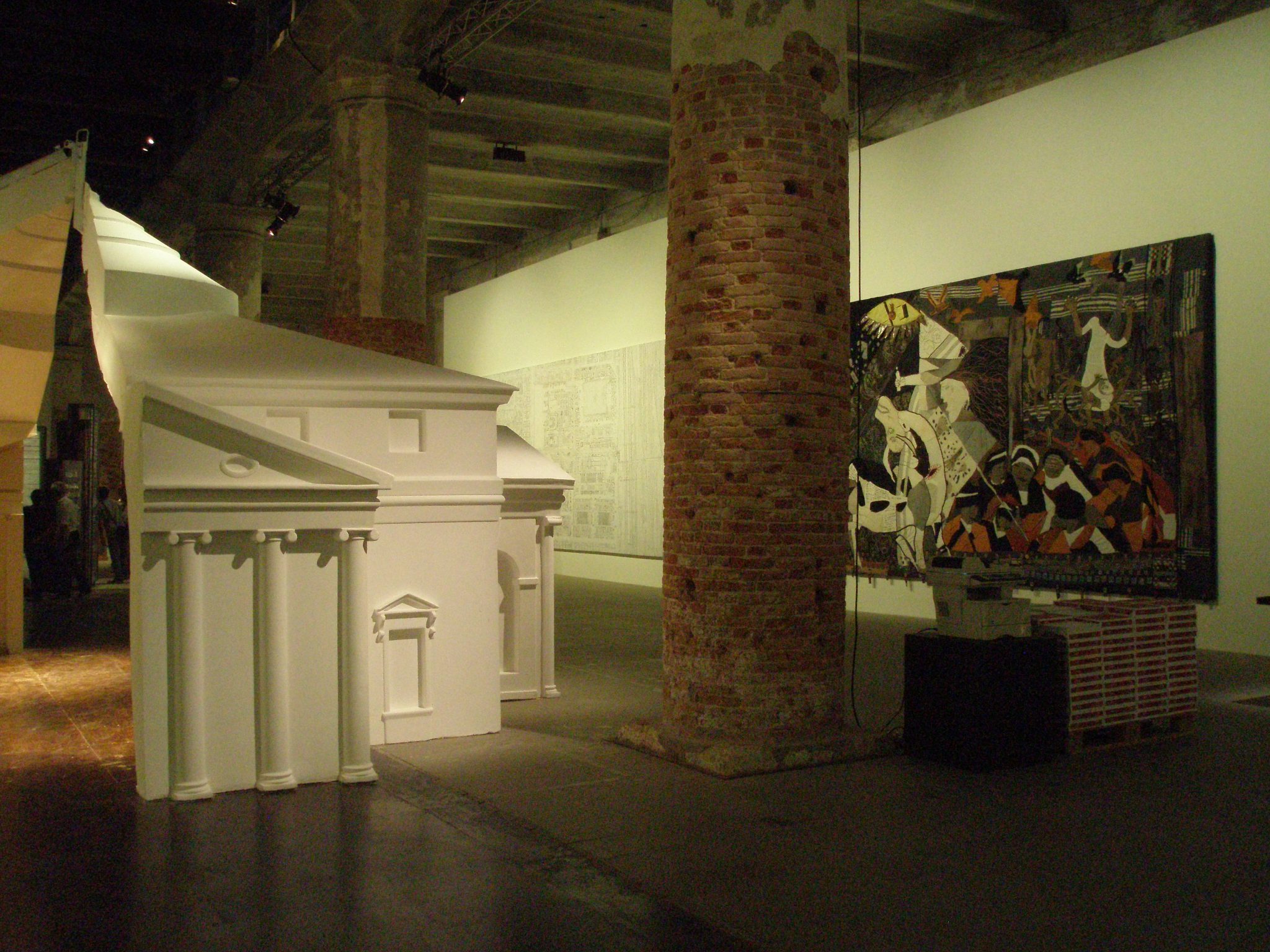
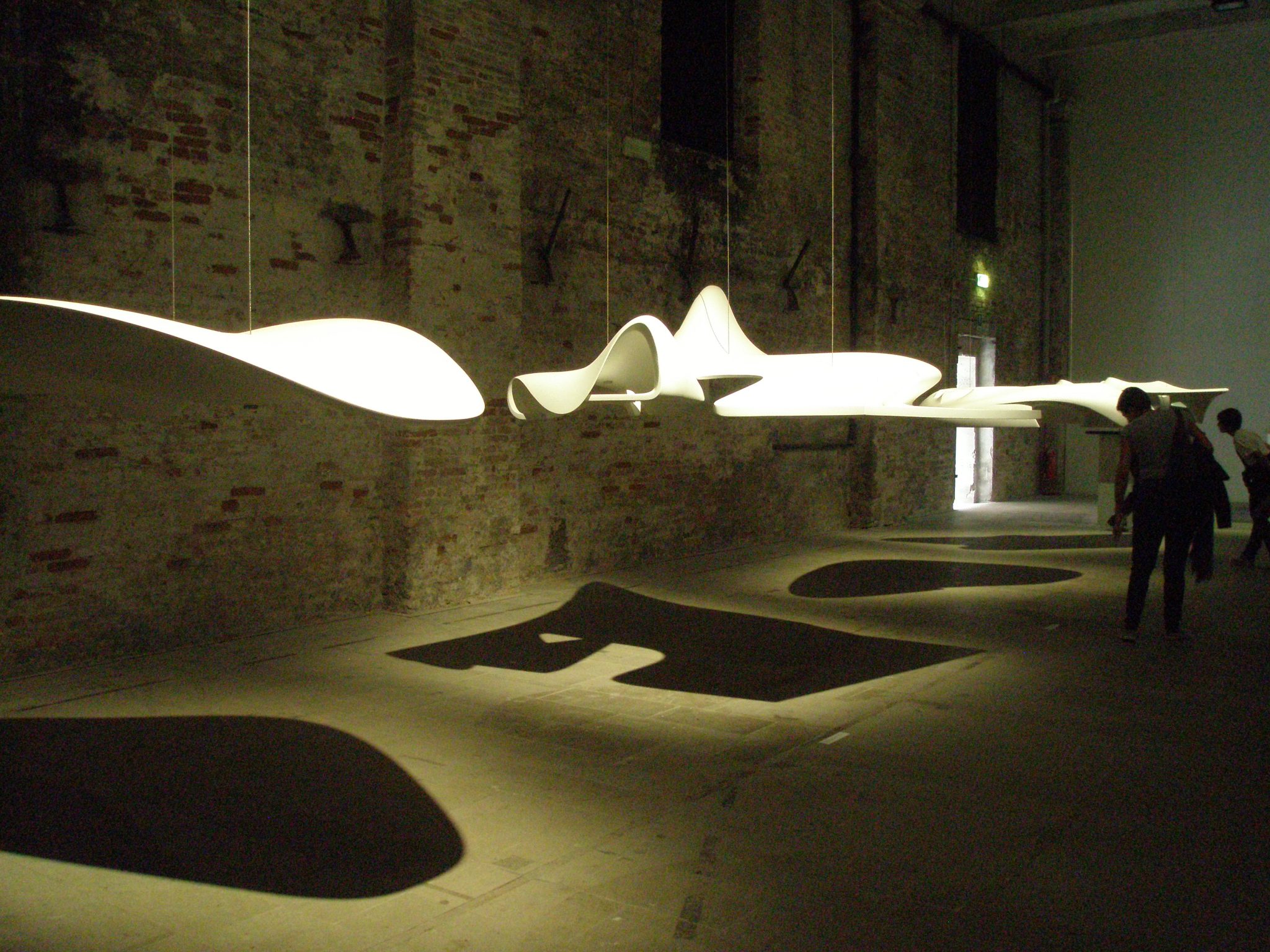
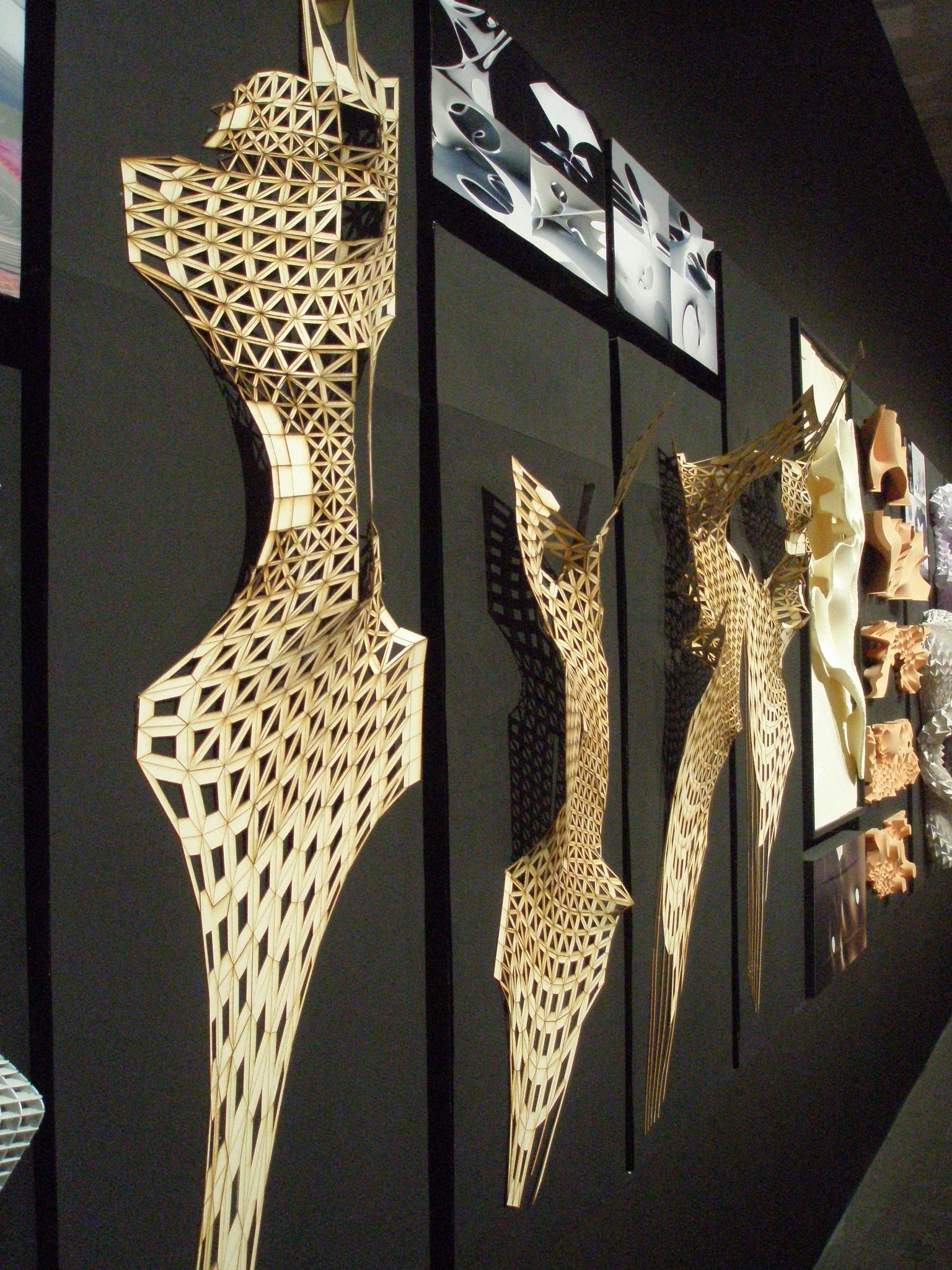

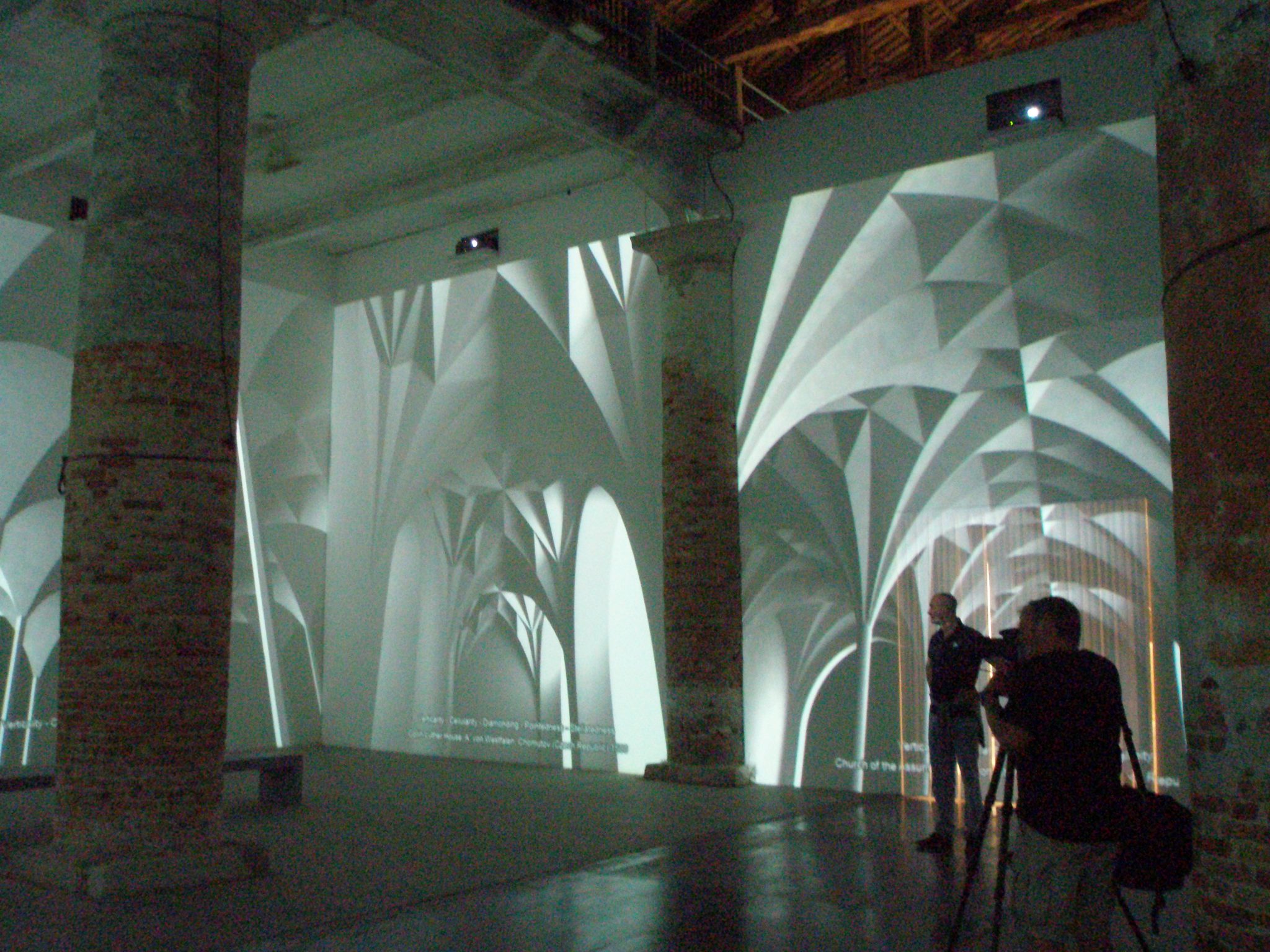
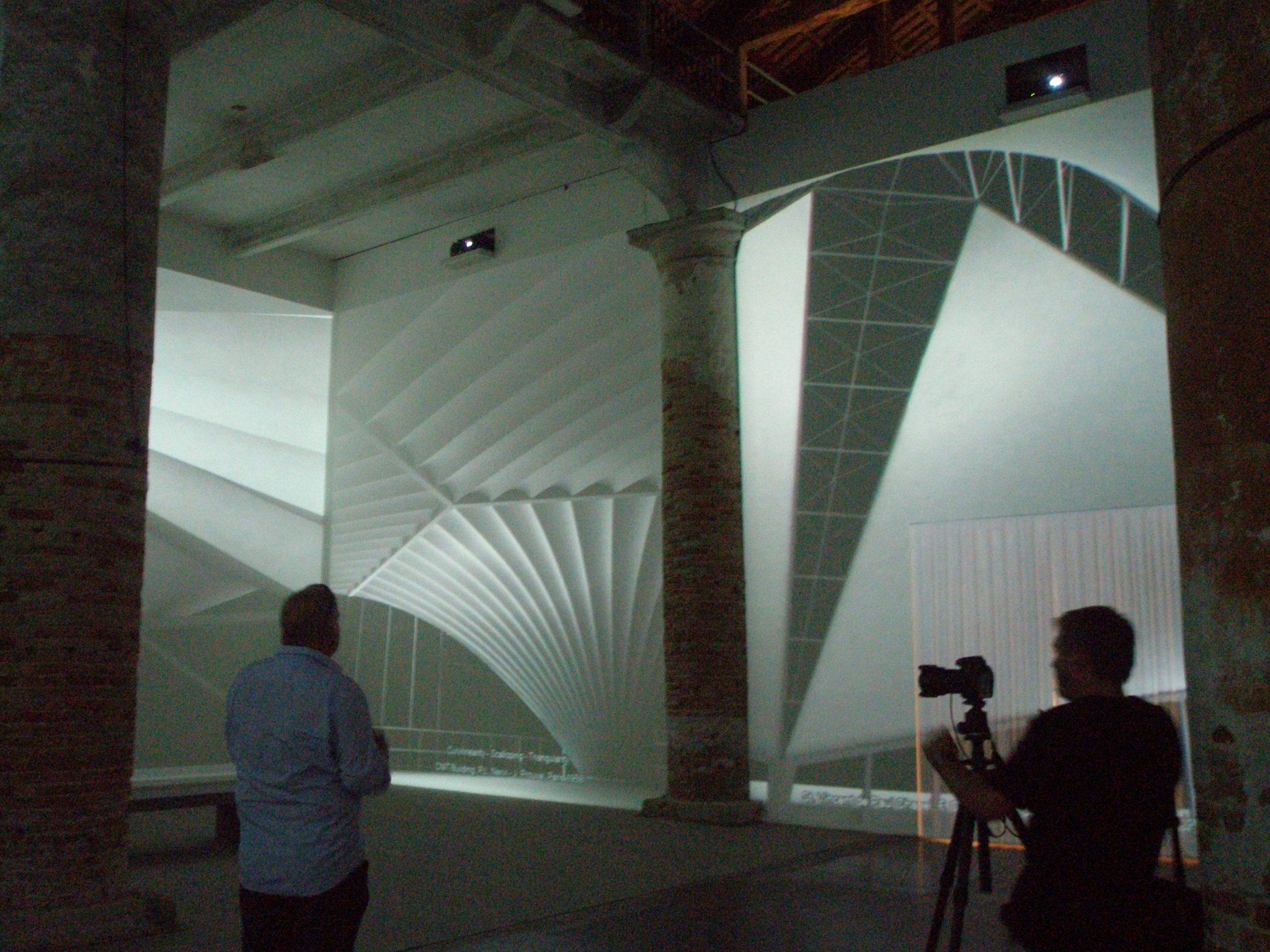
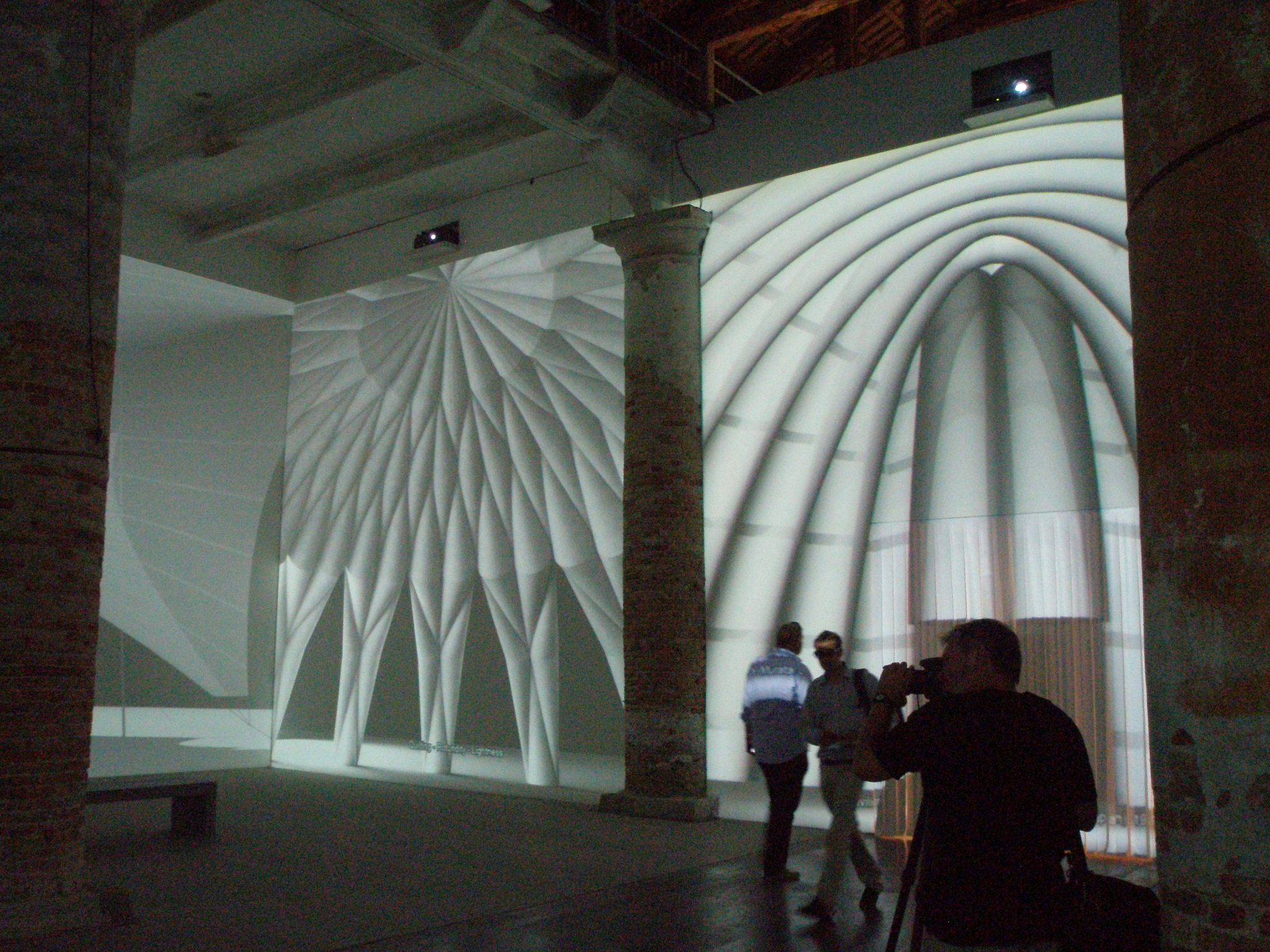
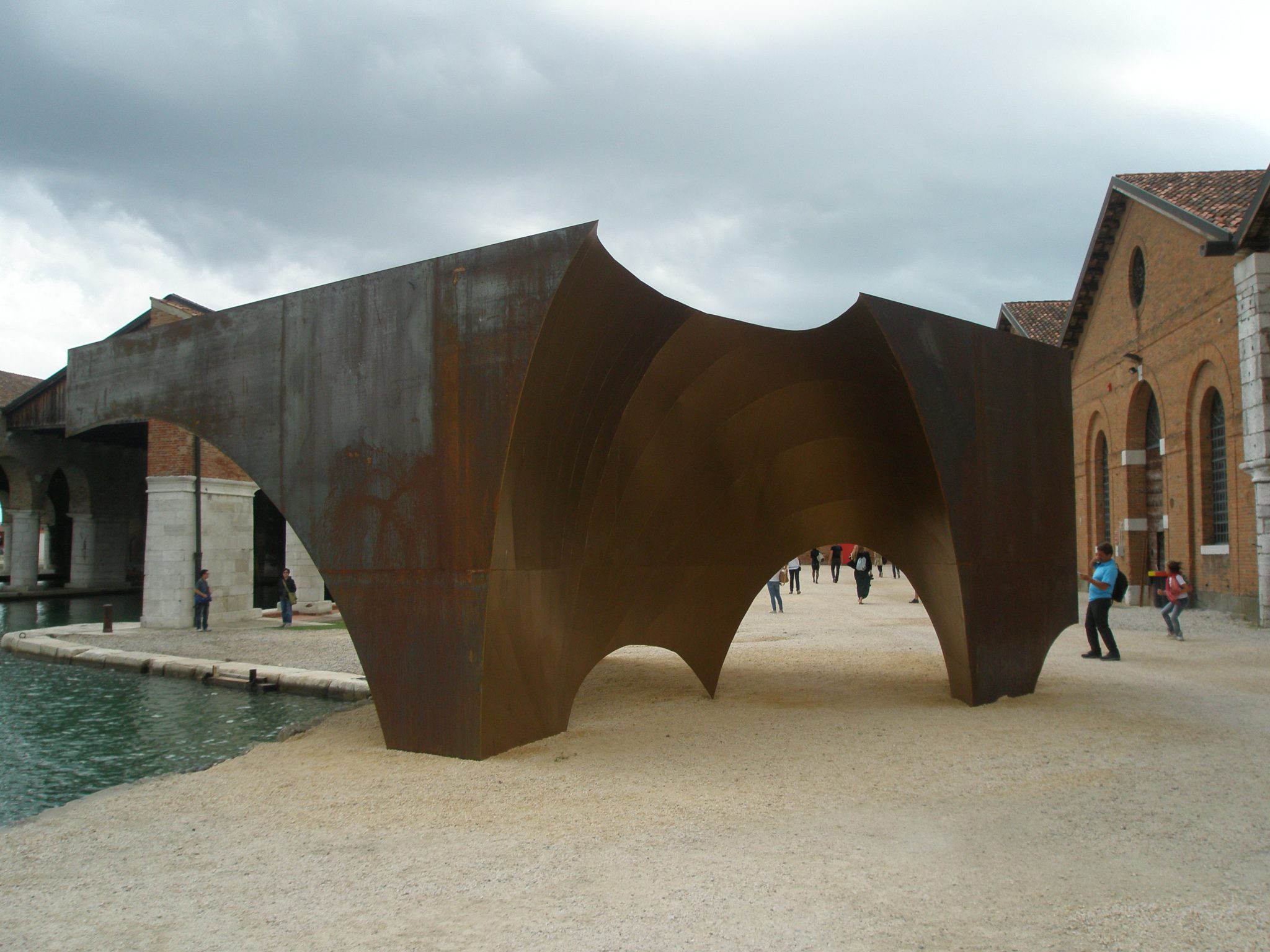
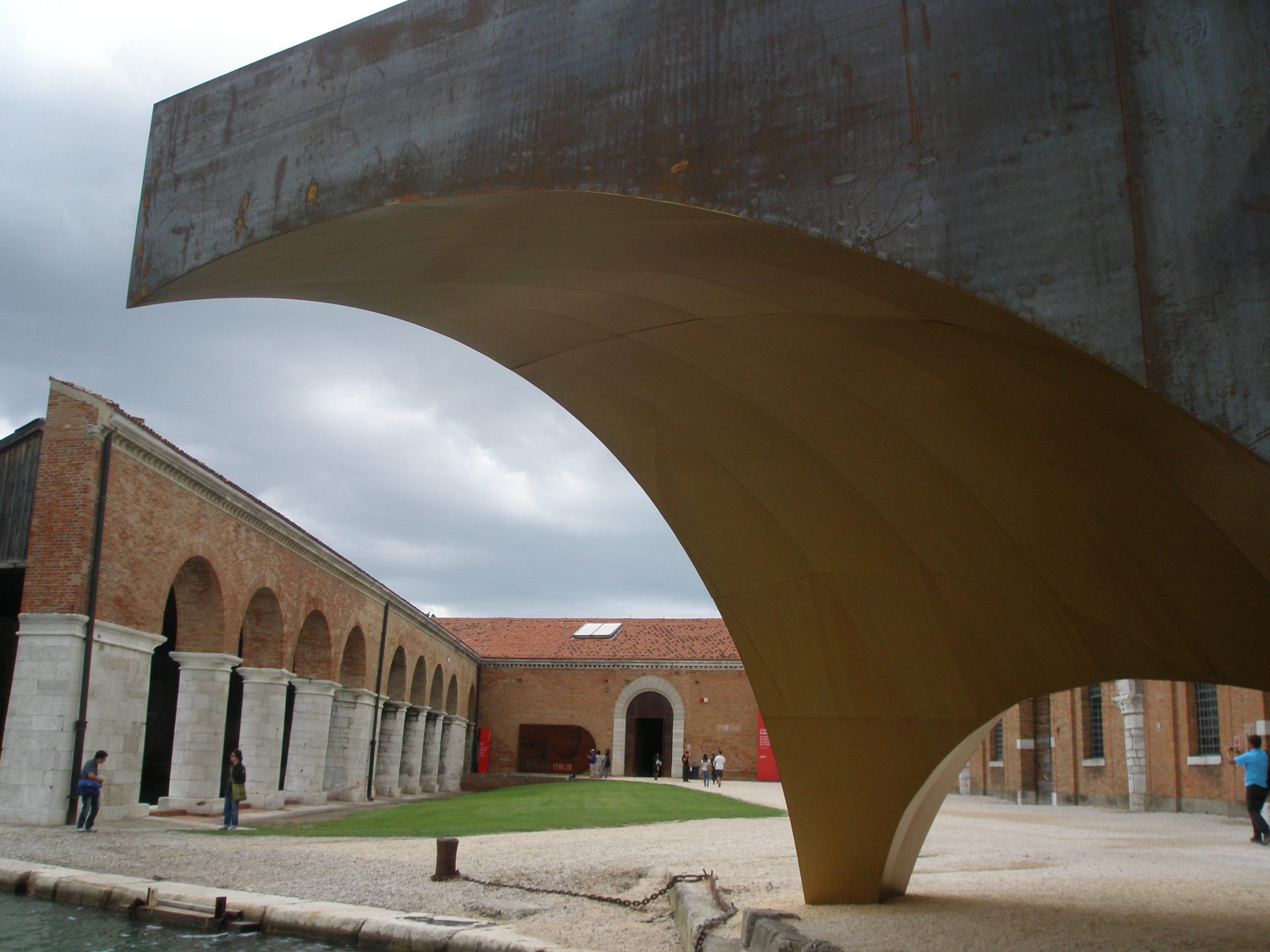
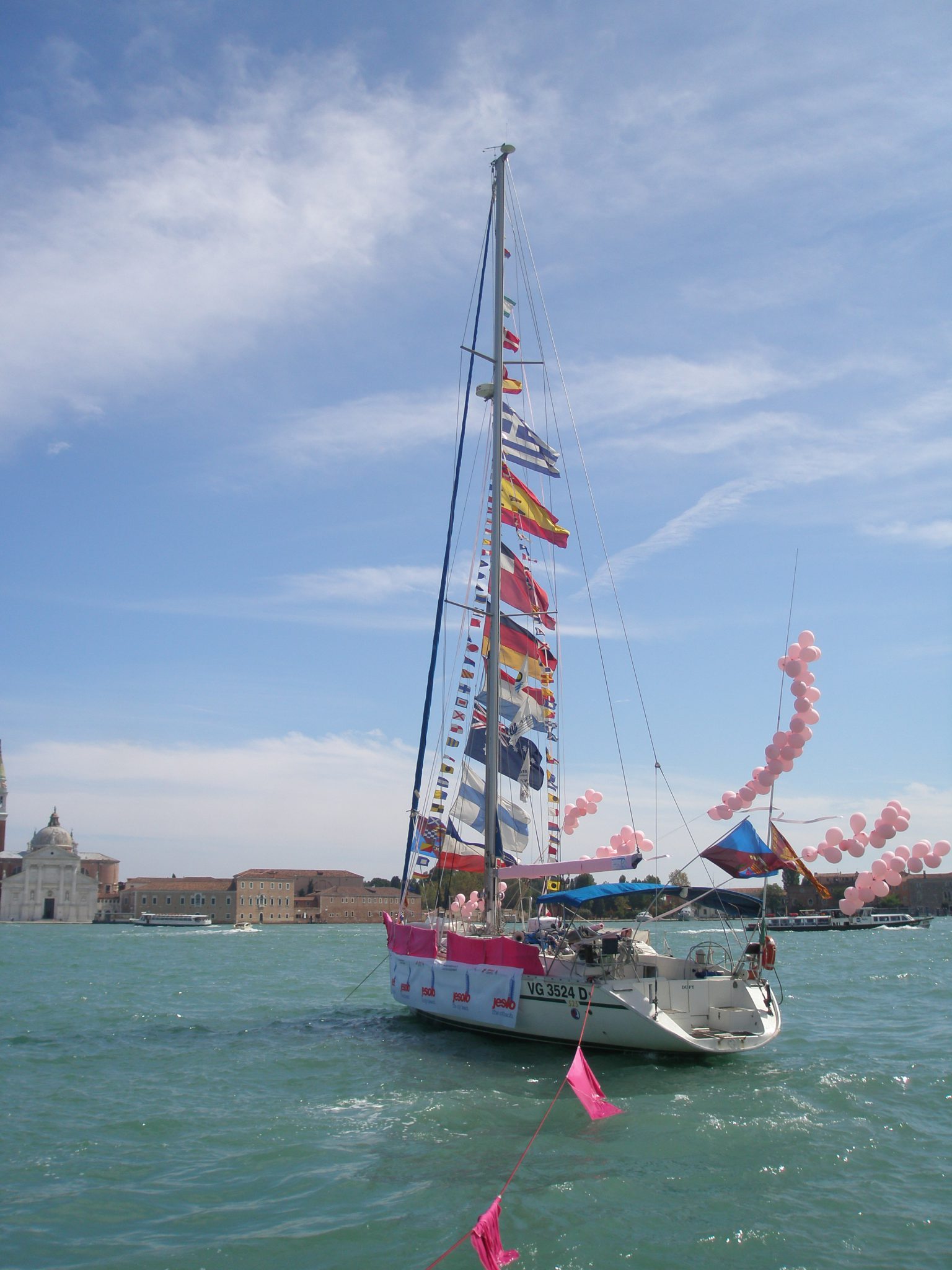
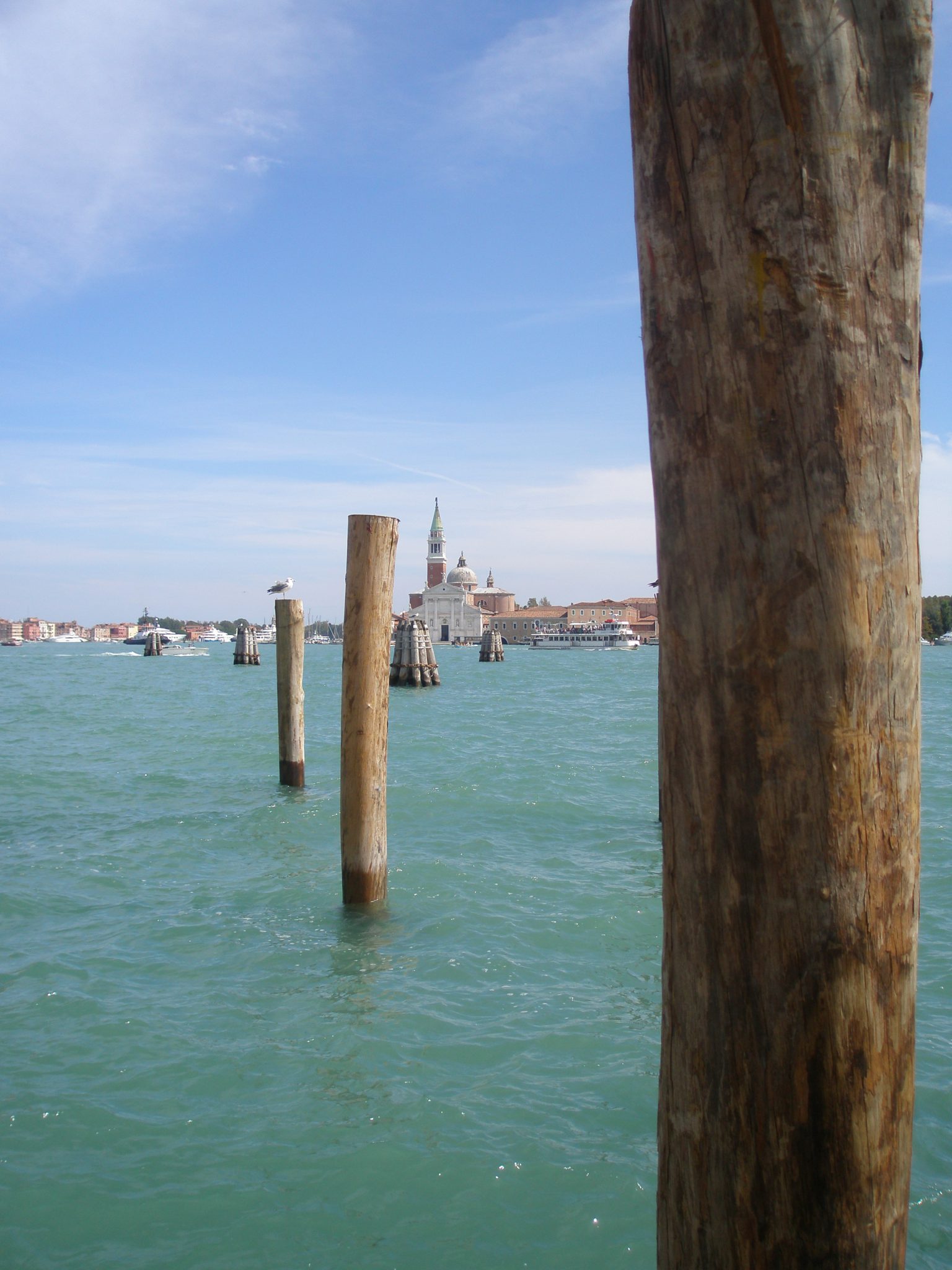
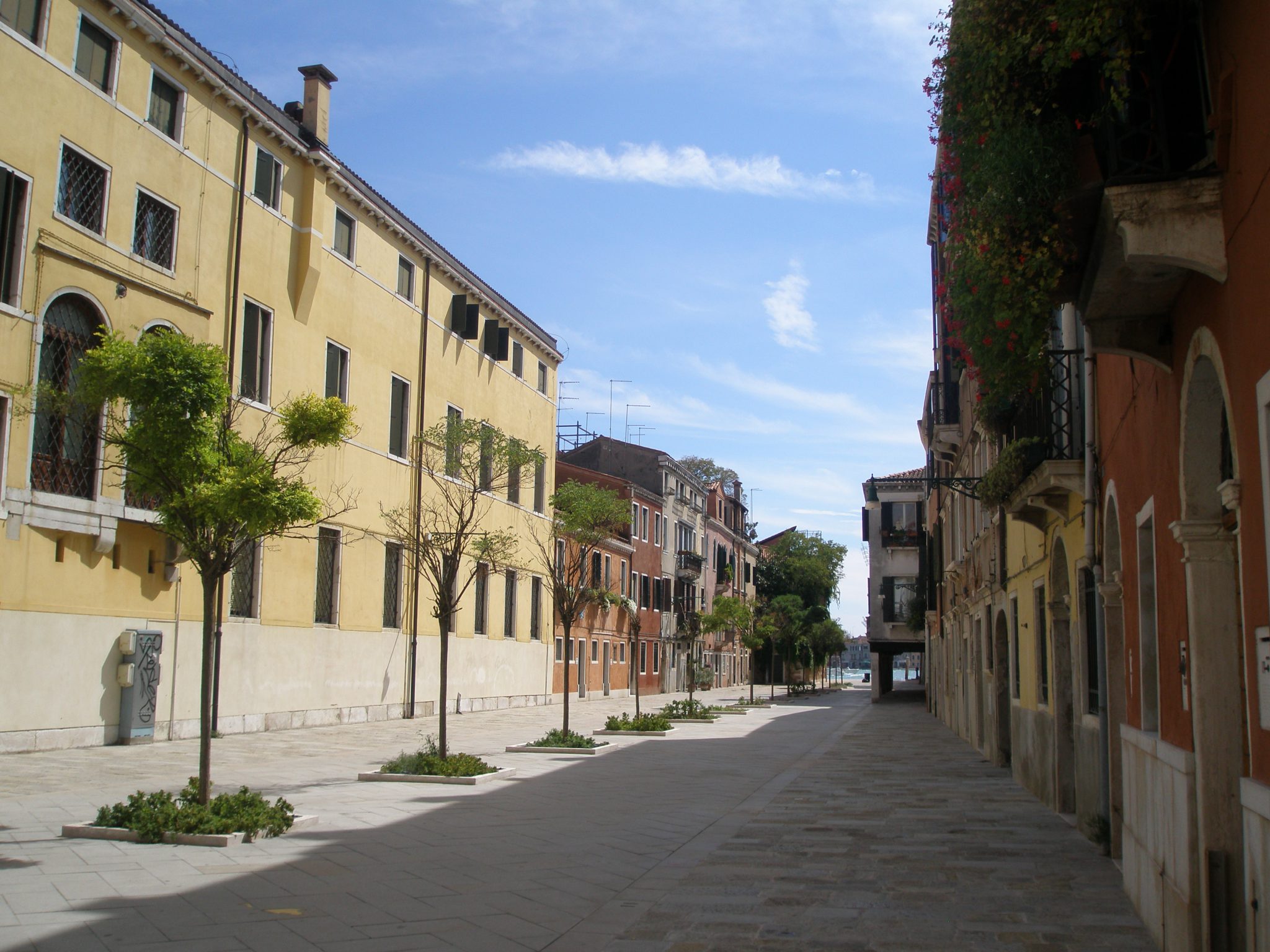

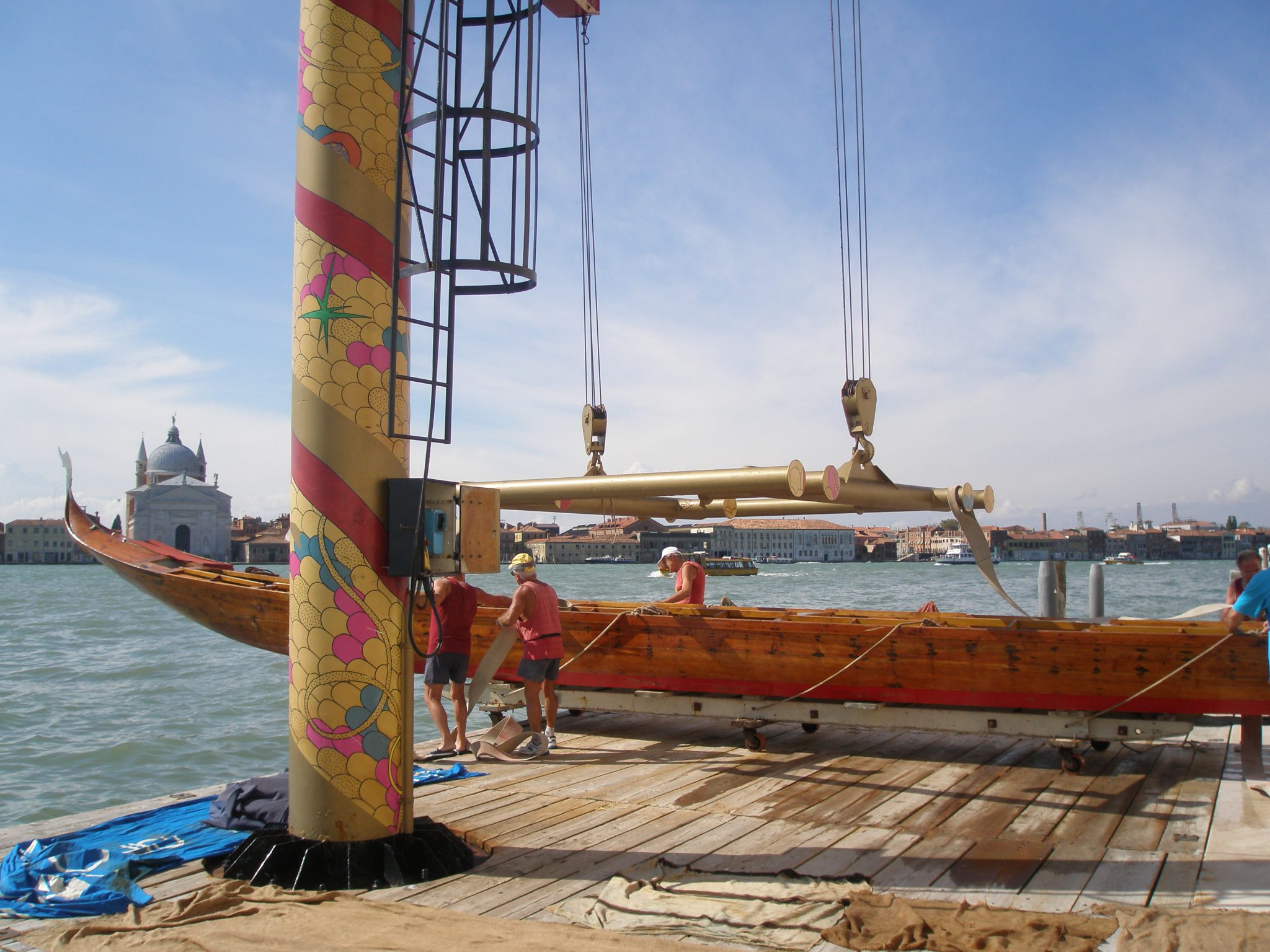

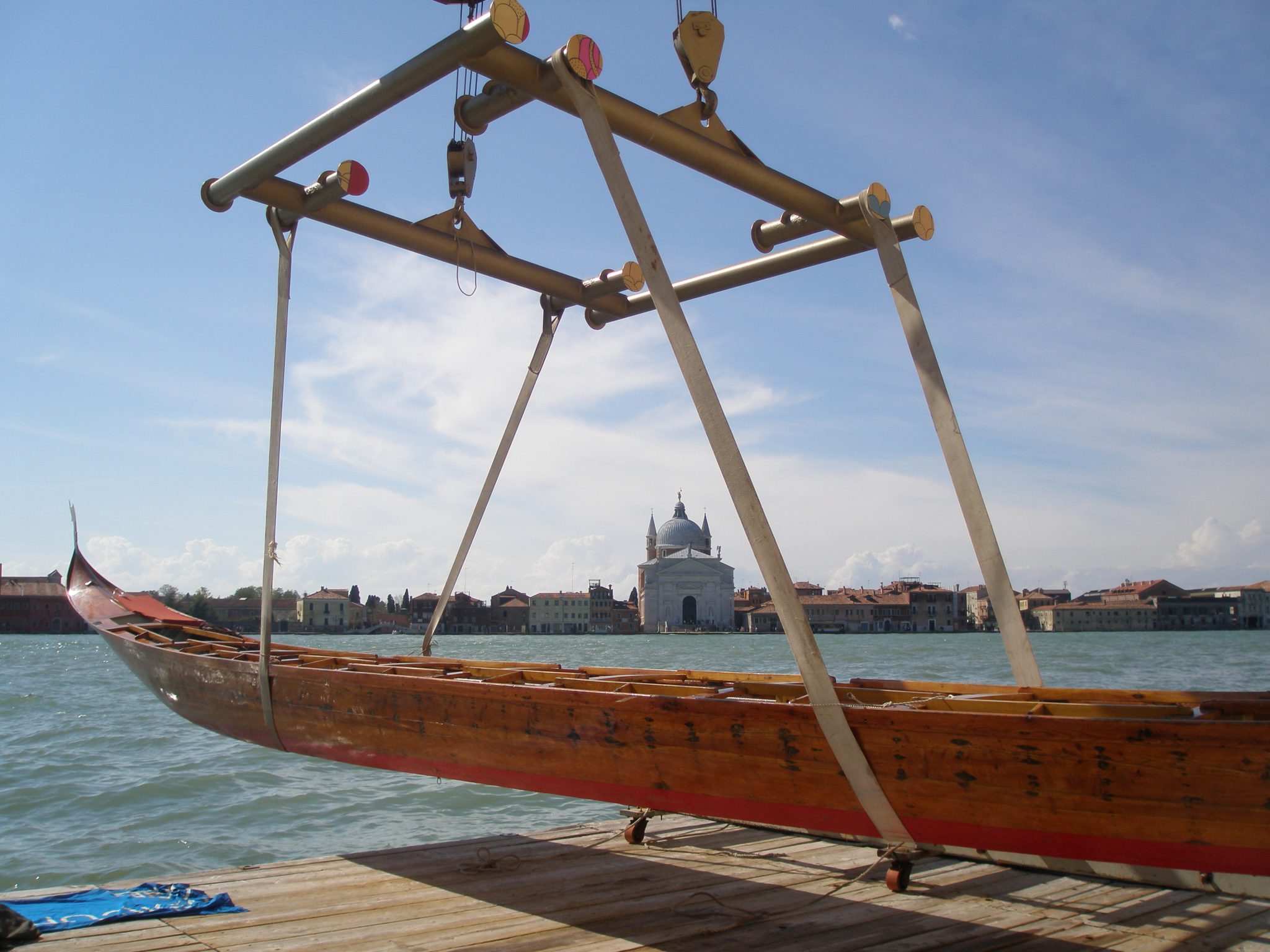
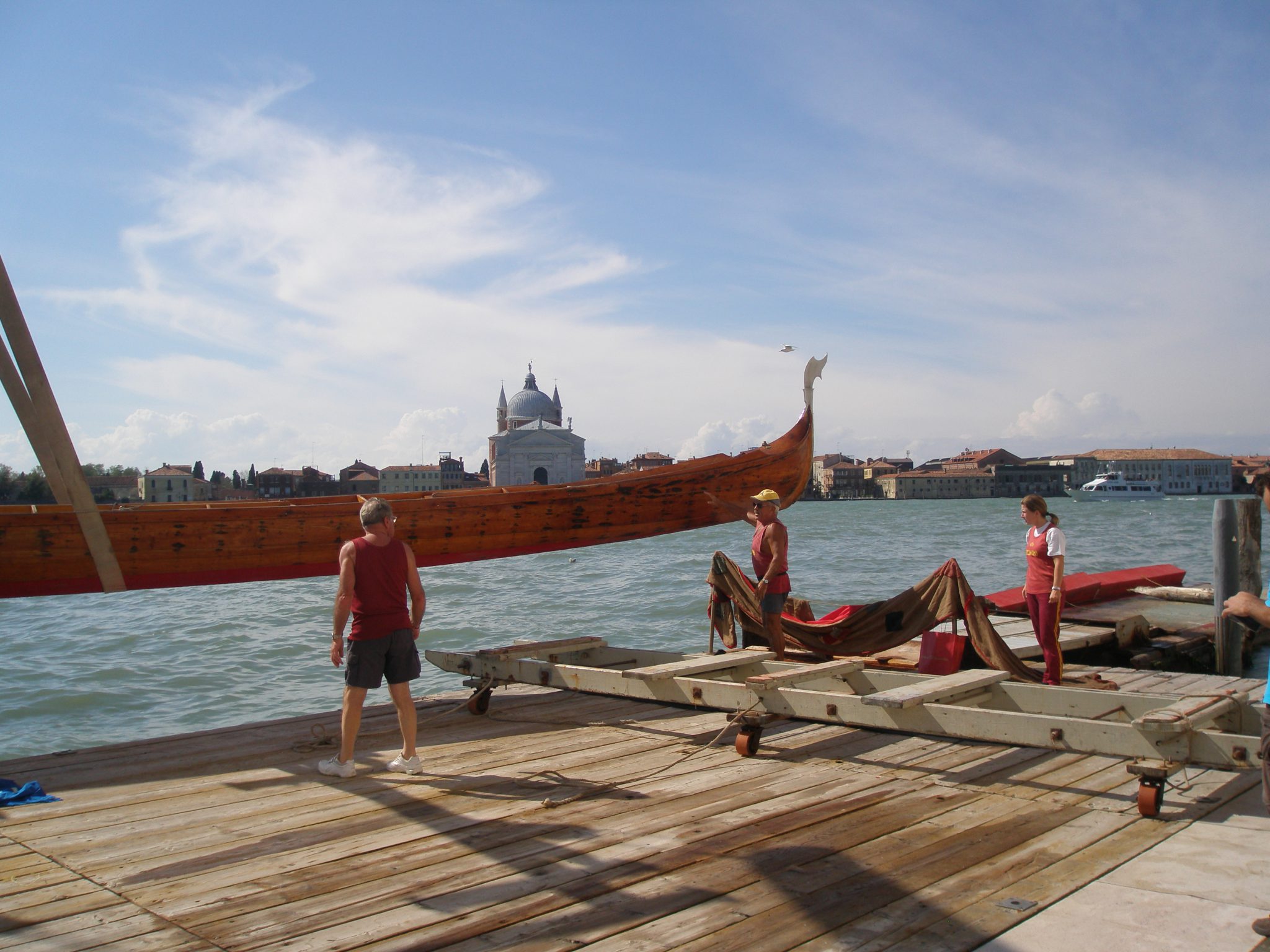
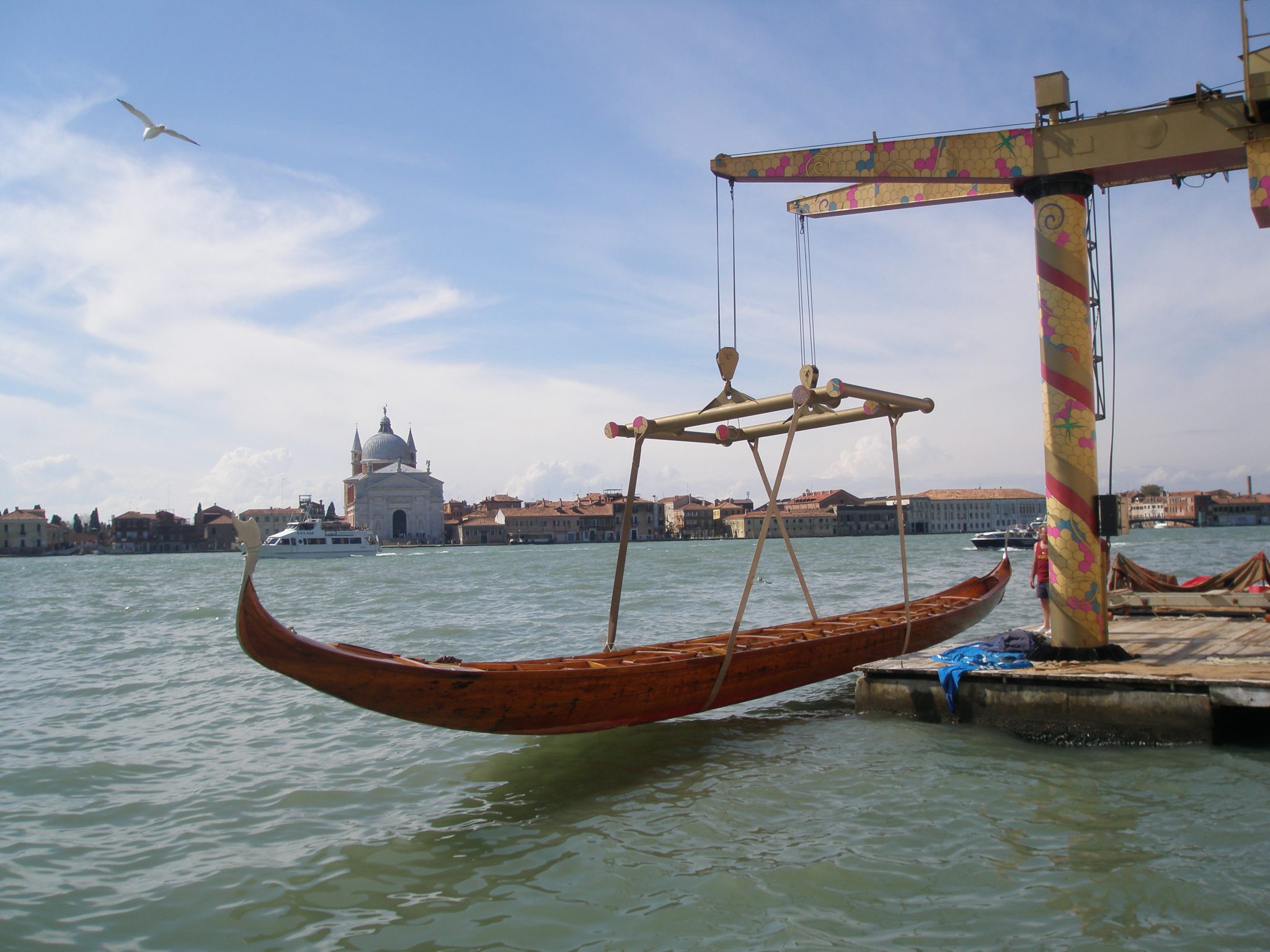
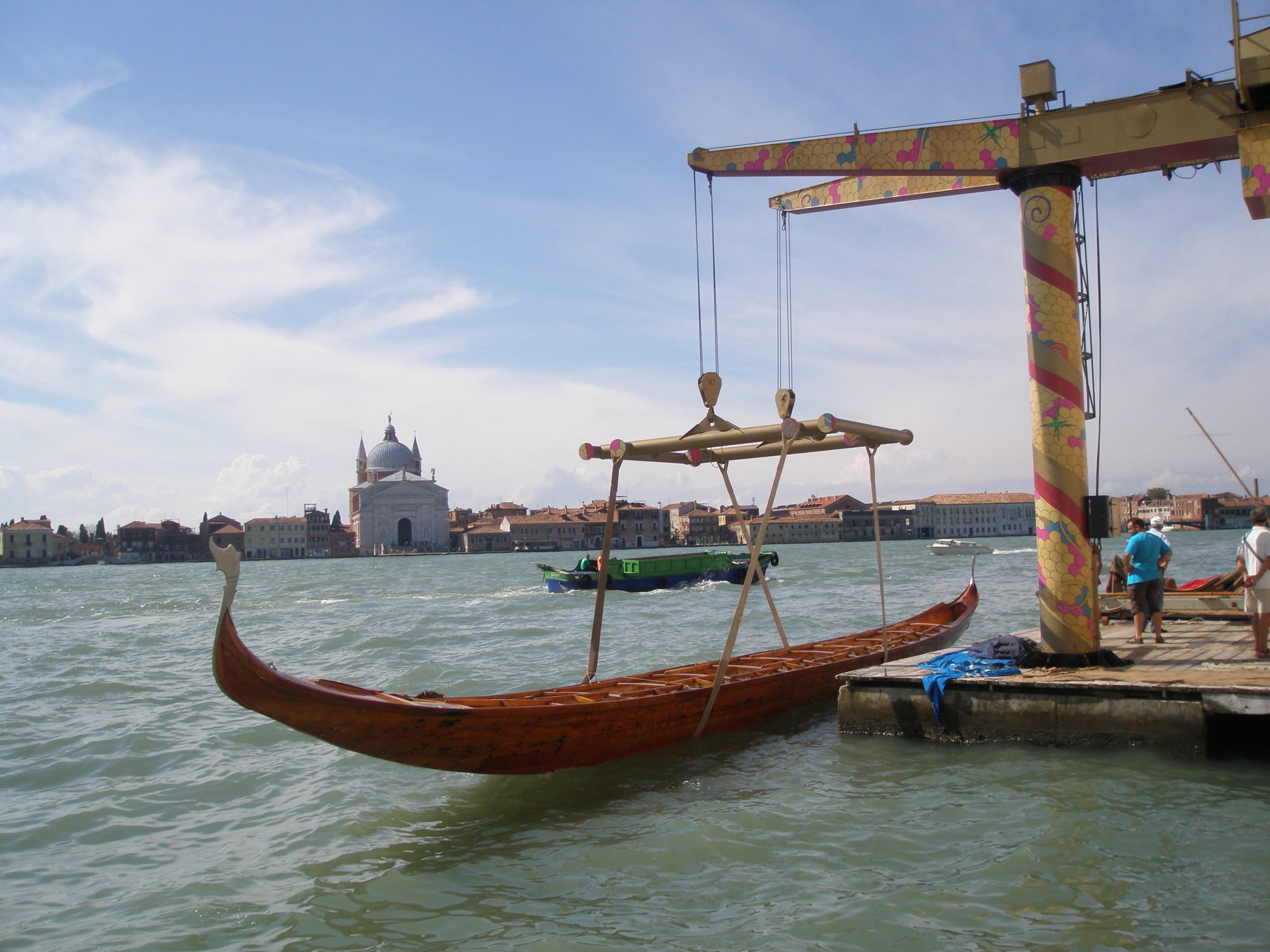
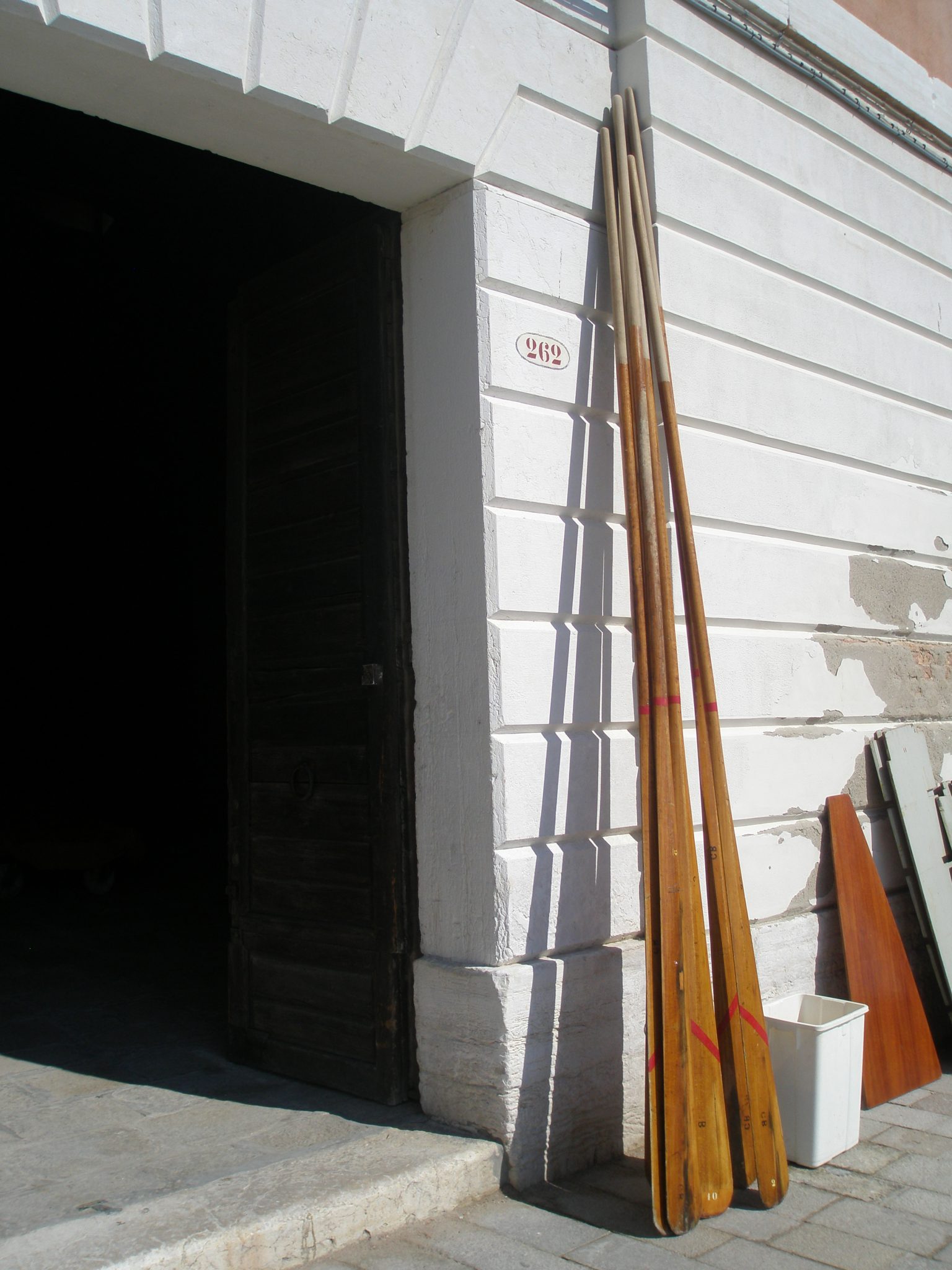

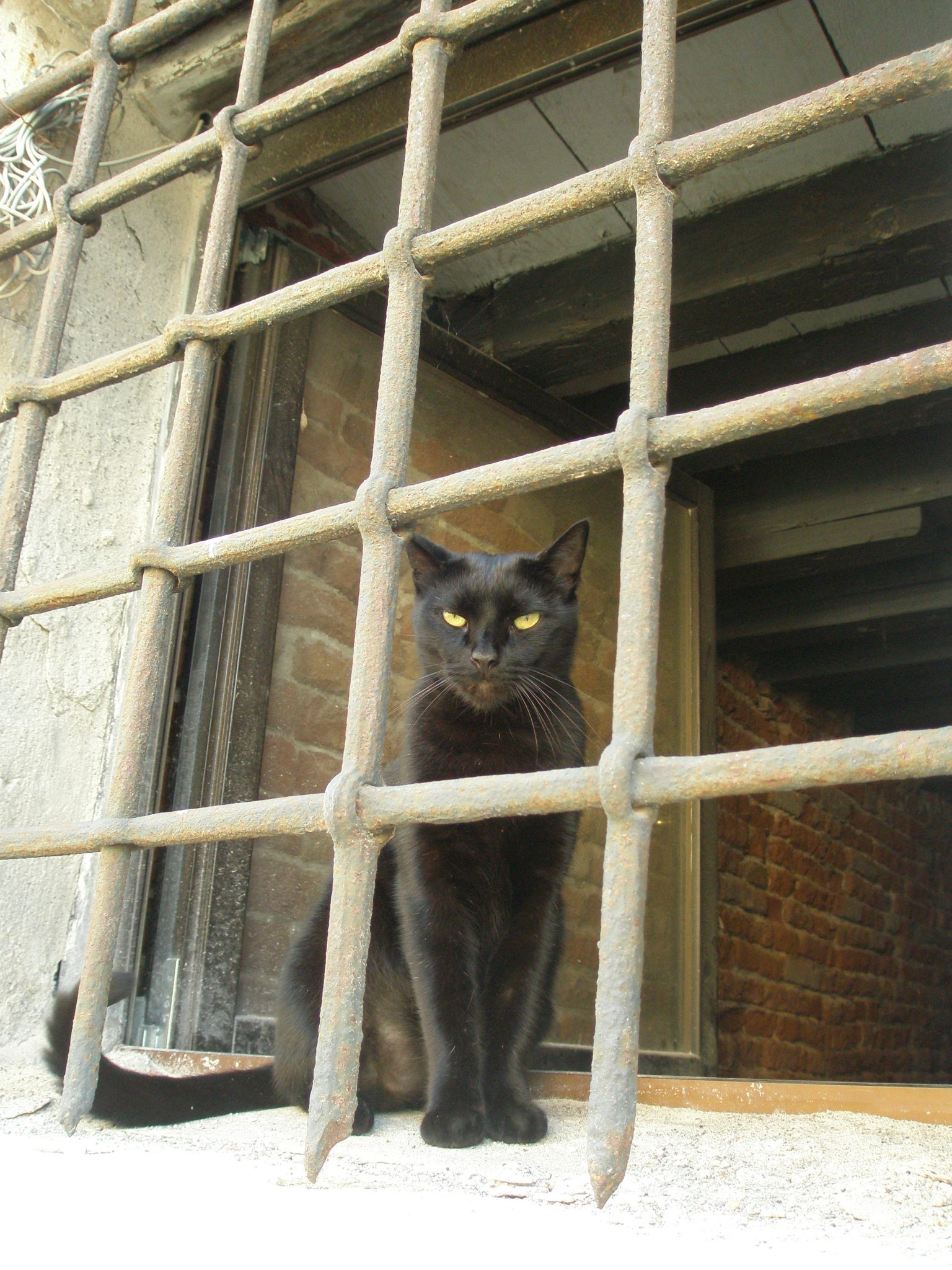
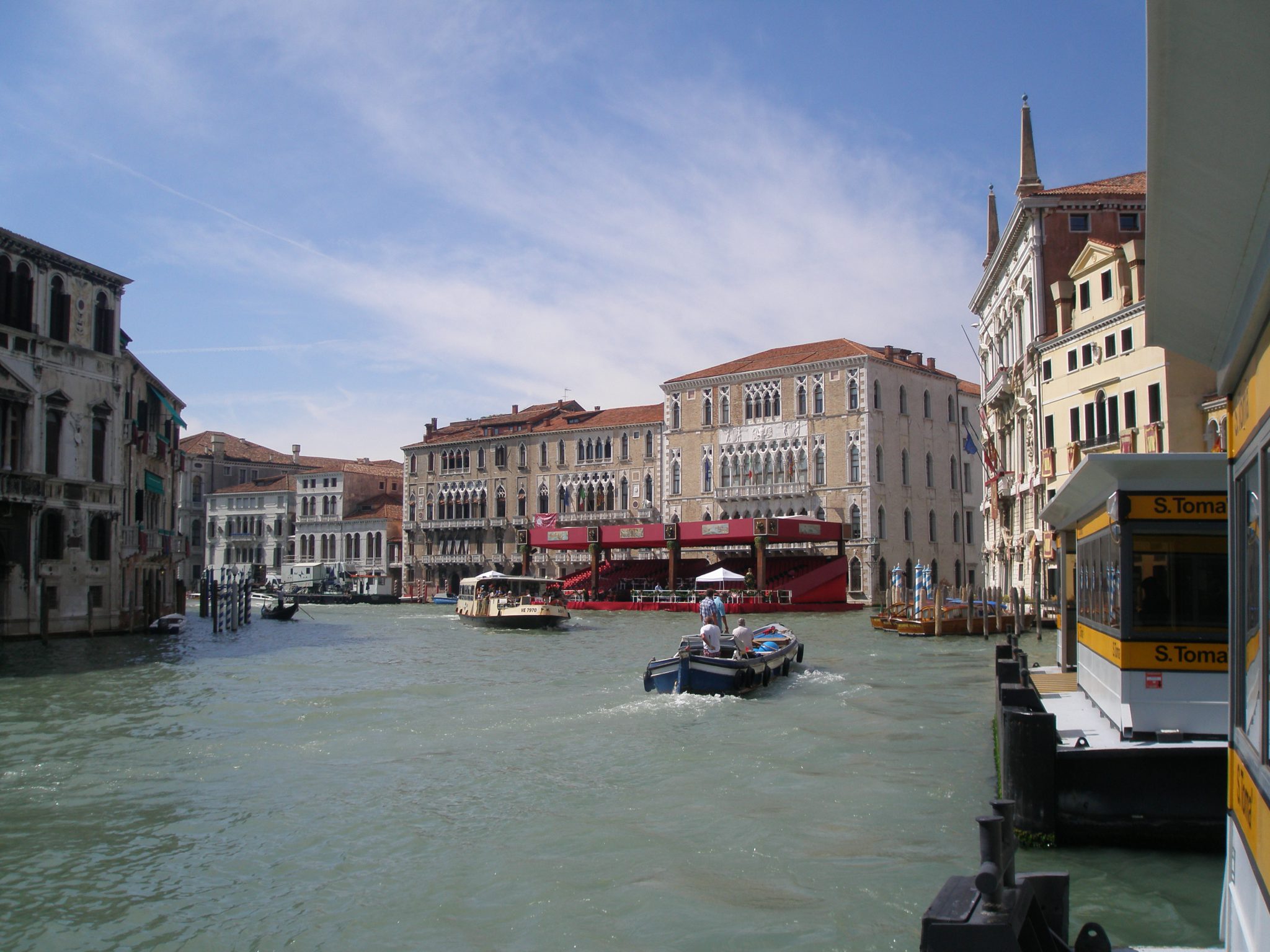
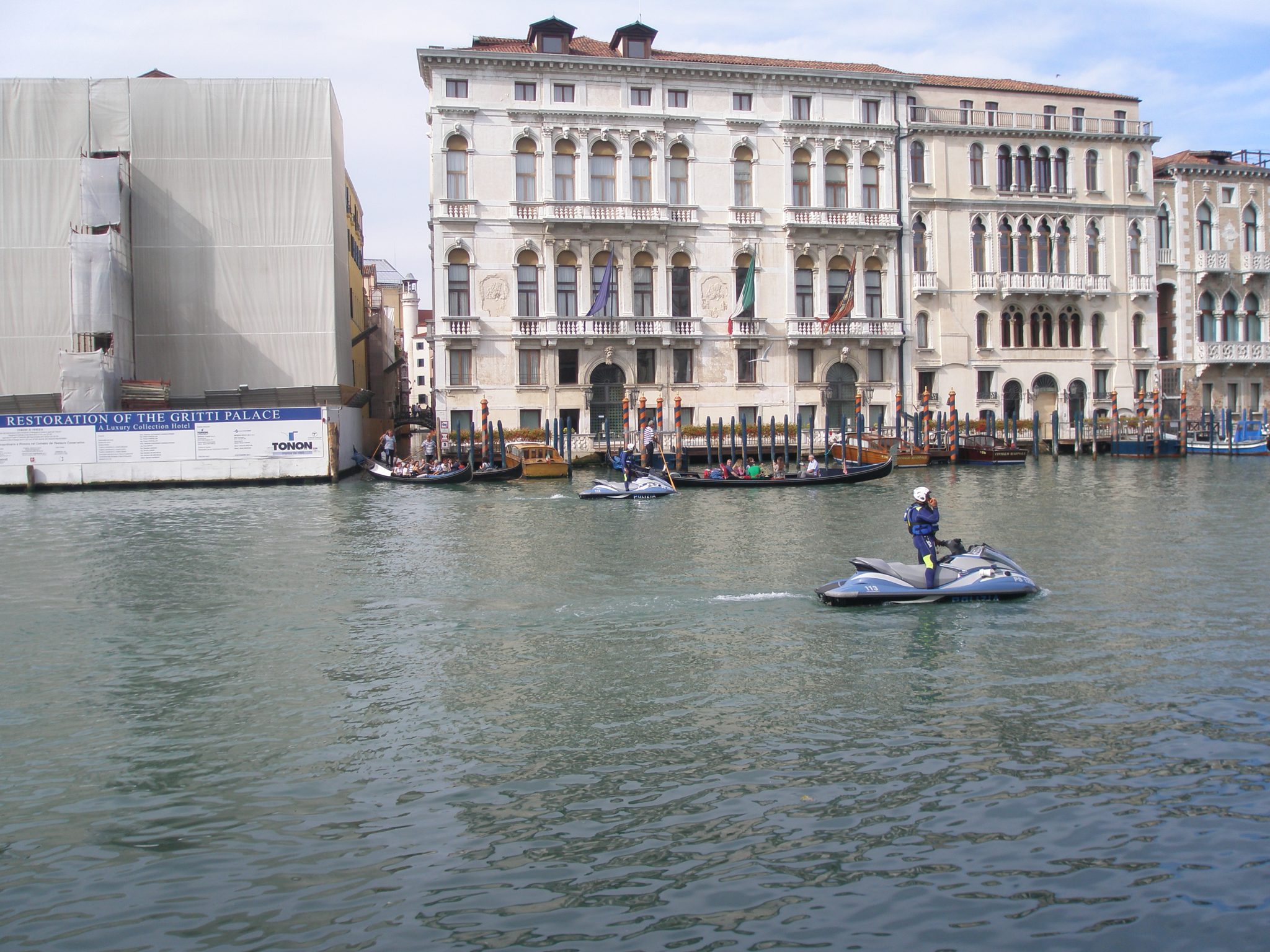

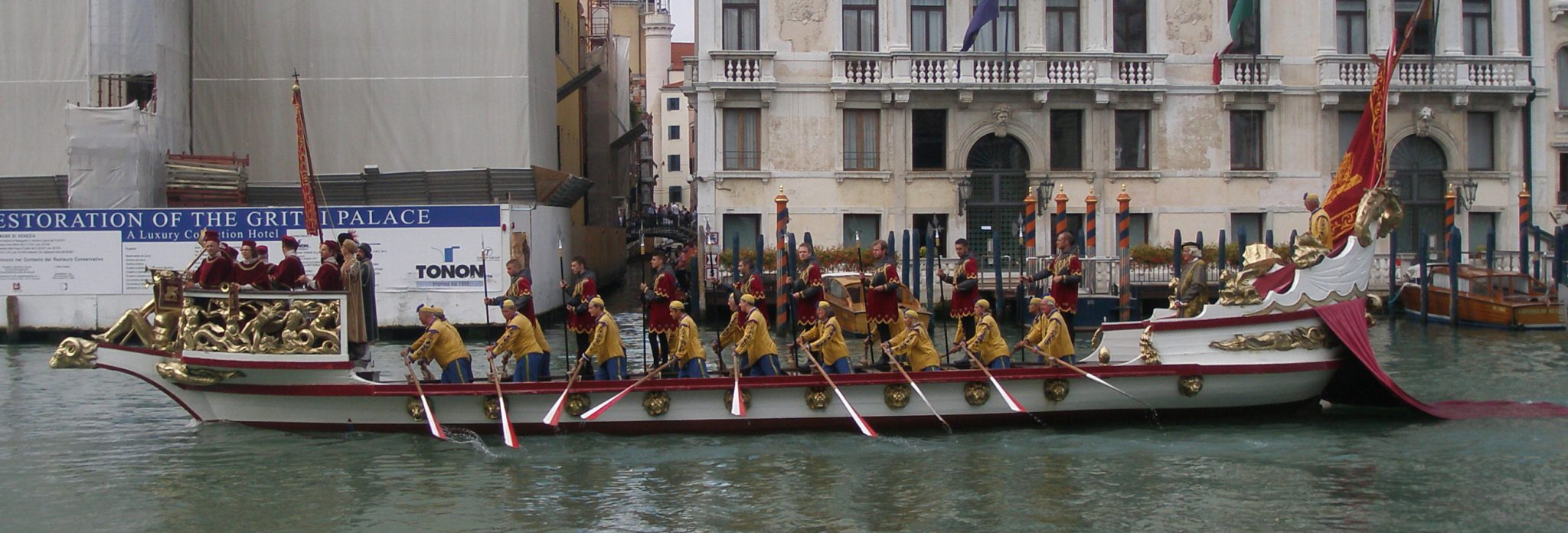
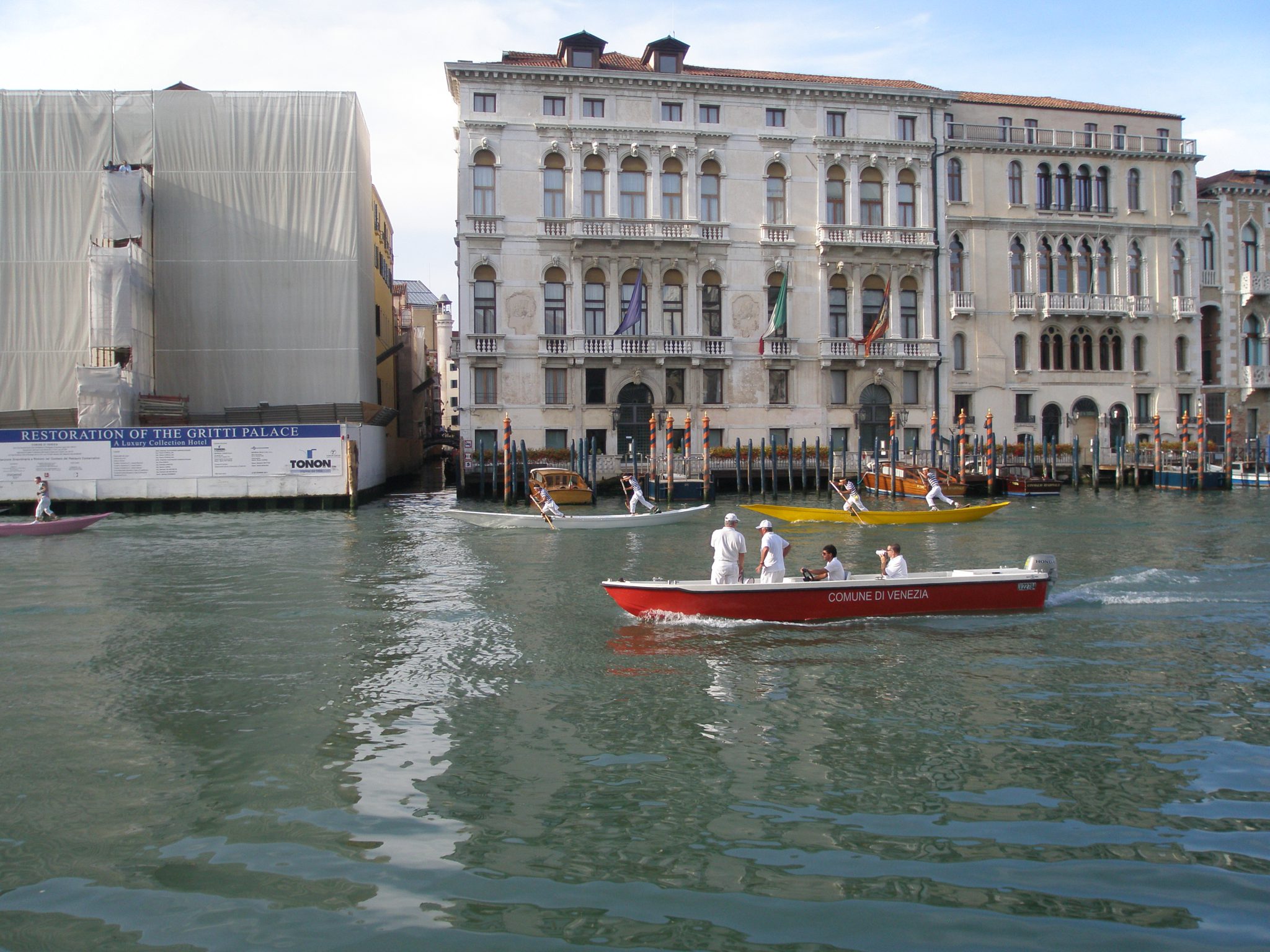

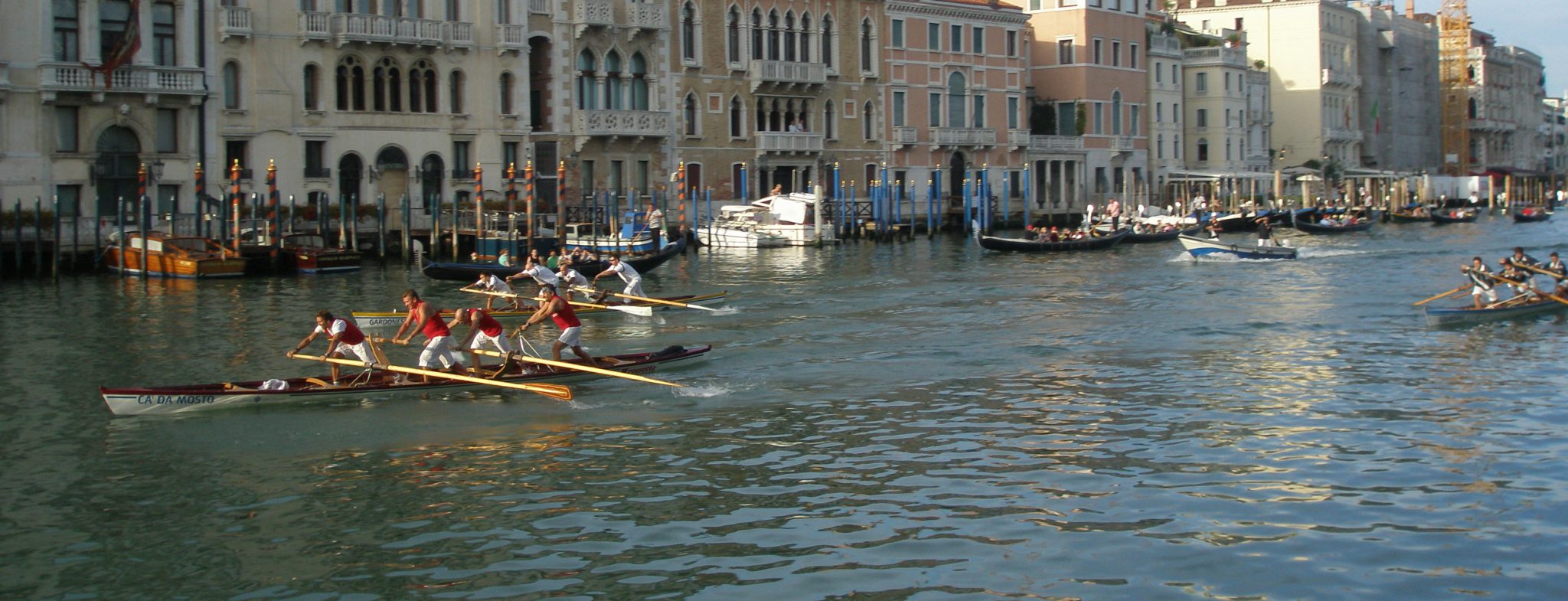

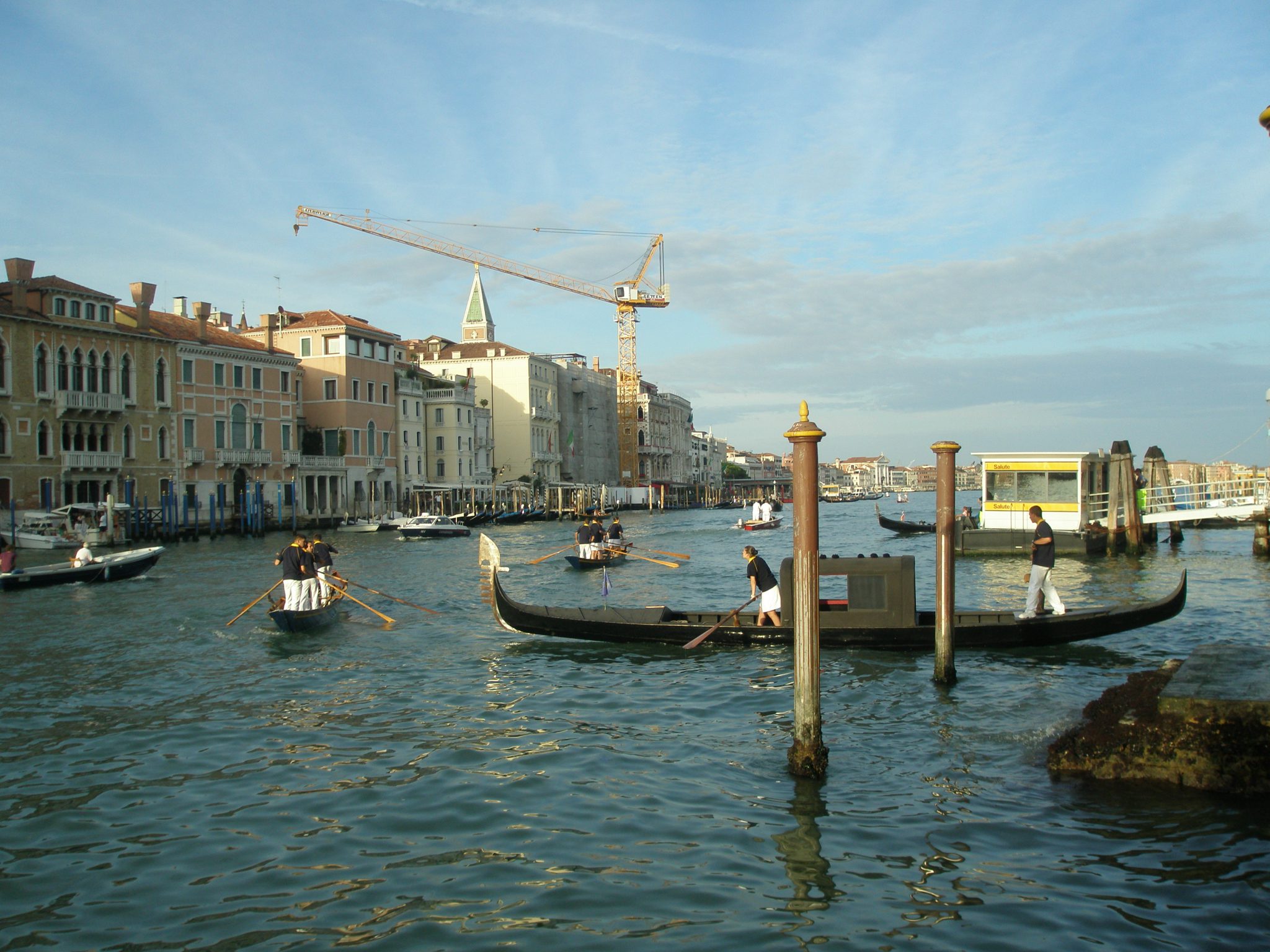
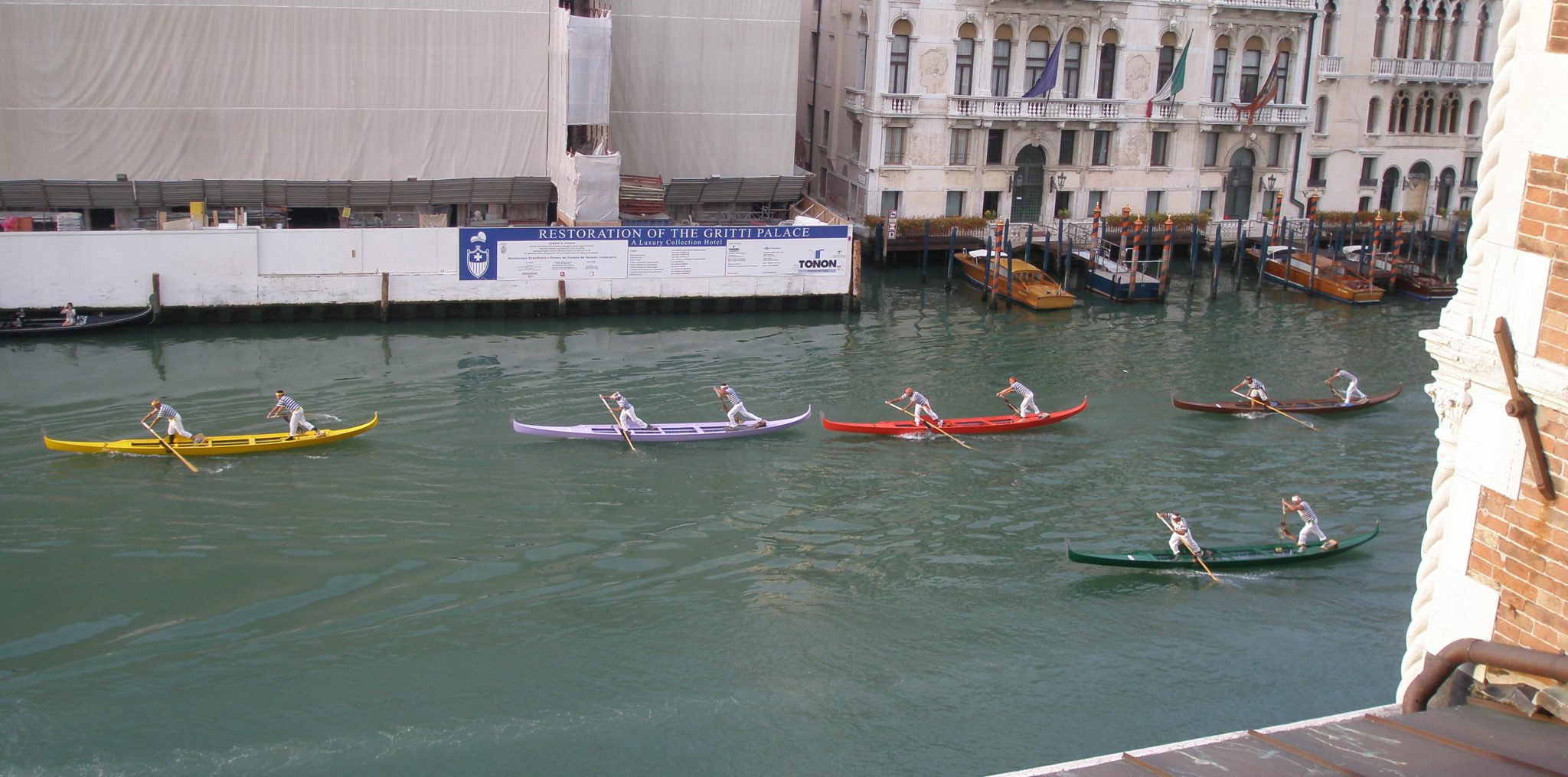
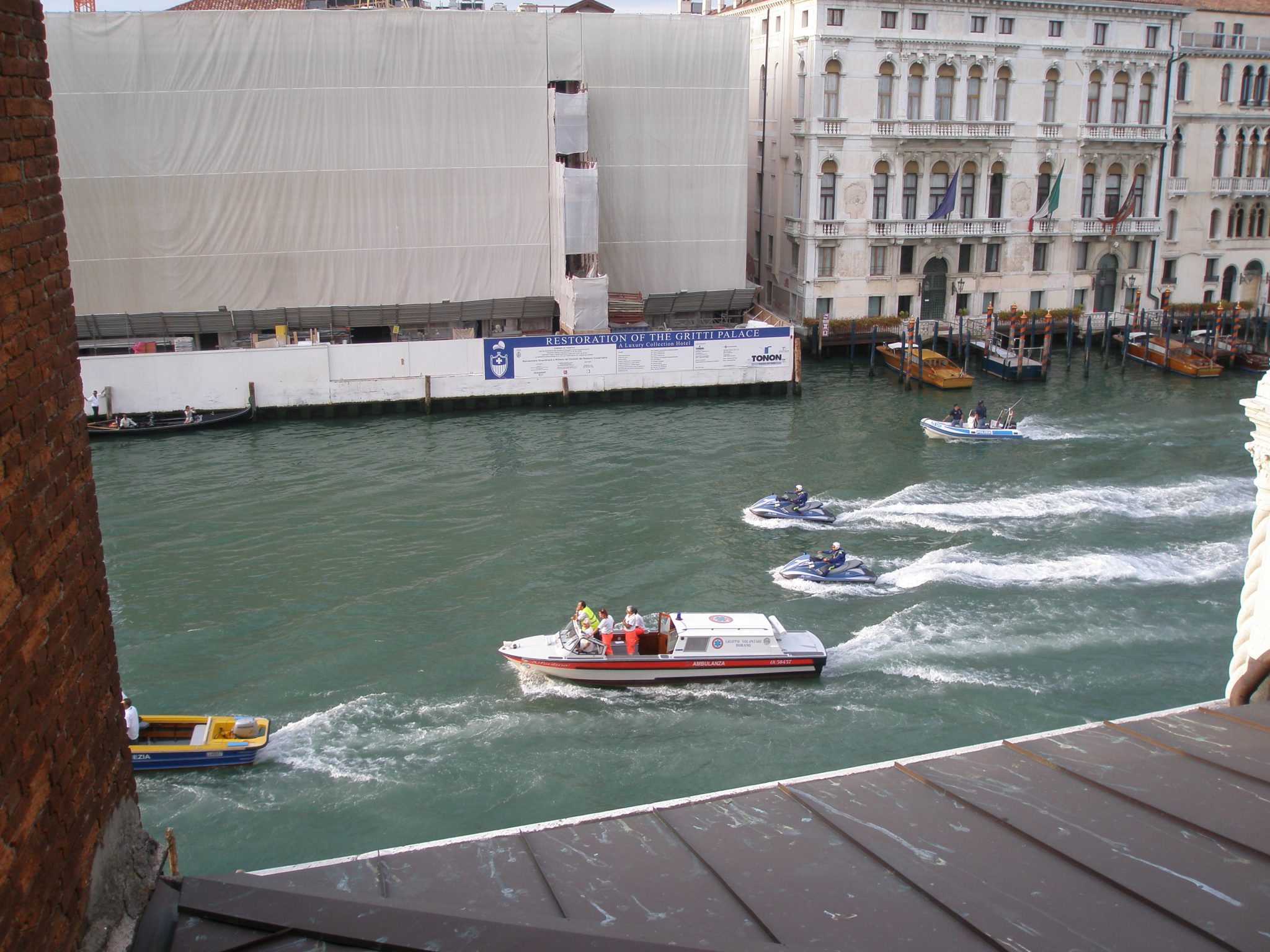
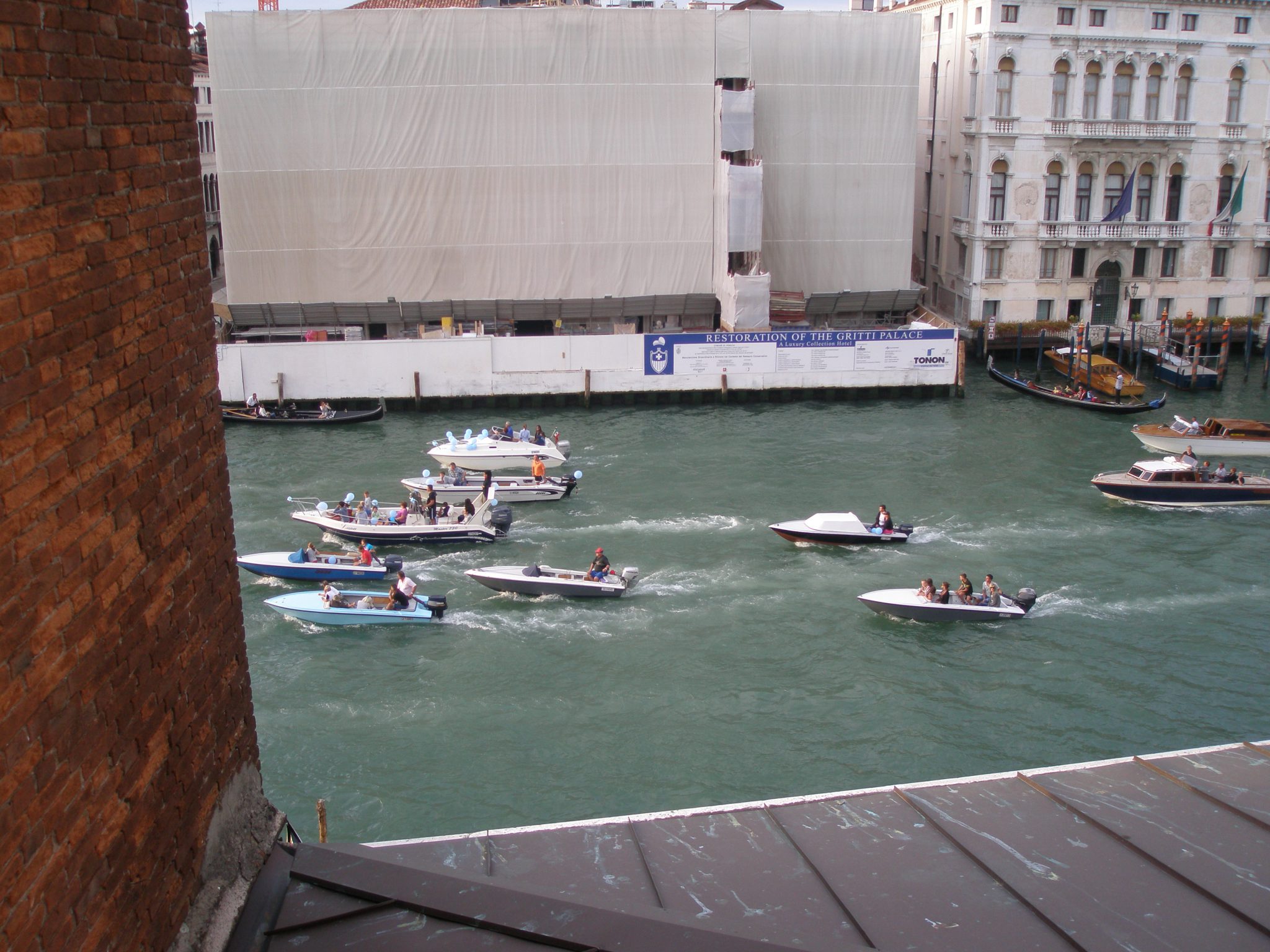
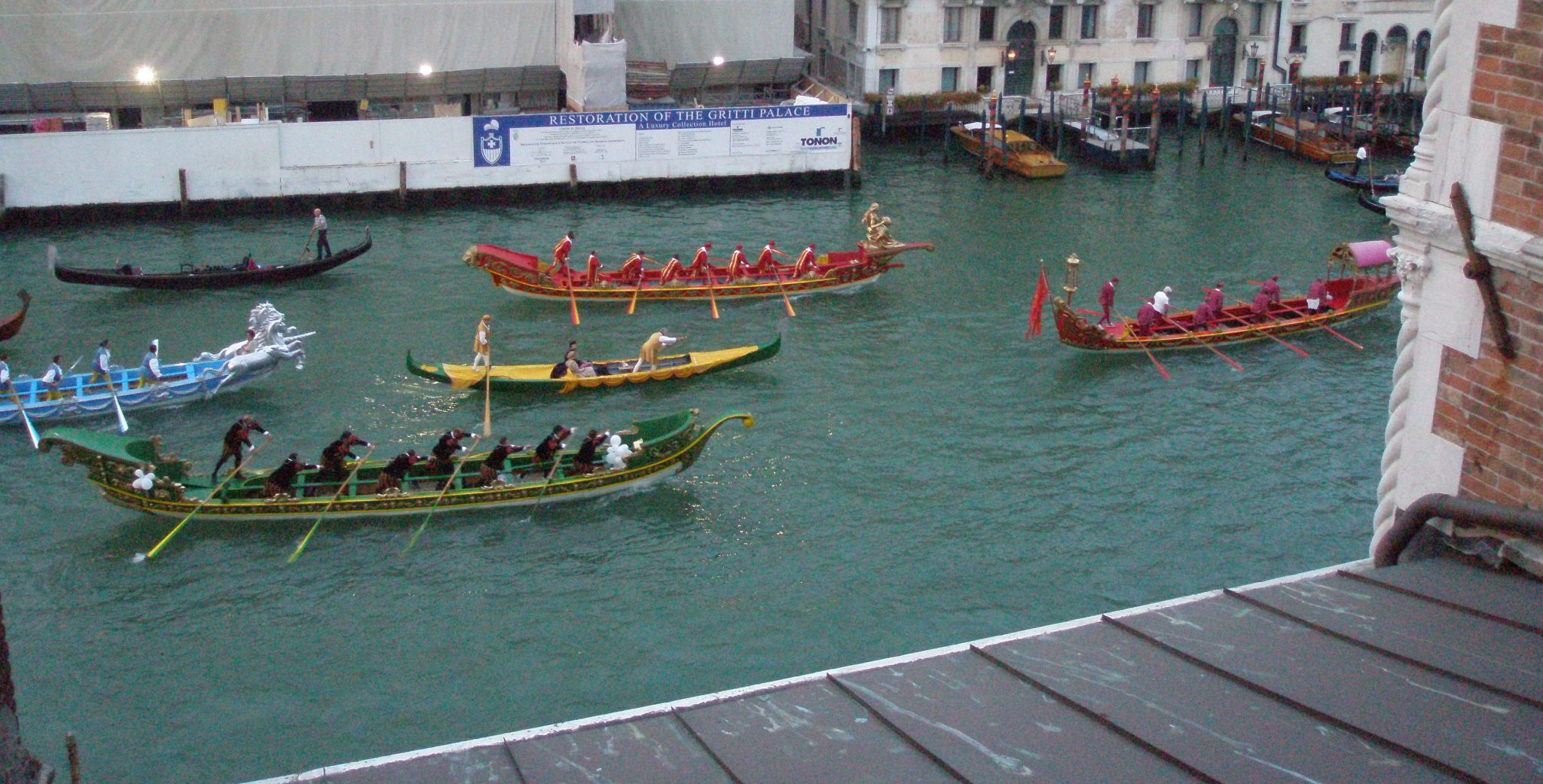
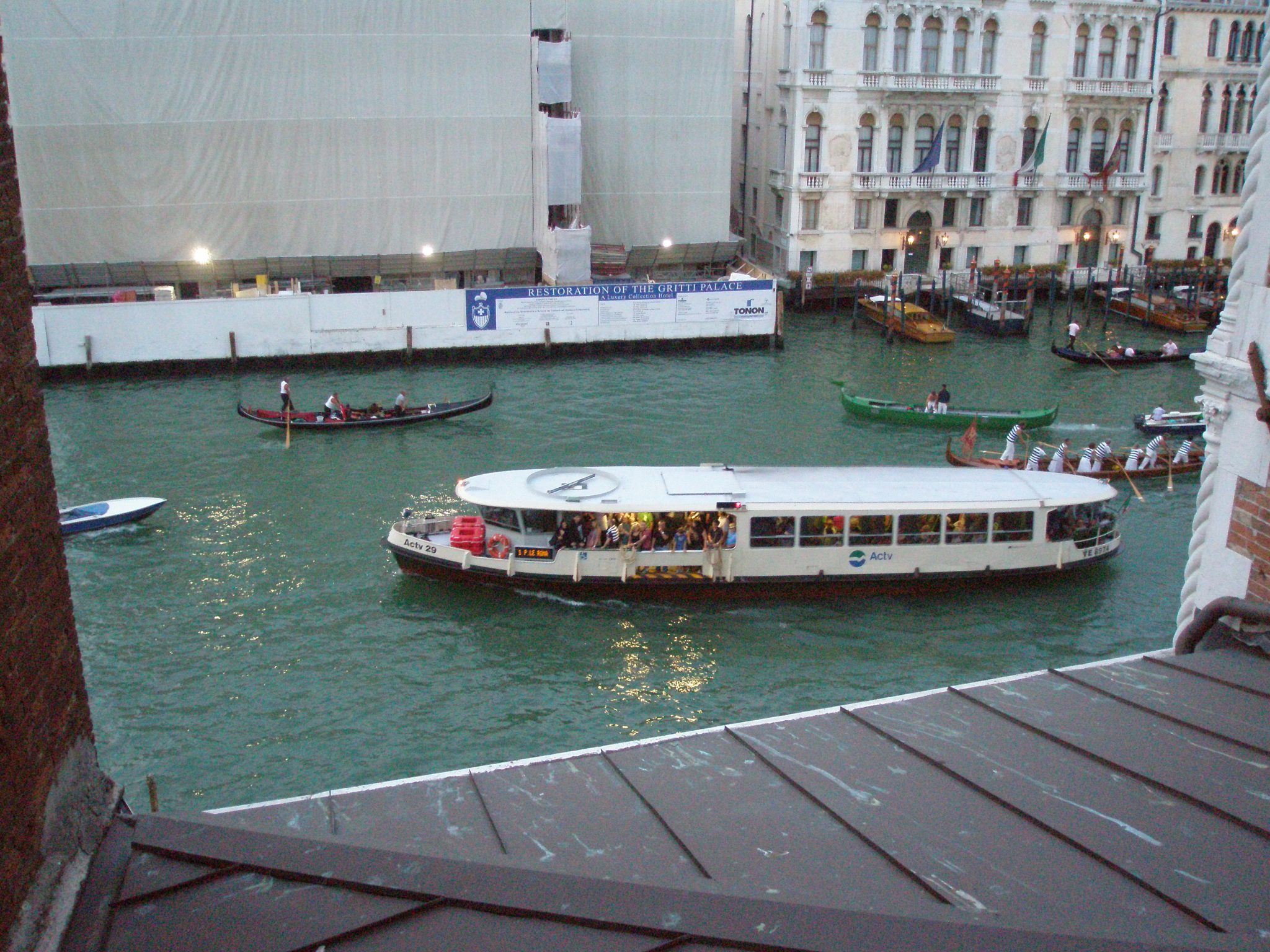
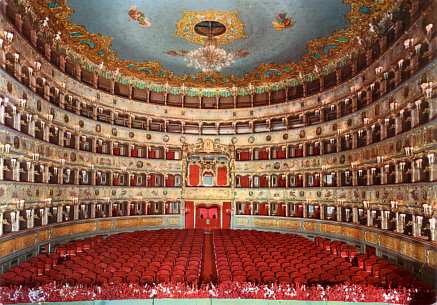
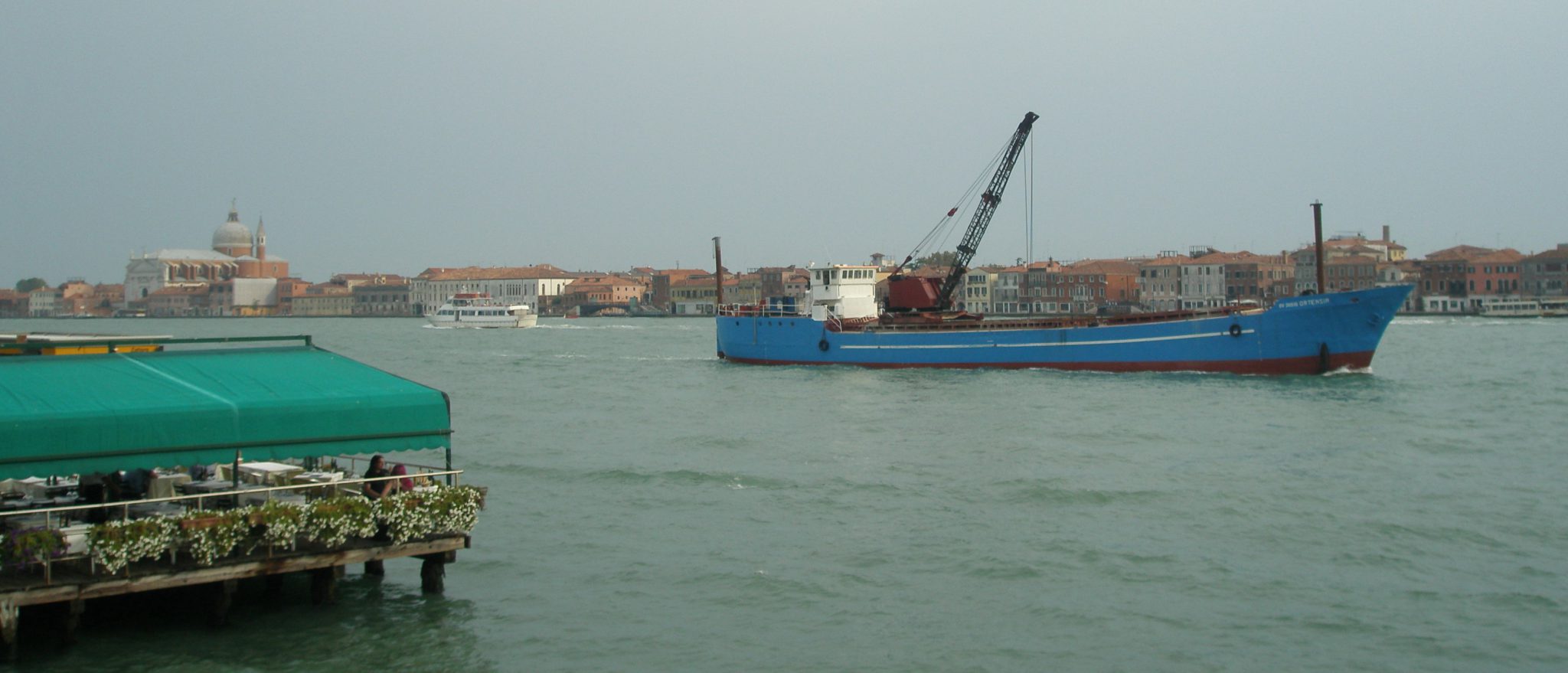
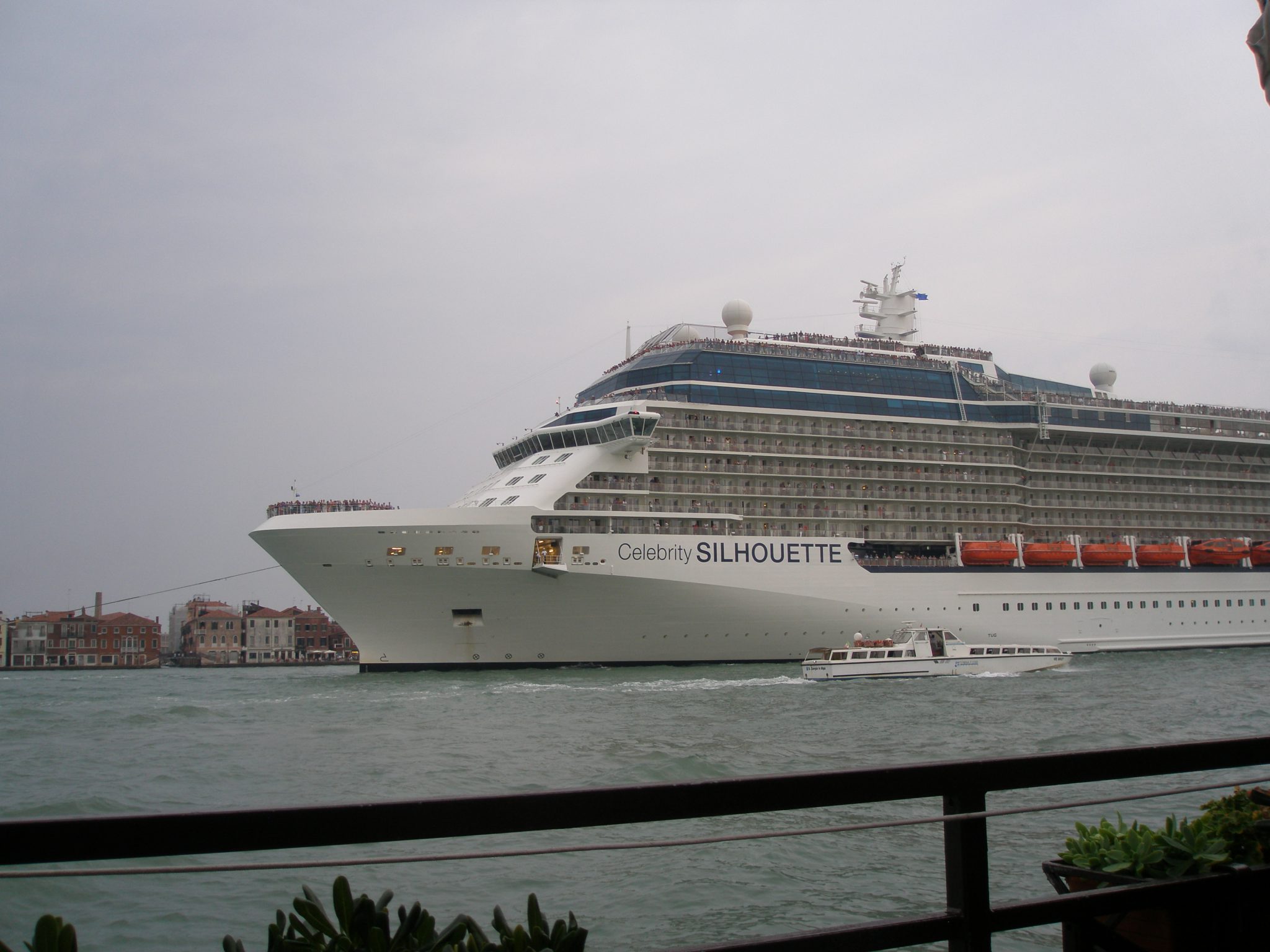

5 Responses to Venice–The Centurion Palace Hotel; Architecture Biennale; The Historic Regatta.